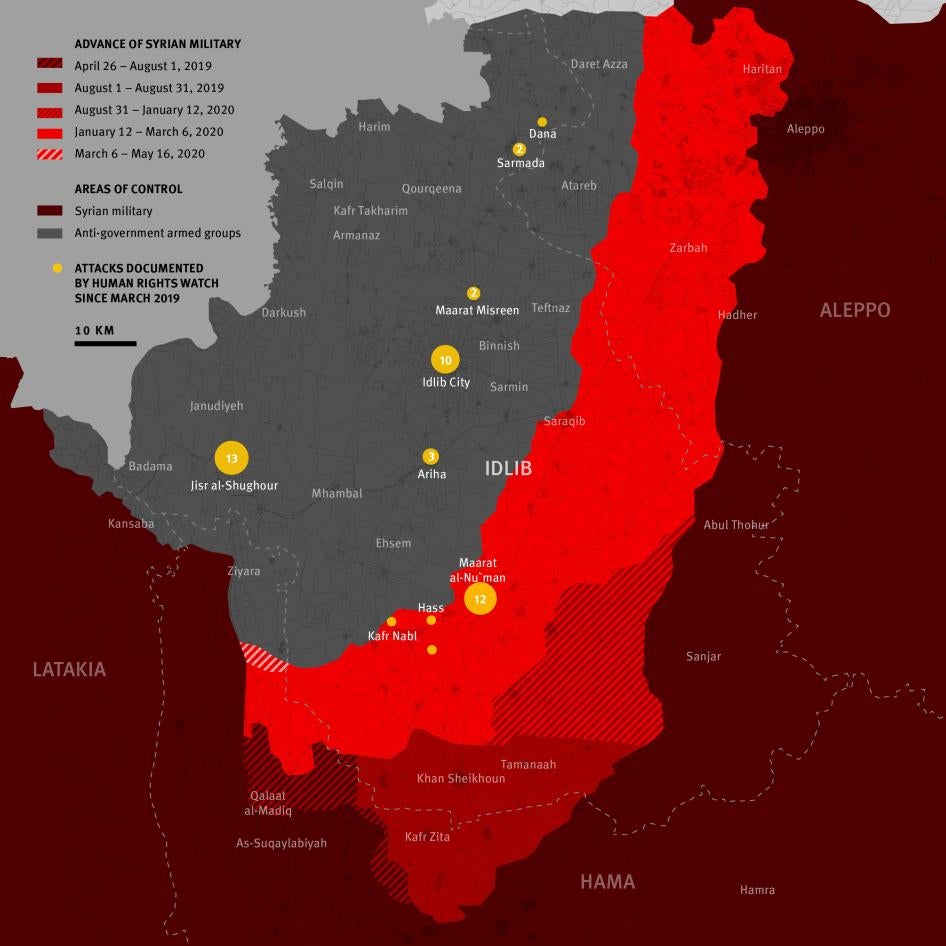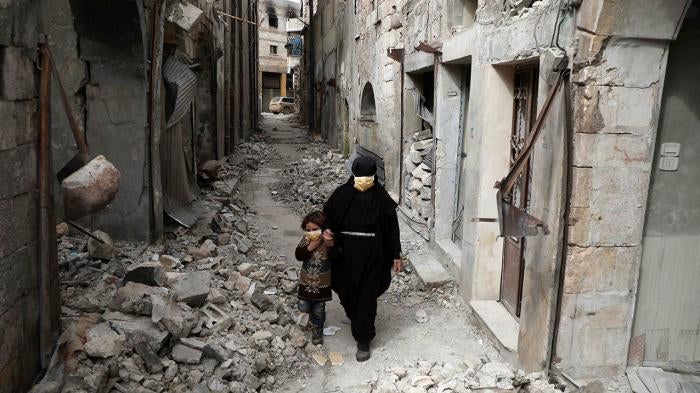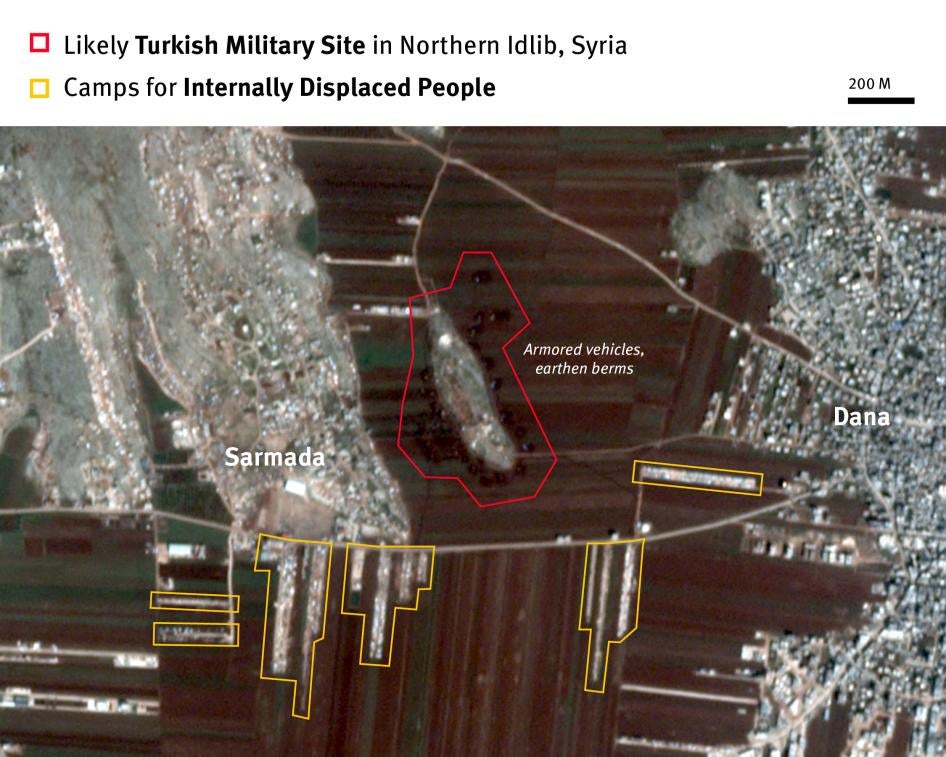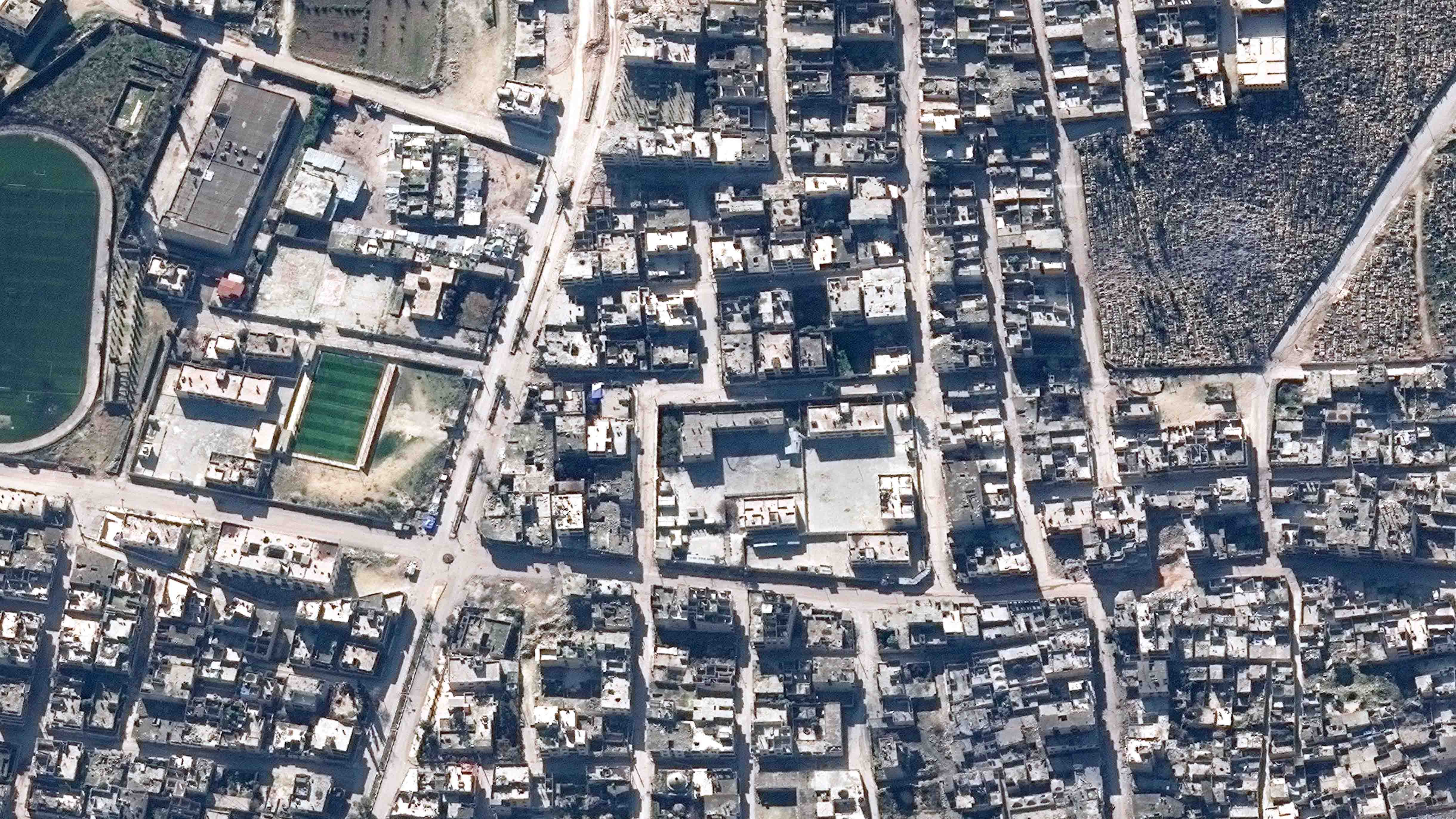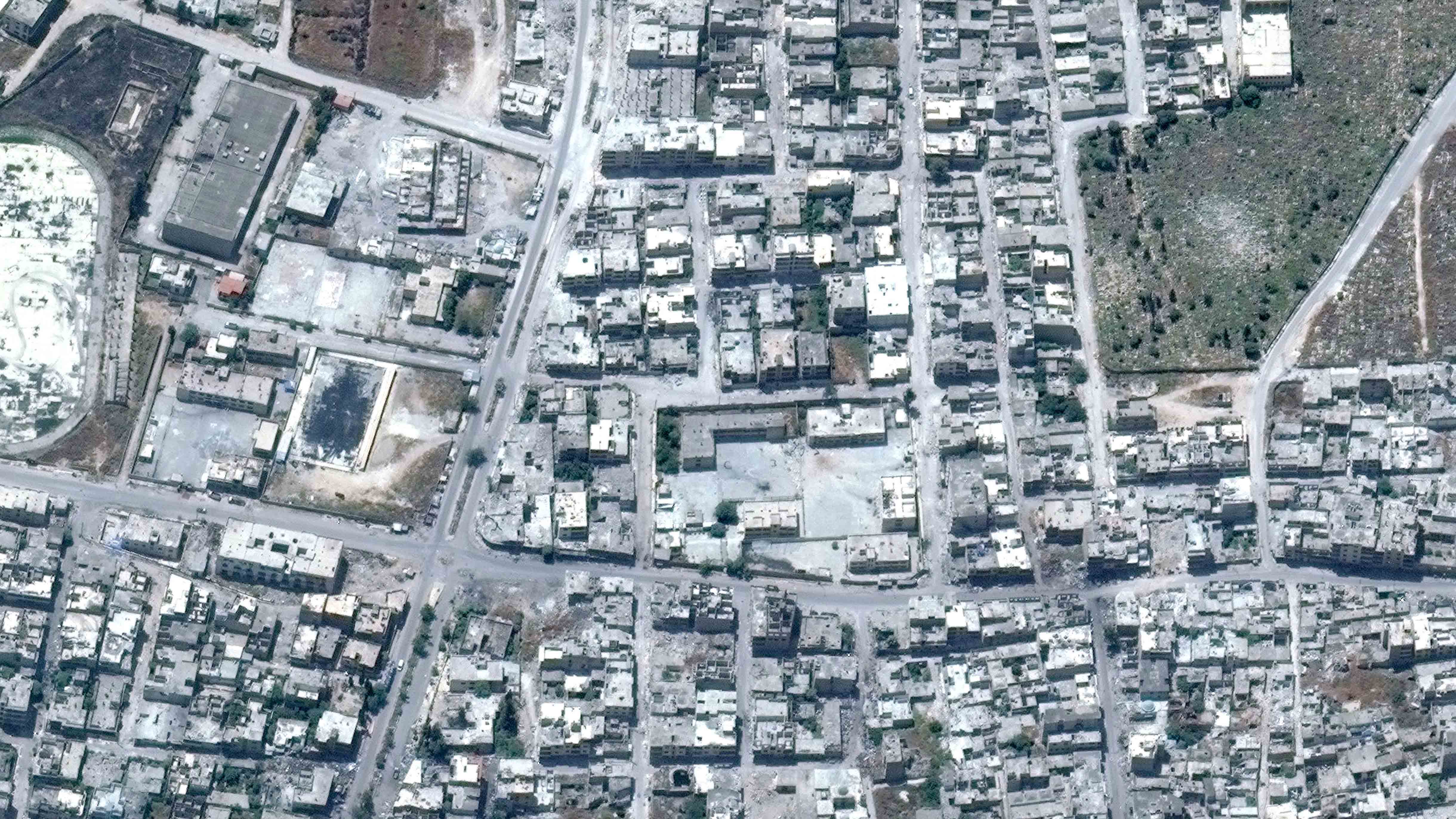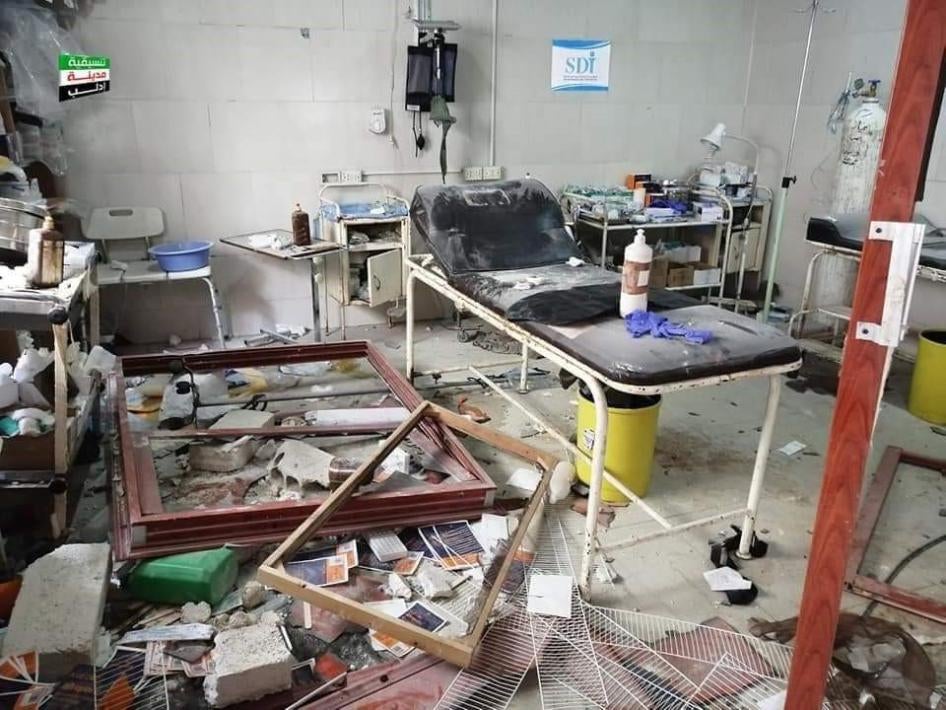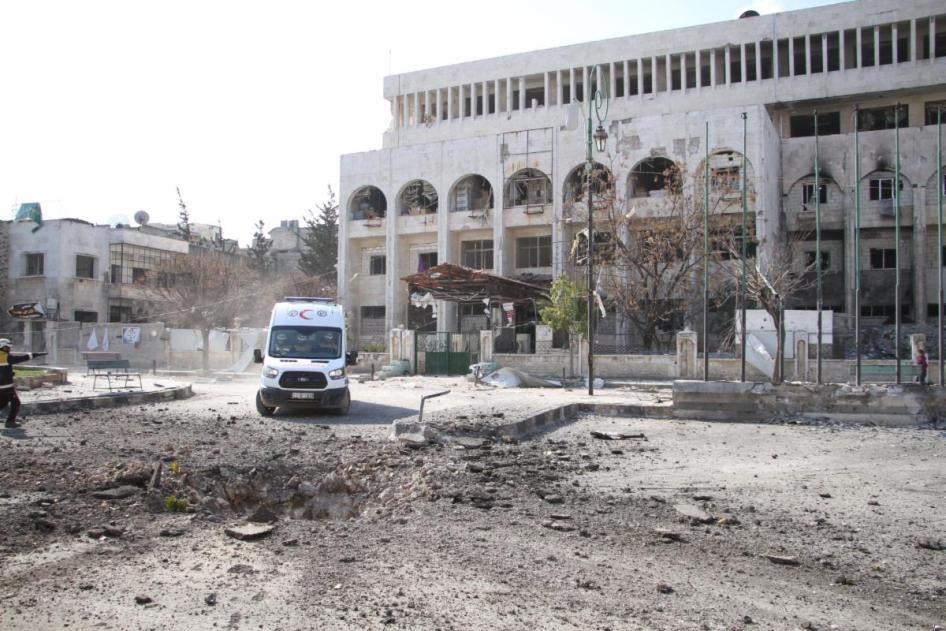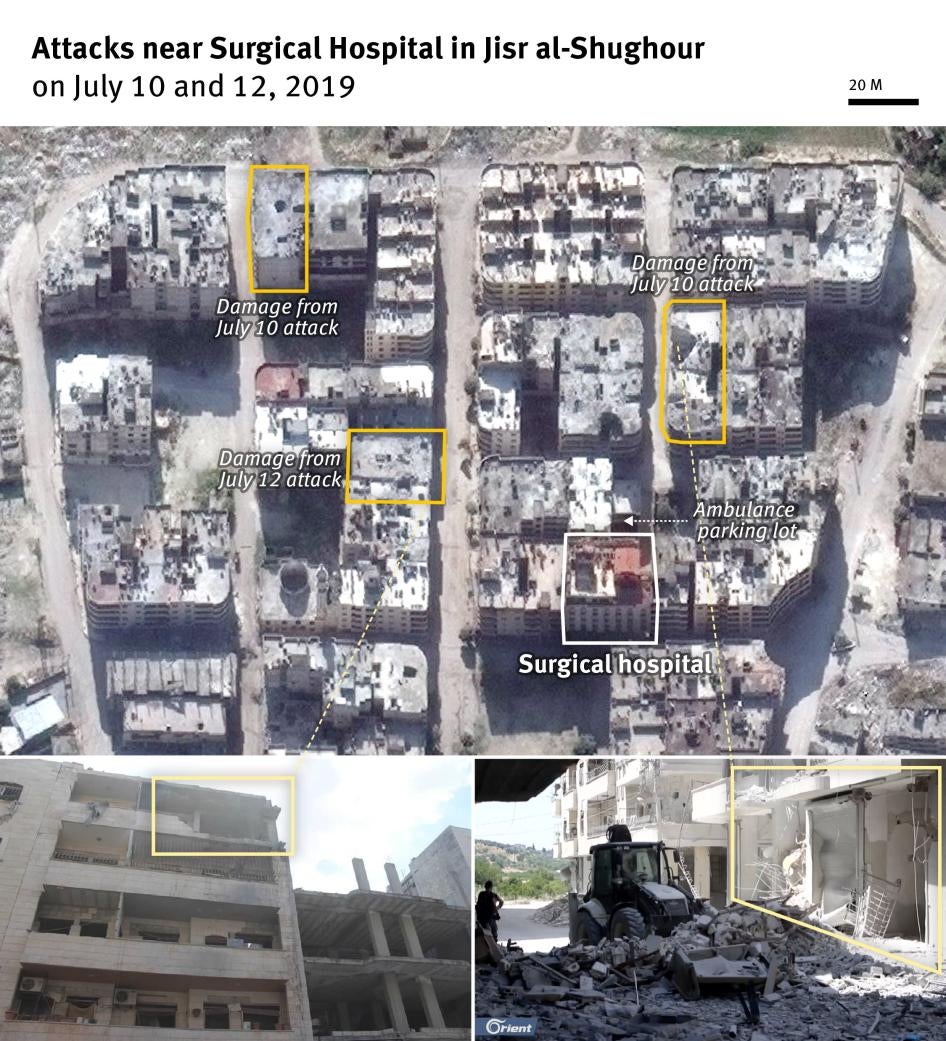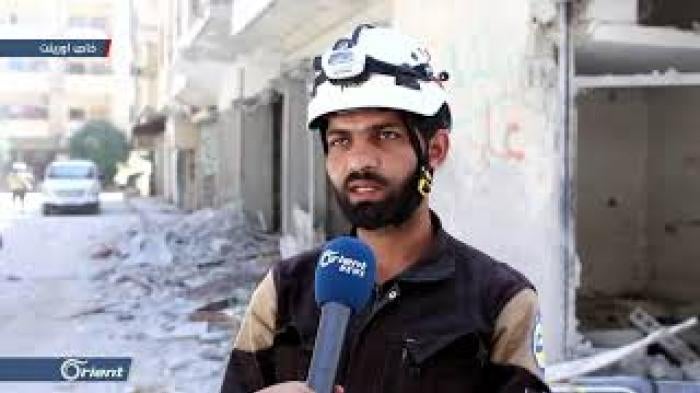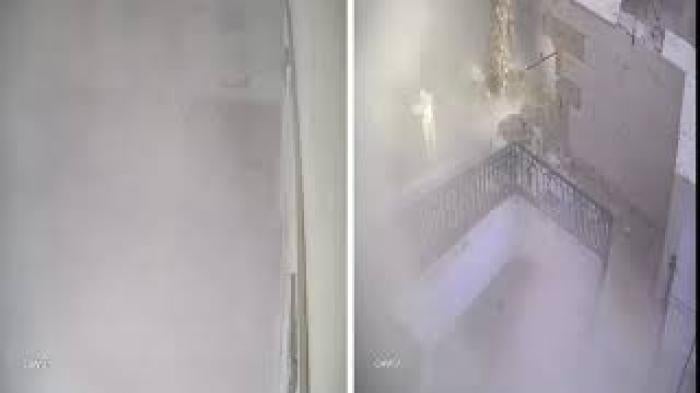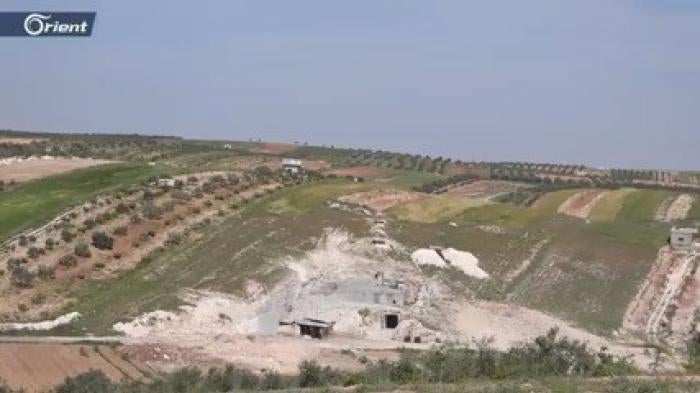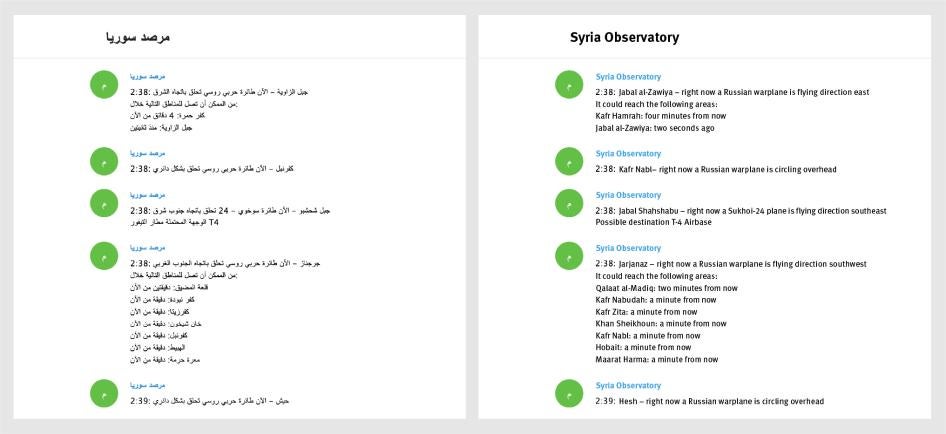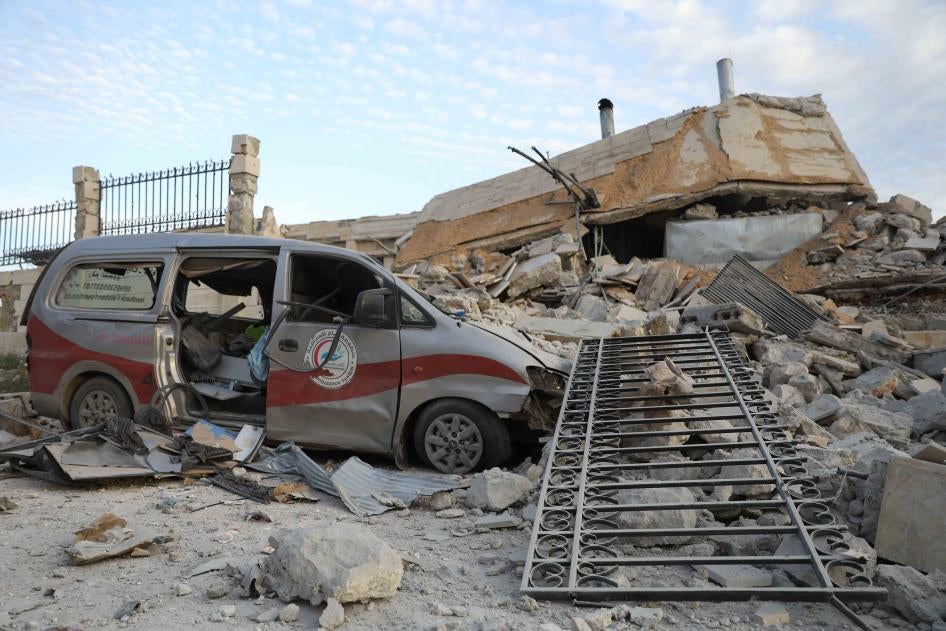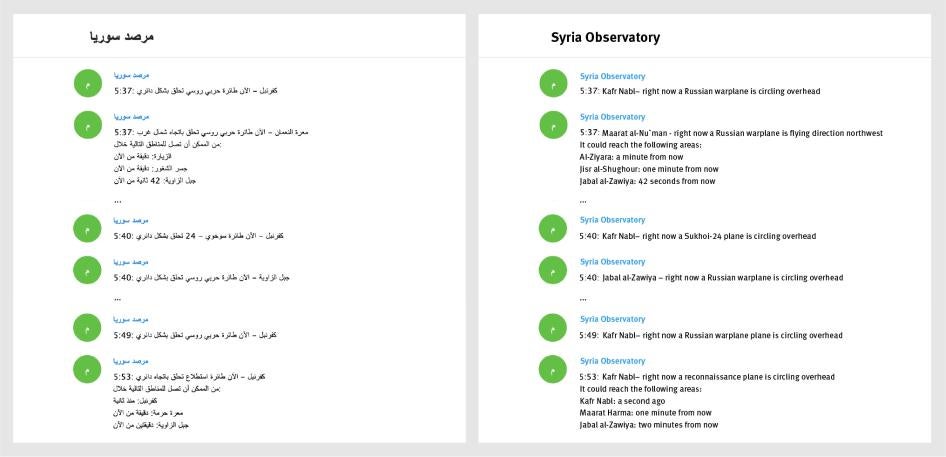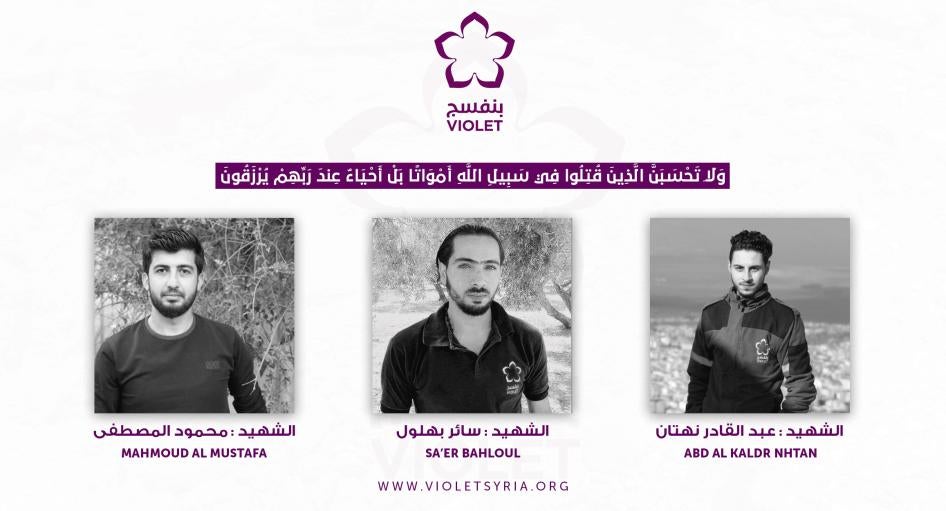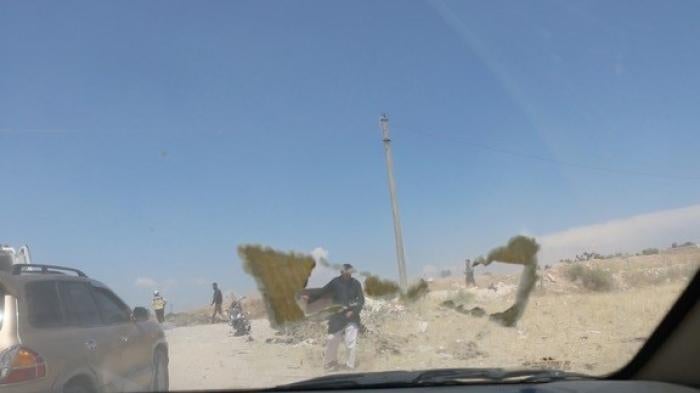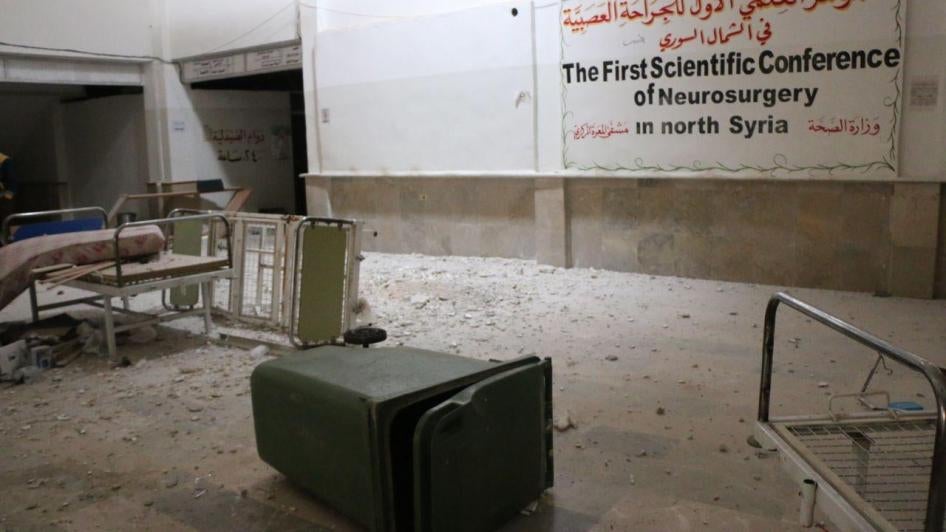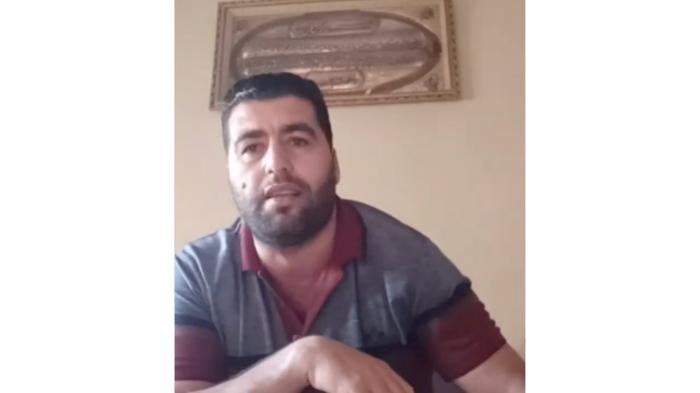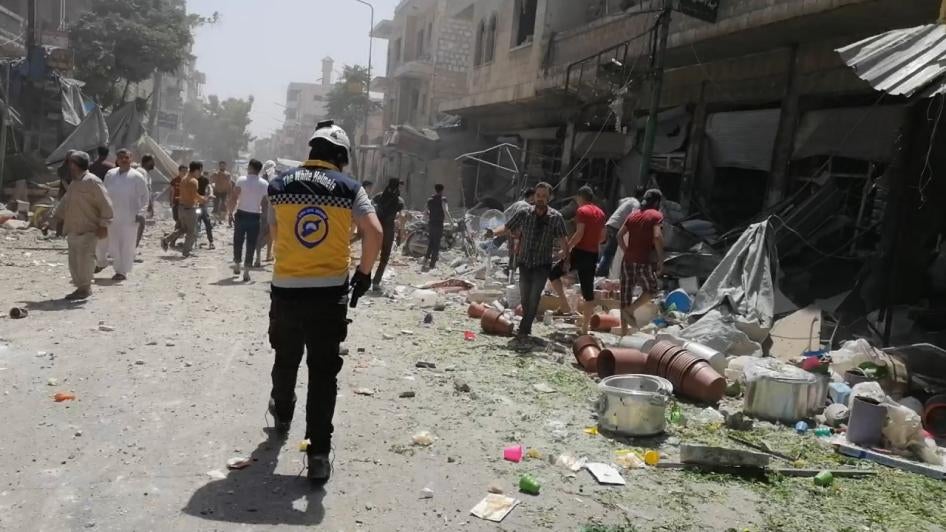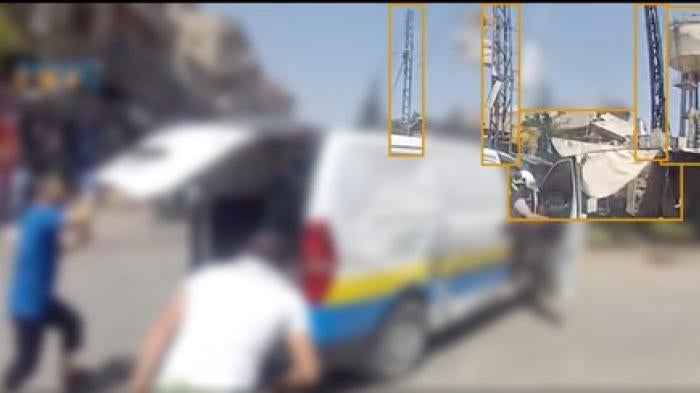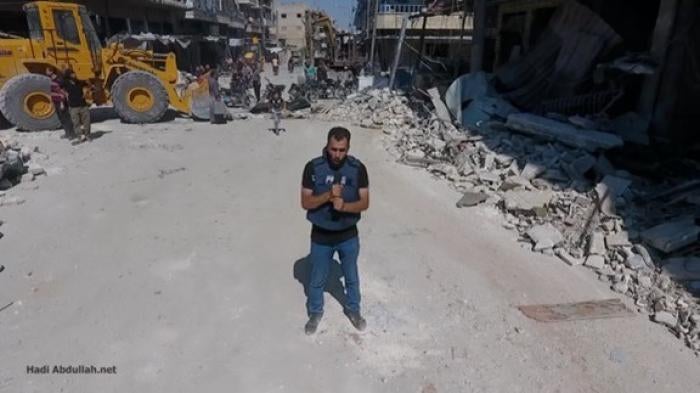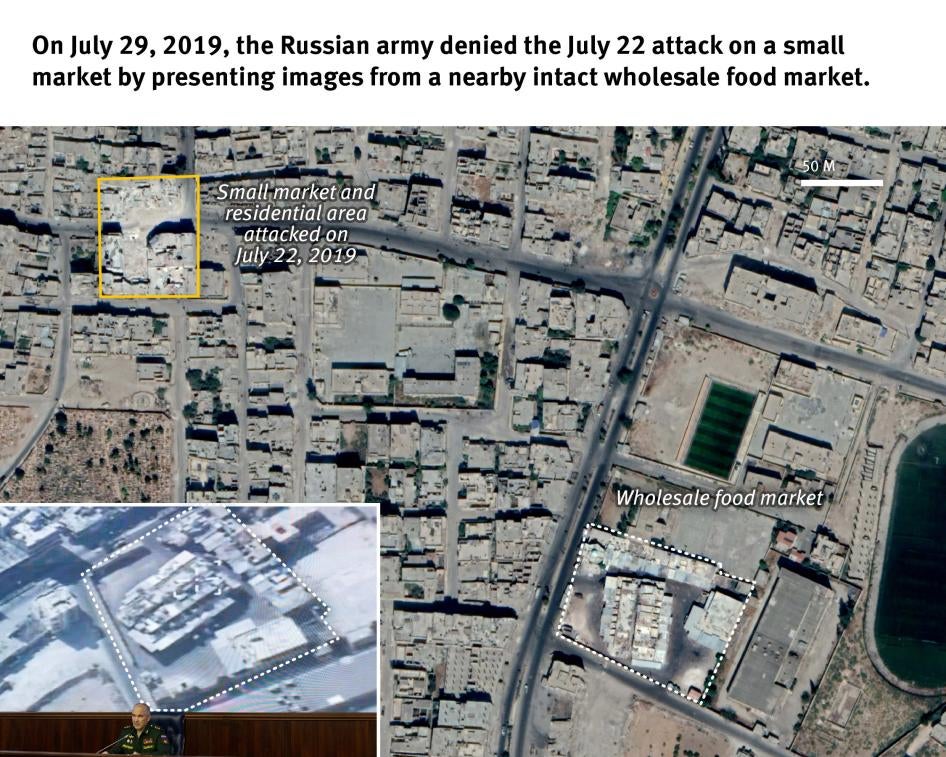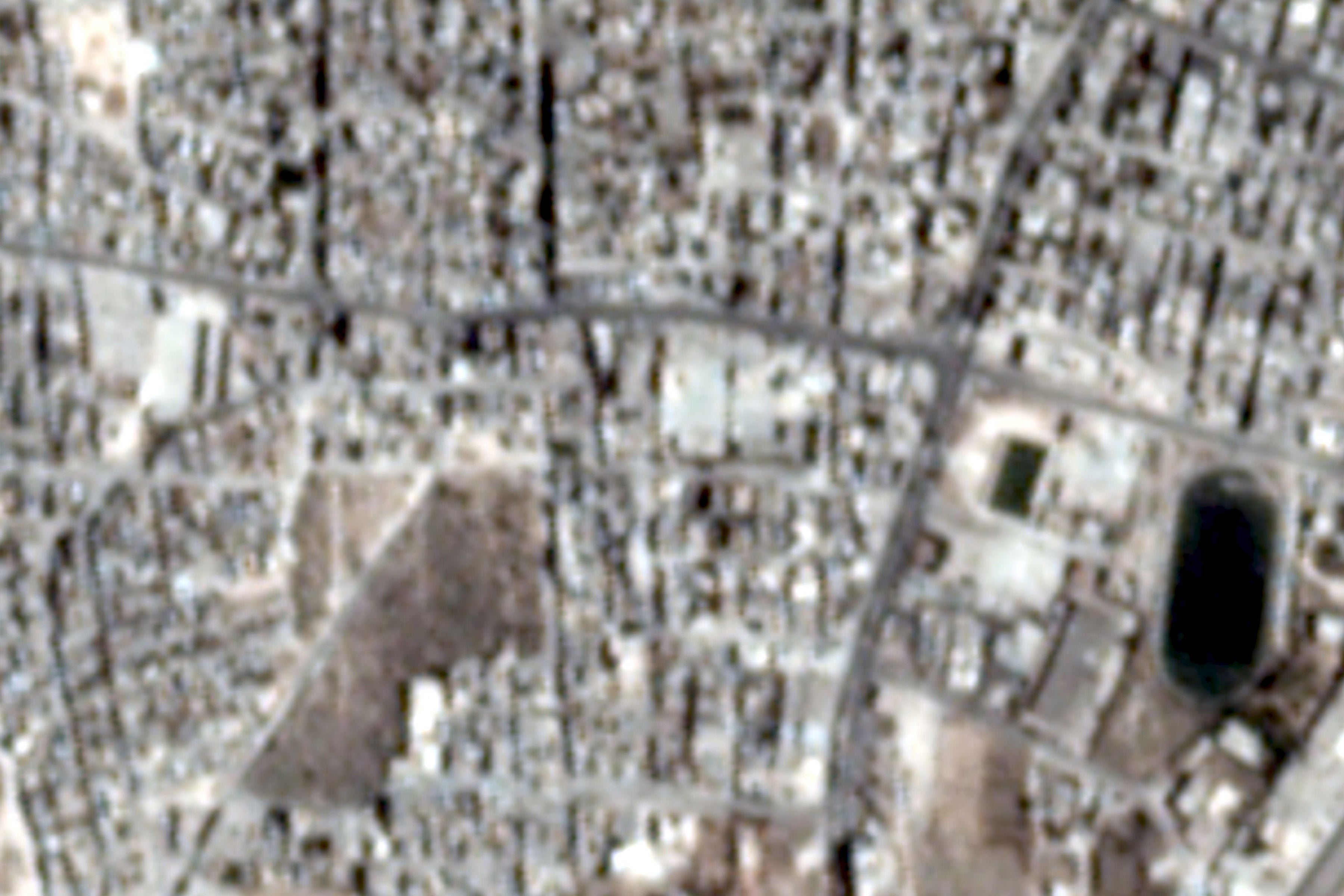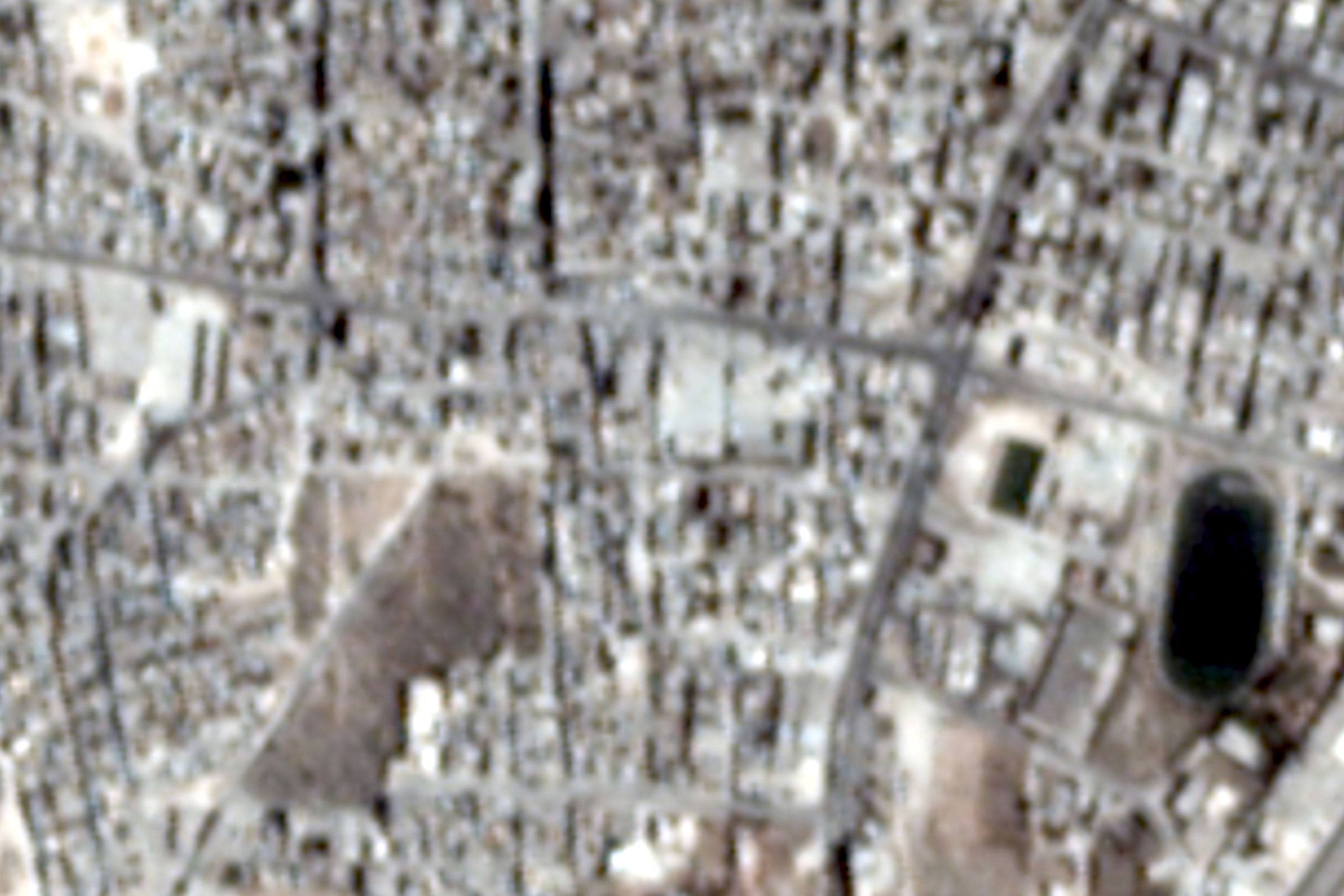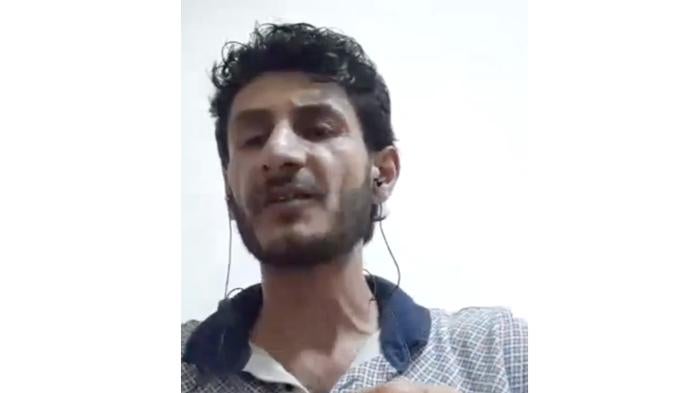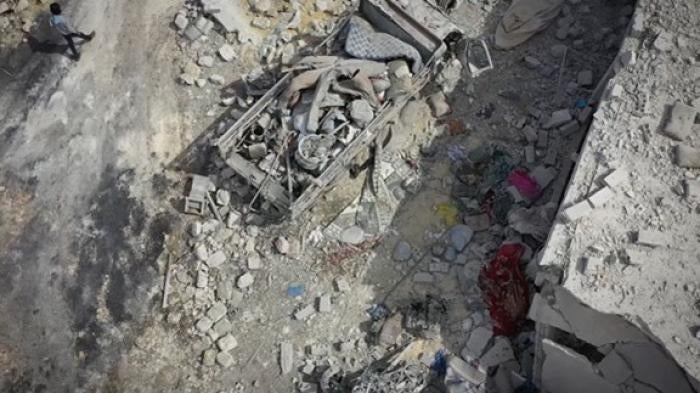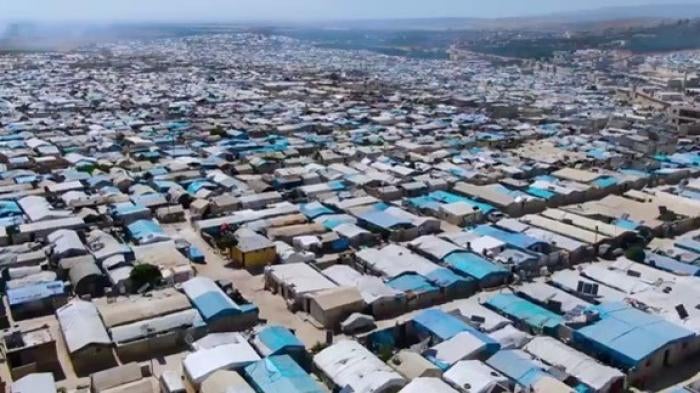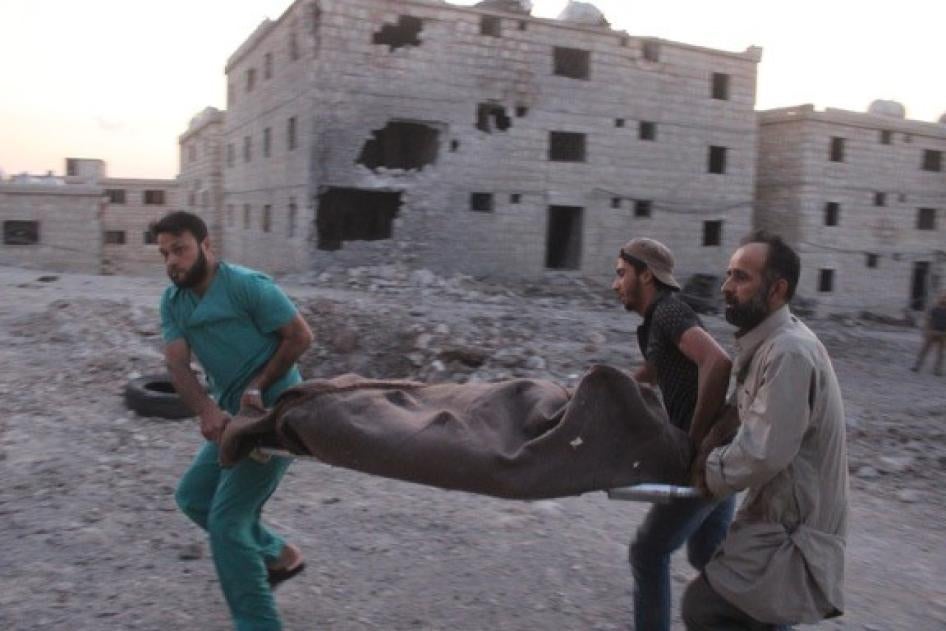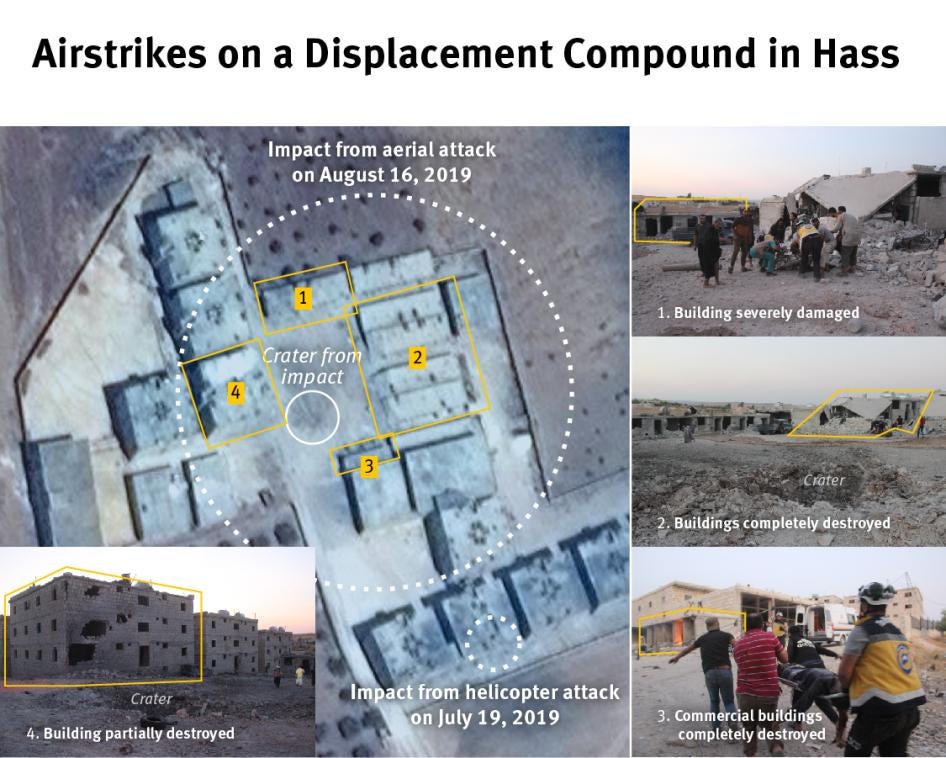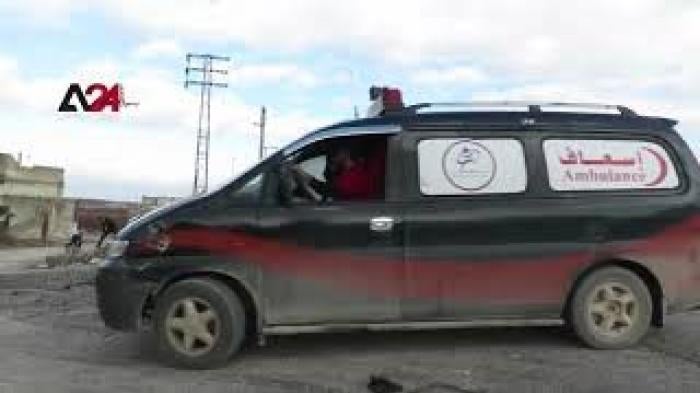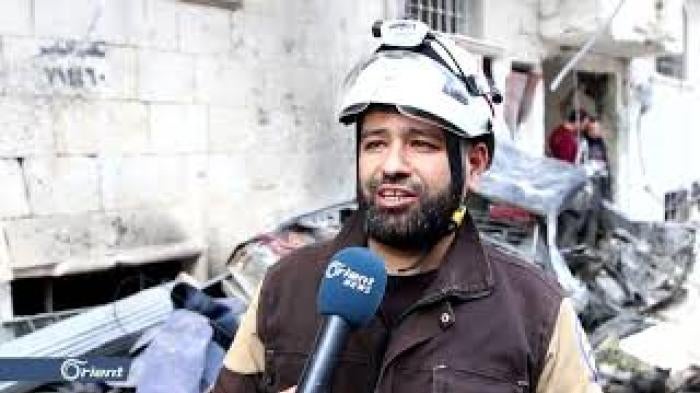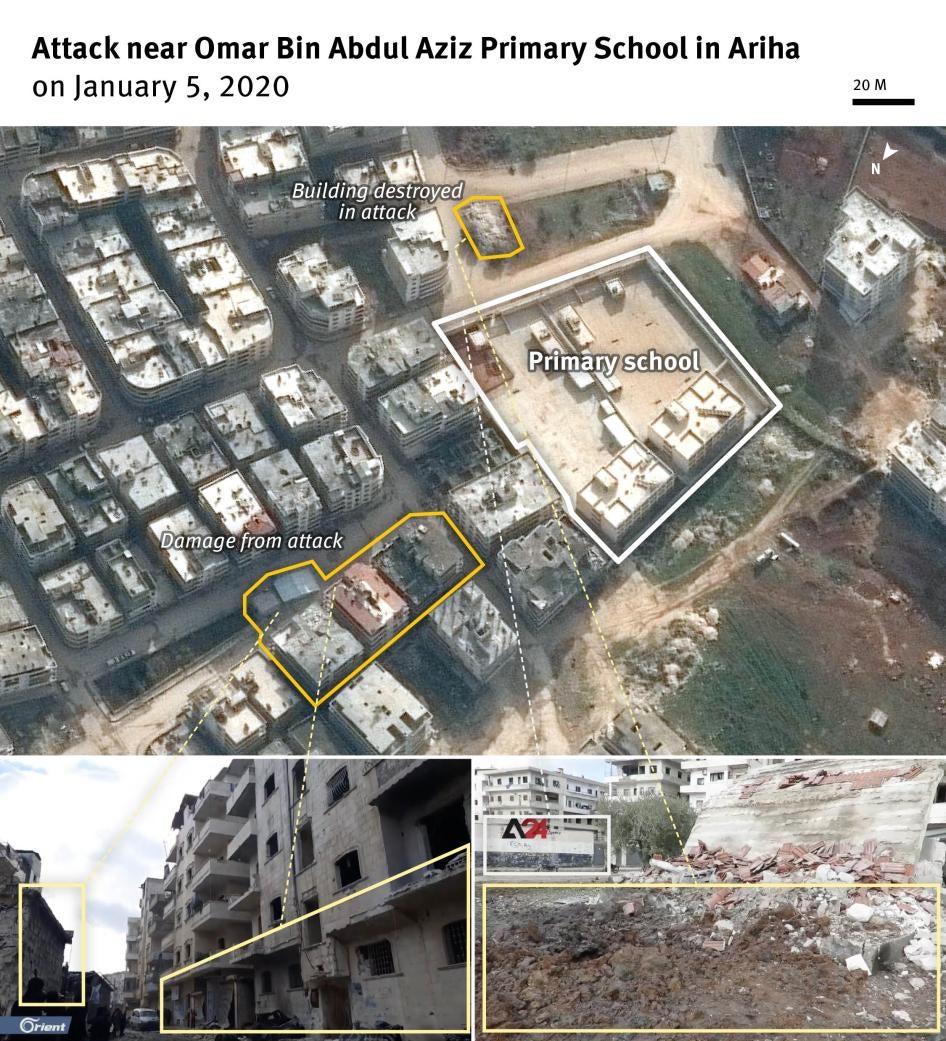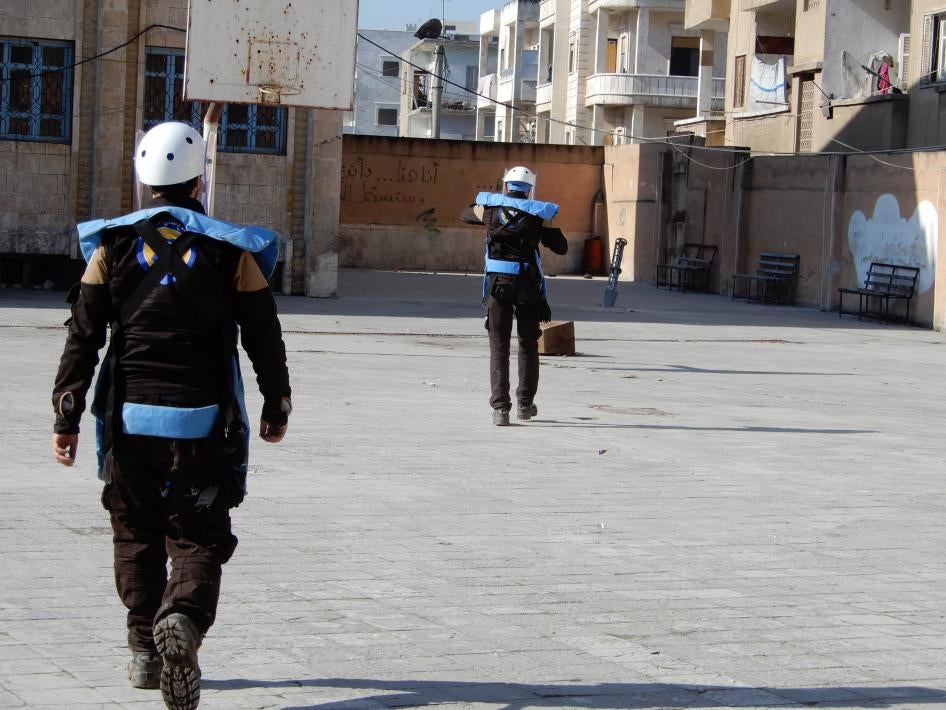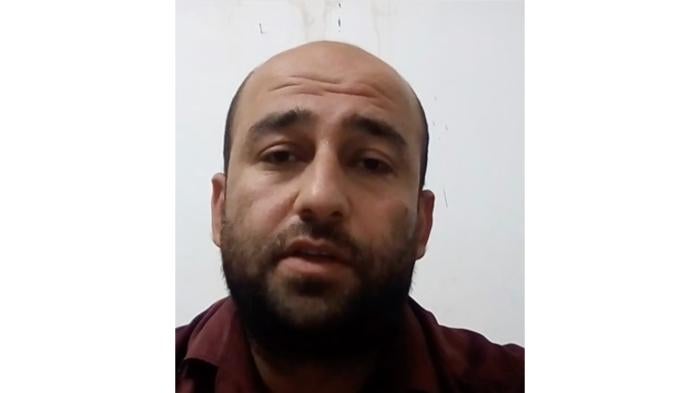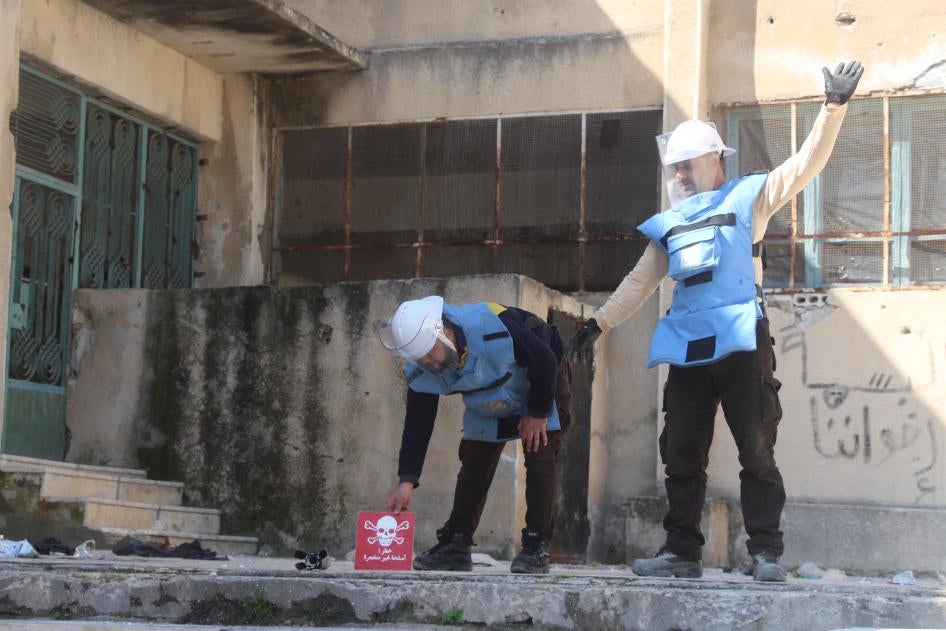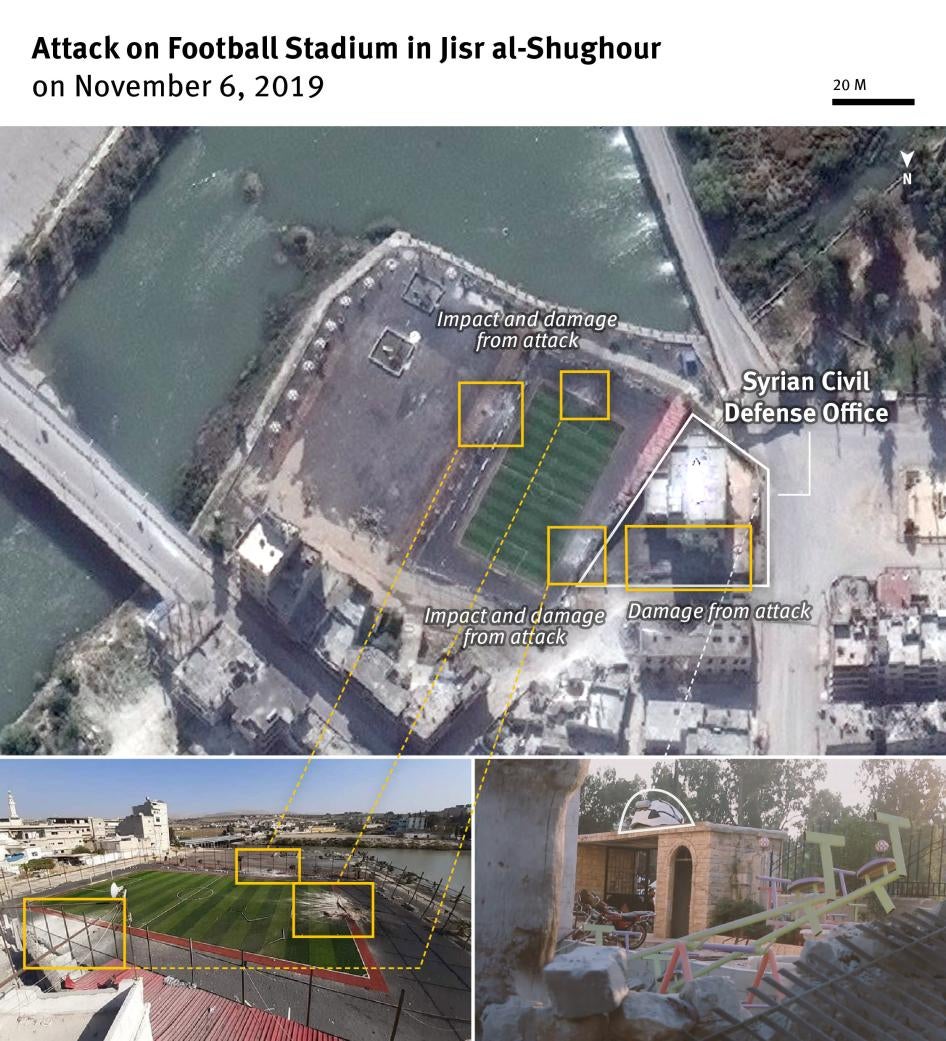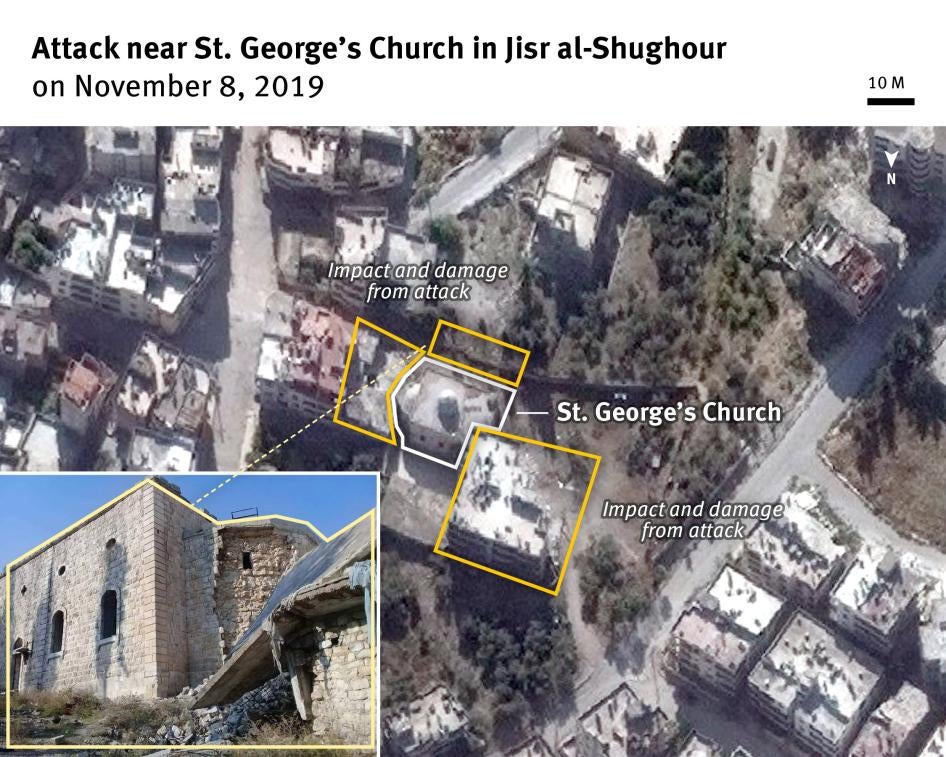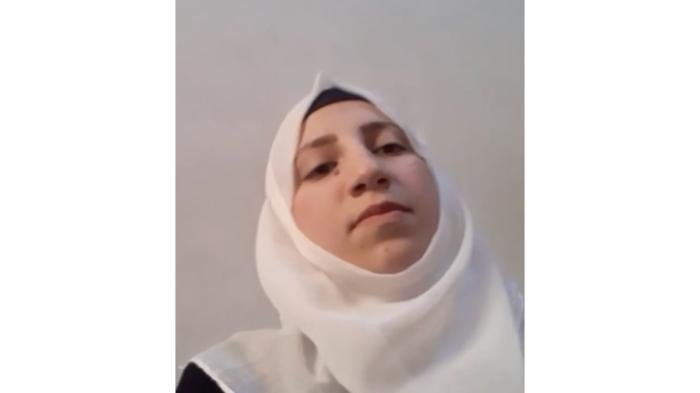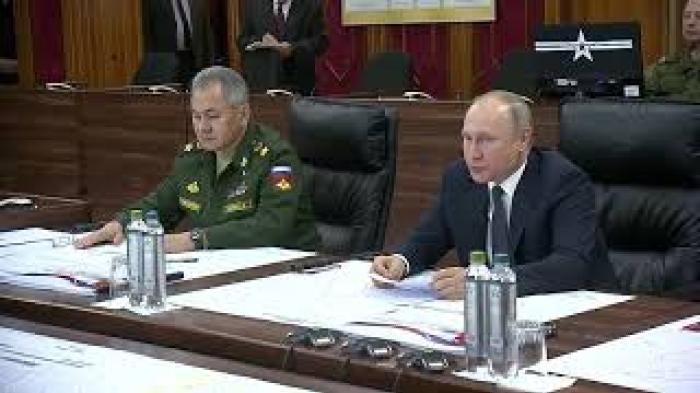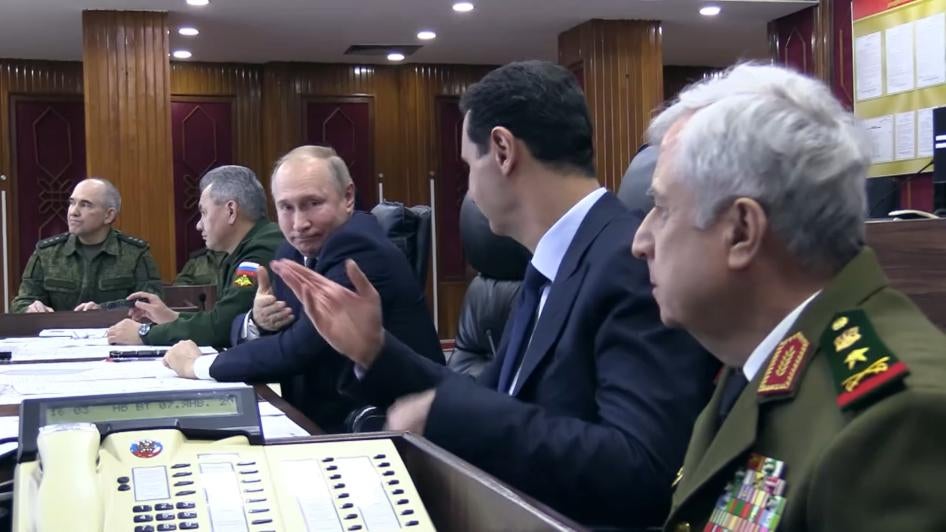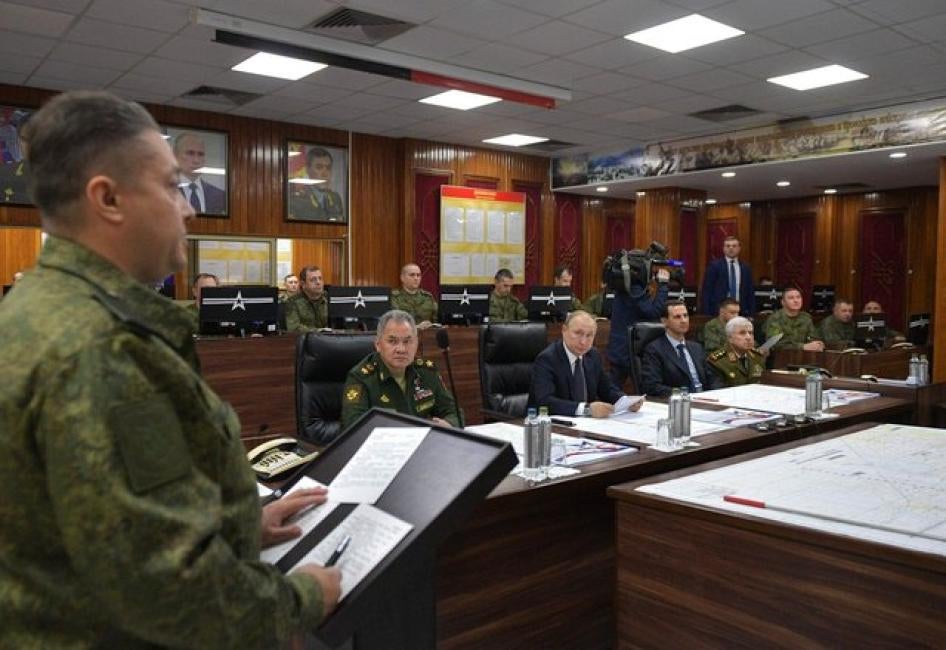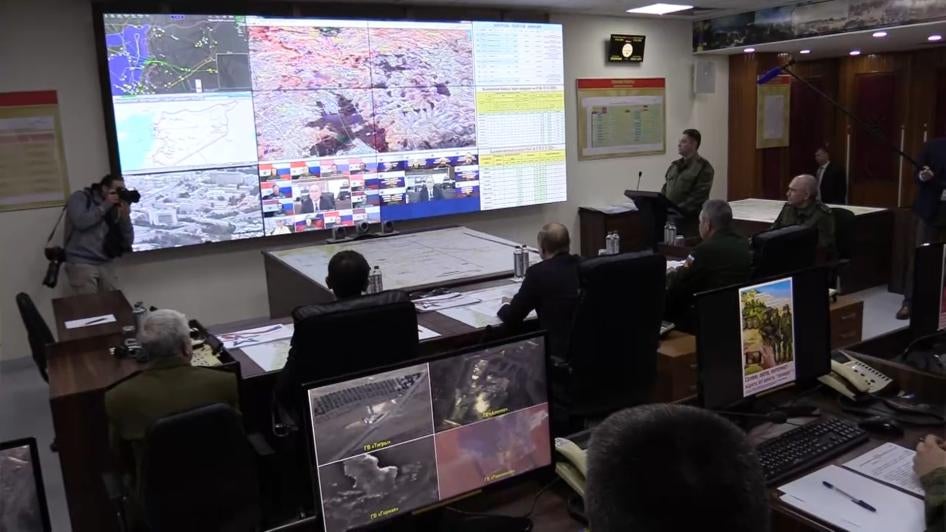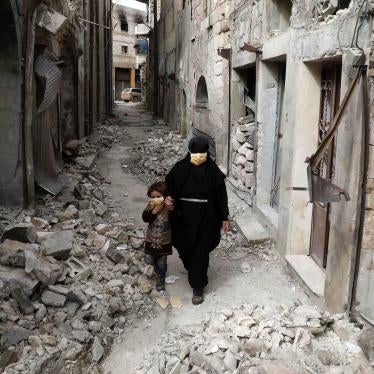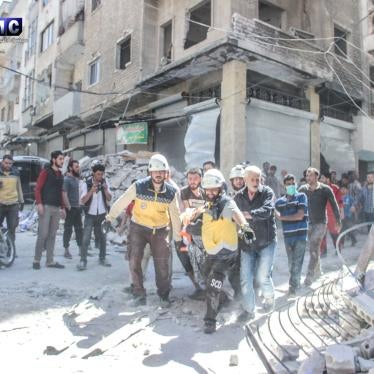Summary
In April 2019, the Syrian government and its ally, Russia, launched a major military offensive to retake Idlib governorate and surrounding areas in northwest Syria— one of the last areas controlled by anti-government armed groups. Over the next 11 months, the Syrian-Russian alliance showed callous disregard for the lives of the roughly 3 million civilians in the area, many of them people displaced by the fighting in other parts of the country.
The alliance launched dozens of air and ground attacks on civilian objects and infrastructure in violation of the laws of war, striking homes, schools, healthcare facilities, and markets – the places where people live, work, and study. They used cluster munitions, incendiary weapons, and improvised “barrel bombs” in populated areas to deadly effect. The attacks killed at least 1,600 civilians, destroyed and damaged civilian infrastructure, and forced the displacement of an estimated 1.4 million people.
A ceasefire negotiated by Russia and Turkey halted the fighting in March 2020. By that time, the Syrian government had regained control of nearly half the territory in and around Idlib, including hundreds of towns and villages that were largely depopulated because their residents had fled during the offensive. Since then, some people have returned to areas still controlled by anti-government armed groups, where they face a decimated infrastructure and limited access to food, water, shelter, health care, and education. The chance of renewed fighting, and the dangers to civilians, loom large.
This report examines the 11-month Syrian-Russian offensive and unlawful attacks that caused harm to civilians and civilian infrastructure, which can be defined as the basic structures and facilities, such as hospitals, schools, and markets, that society needs to function. The report documents 46 ground and air attacks that directly struck or indirectly damaged civilian objects and infrastructure in Idlib in violation of international humanitarian law, or the laws of war. It builds on a May 2020 report by Amnesty International that documented 18 unlawful air and ground attacks on schools and hospitals during this period in northwest Syria, covering 5 of the same attacks, plus 41 additional ones.
These attacks represent only a fraction of the total attacks during that time in Idlib and surrounding areas. They reveal repeated violations of the laws of war that were apparent war crimes, and may amount to crimes against humanity. The attacks also seriously impaired the rights of the population to health, education, and an adequate standard of living, including food, water, and housing.
For these grave violations, no one in Syria or Russia has been held to account. Compounding the abuse, both countries have actively worked to hinder humanitarian aid from reaching civilians in need.
The report names 10 senior Syrian and Russian civilian and military officials who may be implicated in these violations as a matter of command responsibility: they knew or should have known about the abuses and took no effective steps to stop them or punish those directly responsible.
To document the 46 incidents, Human Rights Watch interviewed 113 victims and witnesses of the attacks, as well as healthcare and rescue workers, teachers, local authorities, and experts on the Syrian and Russian militaries. Human Rights Watch examined dozens of satellite images and over 550 photographs and videos taken at the attack sites, as well as logs of observers who monitored Syrian and Russian aircraft in the area.
In each of the 46 incidents, Human Rights Watch found no evidence of opposition military weapons, equipment, or personnel in the vicinity at the time of attack. Most of the attacks occurred in populated areas, and no residents said that the Syrian-Russian alliance ever provided any advance warning. The overwhelming majority of attacks documented took place far from active fighting between Syrian government forces and anti-government armed groups.
Syria and Russia have said that the offensive in Idlib was a response to repeated attacks on their forces by anti-government armed groups and an effort to counter “terrorism.” Senior Syrian and Russian officials have denied that their operations violated the laws of war, despite repeated allegations of unlawful attacks on schools, hospitals, and other civilian objects during at least 21 United Nations Security Council meetings and at least two sessions of the UN Human Rights Council.
Human Rights Watch provided a summary of its findings and a list of questions with the Syrian and Russian governments on August 17, 2020 but had not received a response at time of writing.
Attacks on Civilian Objects, Infrastructure
Most of the air and ground attacks that Human Rights Watch documented were in and around four main population centers: Ariha, Idlib city, Jisr al-Shughour, and Maarat al-Nu`man. Two attacks were in Maarat Misreen, 10 kilometers north of Idlib city, and four attacks were in four camps for displaced people near the towns of Dana, Hass, and Sarmada. In total, the 46 strikes killed at least 224 civilians and wounded 561 others, according to reports from witnesses, family members of victims, residents, local authorities, and healthcare and rescue workers. Victims typically suffered injuries from munitions’ fragments and building debris.
The documented strikes damaged 12 healthcare facilities and 10 schools, forcing these institutions to shut down, in some cases permanently. At least five markets, four displaced persons camps, four residential neighborhoods, two commercial areas, and a prison, church, stadium, and nongovernmental organization office were also damaged in the attacks.
Human Rights Watch received credible reports about dozens of other attacks that damaged civilian structures, which international law protects from deliberate attack unless they are being used for military purposes. The UN Office of the High Commissioner for Human Rights (OHCHR) estimates that at least 1,600 civilians were killed in areas controlled by anti-government armed groups in northwest Syria during the period covered in this report. In 2019, the Safeguarding Health in Conflict Coalition, made up of international nongovernmental organizations, reported 147 separate incidents of violence against or obstruction of health care in Syria, with over half occurring in Idlib governorate. The Syrian Network for Human Rights reported in May 2020 on at least 882 attacks in and around Idlib on civilian infrastructure since April 2019, including 220 places of worship, 218 educational facilities, 93 healthcare facilities, 86 Syrian Civil Defense (SDC) centers, and 52 markets.
One of the deadliest attacks documented by Human Rights Watch occurred on July 22, 2019 in Maarat al-Nu`man. The first munition, probably from an airstrike, hit a four-story apartment building and nearby shops and damaged a small market. Shortly thereafter, a second munition hit, collapsing two three-story buildings. An SCD worker at the scene was killed and another was wounded.
“There were bodies everywhere – women, bits of children,” said the injured SCD worker, who received fragmentation wounds to his hand and back. SCD volunteers worked for 24 hours pulling people from the rubble and identified 39 of the 43 people killed. Another 75 were wounded. “I remember one boy who had been carrying vegetables in his hands when he was killed,” another SCD worker said. “His severed hands were still gripping them.”
Three attacks on Idlib city’s commercial area and a nearby market in January and February 2020 killed 4 civilians, wounded 110 others, and damaged countless shops, which provided livelihoods for thousands of residents and their families. “We are terrified,” said Ayman Assad, who runs a car repair shop in the neighborhood. “Schools, markets, homes, hospitals, everything is a target. They are targeting life in Idlib.”
On January 5, 2020, an attack struck al-Naqib neighborhood in Ariha town, killing 13 civilians and wounding another 25. One munition hit a four-story building housing a preschool, and two others hit residential buildings next to two schools. One school employee described evacuating students out of the building minutes before the attack because local observers had reported aircraft overhead. “I looked at them and there was nothing I could do other than calm them, tell them not to be afraid, tell them to pray, tell them that it would soon be over,” she said. After the school was evacuated, a munition landed in the schoolyard, shattering windows and damaging doors, but no students were harmed.
Three weeks later, three munitions hit the three-story Ariha Surgical Hospital (also known as al-Shami hospital), the town’s only hospital. The attack destroyed the hospital, killed at least 14 civilians, and wounded at least 66 others. An Ariha resident, who lived a kilometer away, described people’s deadly predicament:
Panic and fear is the best way to [describe] the situation. We don’t know where to take our children. If we go west, we get hit by bomb fragments. If we go east, it’s the same. We have no windows or doors left. People have stopped going into the basements to seek shelter; they go into the streets or onto the rooftops, so that it’s easier for rescue workers to find their bodies. … We knew we were going to die, and we went out into the street so we would not end up under the rubble.
Continuing attacks on Ariha forced people to flee for safety, and by late February 2020, the town was nearly empty.
One result of the Idlib offensive was mass displacement. According to the UN, nearly 1.4 million people across Idlib fled their homes during the period covered in this report, out of an estimated population of 3 million people. Many said they fled because of repeated attacks in populated areas, or feared ill-treatment if Syrian forces were to retake the area.
The repeated Syrian-Russian alliance attacks on civilian infrastructure in populated areas in which there was no apparent military objective suggests that these unlawful attacks were deliberate. The intent may been have been to deprive local residents of the means to sustain themselves, to force the civilian population to flee and make it easier for Syrian ground forces to take territory, or simply to instill terror in the civilian population as a way to achieve victory. The Syrian-Russian alliance apparently intended to fulfill these aims with little regard for international law.
While international humanitarian law, or the laws of war, recognizes that civilian harm may result from lawful attacks, it requires that all warring parties direct attacks on military objectives, distinguish between civilians and combatants, and take all feasible precautions to avoid harming civilians or civilian objects, and that attacks not cause disproportionate civilian harm. Populations also remain protected by international human rights law, notably the International Covenant on Civil and Political Rights, and the International Covenant on Economic, Social and Cultural Rights.
Use of Explosive Weapons in Populated Areas
Most of the 46 attacks documented by Human Rights Watch appeared to involve the use of explosive weapons with wide-area effects in populated areas. The bombing and shelling of populated areas kill and wound large numbers of civilians, and damage and destroy civilian objects and infrastructure. They also have reverberating effects: disrupting essential services, such as health care and education, and access to food and shelter. Long-term impacts include serious psychological harm to the affected population.
Explosive weapons used in Idlib included bombs, rockets, and artillery. Three of the attacks Human Rights Watch documented on or near schools involved cluster munitions, which have widespread indiscriminate effects and pose a long-term danger to civilians. Cluster munitions typically release or disperse dozens or even hundreds of small submunitions in the air over an area the size of a football field. Many submunitions may fail to explode on initial impact, leaving remnants that act like landmines. The widely accepted Convention on Cluster Munitions bans cluster munitions; it has been joined by 121 states, although not Syria or Russia.
The Syrian Network for Human Rights identified the use of various explosive weapons by the Syrian-Russian alliance since April 2019, including 30 cluster munitions, at least 21 incendiary weapons, 9 missiles, and nearly 5,000 “barrel bombs” throughout the Idlib region.
Humanitarian Impact
The attacks by the Syrian-Russian military alliance on civilian objects and infrastructure have caused massive displacement and loss of life and harmed residents’ ability to access food, housing, health care, and education. This has resulted in a dire humanitarian situation in northwest Syria, with the almost complete decimation of the region’s healthcare infrastructure, severe overcrowding in areas sheltering displaced civilians, and heightened fears of restricted humanitarian access. As of May 2020, almost 2.8 million people in the northwest were in need of aid to meet their basic needs.
The humanitarian response is heavily reliant on UN agencies, which in 2014 were authorized by the UN Security Council to use border crossings from Turkey into the northwest to provide supplies and coordinate the response. The cross-border operation is the sole means for the UN to bring assistance into northwest Syria. In December 2019, Russia vetoed the renewal of the full cross-border authorization, but the Security Council was able to renegotiate a weaker resolution in January 2020, reauthorizing the two border crossings into northwest Syria for six months but removing the authorization from the two other border crossings into northeast and southern Syria. In July 2020, Russia and China vetoed two draft resolutions that would have renewed the mechanism and ultimately succeeded in deauthorizing one more border crossing. As a result, the only authorized crossing is at Bab al-Hawa on the Turkish border.
Responsibility for Unlawful Attacks
Civilian officials and military commanders can be held criminally liable as a matter of command responsibility if they knew or should have known about violations committed by forces under their control and failed to prevent them or punish those directly responsible.
To identify the range of Syrian and Russian officials who may bear criminal responsibility for the attacks documented in this report, Human Rights Watch reviewed public statements from Russian government and military officials; public reporting from the office of the Russian president and the Russian Ministry of Foreign Affairs and Defense Ministry; and Russian media accounts. Human Rights Watch also interviewed seven experts on the Russian and Syrian armed forces.
Russia’s military intervention in Syria since 2015 has involved the deployment of attack and transport aircraft, surveillance drones, and armed forces personnel, including military advisors, forward air controllers to help coordinate and direct airstrikes, special forces, and military police. These Russian forces have supported the Syrian armed forces through airstrikes; close air support for Syrian units during ground operations; co-location with Syrian units on the front lines; and development, training, and advising on tactics and the planning of operations. In at least one case, a Russian military officer temporarily commanded an entire corps of the Syrian army. The coordination of this support has involved the highest levels of the Russian military, Defense Ministry, and the president.
Human Rights Watch is not aware of any efforts by the Syrian or Russian governments to credibly investigate or stop the attacks on civilians and civilian objects or infrastructure. In only one case of which Human Rights Watch is aware, Russian officials followed up on reports of civilian casualties after the attack on a market in Maarat al-Nu`man on June 29, 2019. However, the officials denied responsibility after having identified the wrong location. Instead of investigating the alleged violations, the Syrian-Russian alliance continued, and in some cases intensified, their attacks, despite regular briefings about the impact of unlawful attacks during UN Security Council and Human Rights Council meetings that senior Russian and Syrian officials attended. In February 2020, President Vladimir Putin reportedly conferred on the Russian commander who headed operations in Syria from April through September 2019, the Hero of Russia award, the nation’s highest honorary title. In late July 2020, the same title was reportedly awarded to the next Russian commander who headed operations in Syria at least through September 2020.
Given the lack of accountability in Syria and Russia, as well as the deadlock in the UN Security Council that has prevented the situation in Syria from being referred to the International Criminal Court, concerned governments should consider unilateral targeted sanctions against those senior officials and commanders credibly implicated in abuses. They should also support judicial officials in their efforts to pursue criminal cases under the principle of universal jurisdiction, where possible and in line with national laws.
As detailed in the report, the Syrian and Russian civilian and military commanders who may bear command responsibility for violations during the 2019-2020 Idlib offensive include Syria’s President Bashar al-Assad and Russia’s President Vladimir Putin, who are the commanders-in-chief of their respective armed forces; Syria’s defense minister and second-in-command of Syria’s armed forces, Lt. Gen. Ali Abdullah Ayoub; Syria’s air force commander, Maj. Gen. Ahmed Balloul; Russia’s defense minister and second-in-command of the Russian armed forces, General of the Army Sergei Shoigu; Russia’s first deputy defense minister and chief of the general staff of the armed forces, General of the Army Valery Gerasimov; Russia’s first deputy chief of the general staff of the armed forces and head of the main operations directorate of the general staff of the armed forces, Col.-Gen. Sergei Rudskoy; commander of Russian forces in Syria from at least some time in March 2019 until April 10, 2019, Col.-Gen. Sergei Vladimirovich Surovikin; commander of Russian forces in Syria from April 10, 2019 until September 2019, Col.-Gen. Andrei Nikolaevich Serdyukov; and commander of Russian forces in Syria from September 2019 until at least September 2020, Lt.-Gen. Alexander Yuryevich Chaiko.
Perilous Ceasefire
A March 2020 ceasefire agreement negotiated between Russia and Turkey has largely held as of early September, prompting some displaced people to return to areas still under the control of anti-government armed groups. They have returned to areas decimated by the latest military offensive, with collapsed infrastructure and limited access to food, water, shelter, education, and health care, including psycho-social (mental health) support. While as of late August, there were only 59 known cases of Covid-19 in northwest Syria, the actual number of cases is likely much higher due to limited testing. A further outbreak of the pandemic will exacerbate existing shortages and associated vulnerabilities. Crowded conditions in camps and poor access to basic services make it impossible to properly engage in social distancing or take other health precautions.
The risk to civilians of renewed hostilities also looms. Without measures being taken domestically or internationally against those responsible for serious violations, there is little to deter perpetrators of crimes and others from committing atrocities in the future.
Recommendations
Human Rights Watch calls on all parties to the conflict in Syria to fully abide by the laws of war. Our findings in this report highlight the need for Syria and Russia to end all deliberate, indiscriminate, and disproportionate attacks on civilians and civilian objects, such as medical facilities, schools, and markets. They should conduct transparent, credible, and impartial investigations into credible allegations of laws-of-war violations, including the incidents detailed in this report.
All states that are high contracting parties to the Geneva Conventions of 1949 undertake in common article 1 “to respect and ensure respect” for the Geneva Conventions in “all circumstances.” They should press all parties to commit to avoiding the use of explosive weapons with wide-area effects in populated areas.
Canada, the European Union, Switzerland, the United Kingdom, the United States, and other states should impose targeted sanctions, including asset freezes, on those civilian and military commanders credibly implicated in war crimes and crimes against humanity, including as a matter of command responsibility. Where possible, judicial authorities should also consider investigating and prosecuting those implicated in serious crimes under the principle of universal jurisdiction and in accordance with national laws. The International, Impartial and Independent Mechanism (IIIM), established by the UN General Assembly in 2016, should continue to work to build files related to serious crimes committed in Syria, including those documented in this report, in order to facilitate criminal proceedings where possible.
Concerted international efforts towards accountability are crucial to demonstrate there are consequences for unlawful attacks, to deter future atrocities, and to show that no one can elude accountability for grave crimes because of their rank or position.
Glossary
Free Syrian Army: The Free Syrian Army began in 2011 as an umbrella structure linking largely non-ideological opposition factions. The term has more recently been used to refer to various, loosely organized anti-government armed groups backed by Turkey, which reorganized in late 2019 to become the Syrian National Army.
Harakat Nour al-Din al-Zinki: Once one of the strongest factions loosely identifying with the Free Syrian Army and active in western Aleppo, it joined Hay’et Tahrir al-Sham in 2017 before splitting from it in 2018.
Hay’et Tahrir al-Sham (HTS or Levant Liberation Committee): Formed in 2017, Hay’et Tahrir al-Sham is a coalition of Islamist Sunni armed groups and the main anti-government armed group in Syria, controlling territory in the northwest. HTS is the latest incarnation of Jabhat Fateh al-Sham, in turn an outgrowth of Jabhat al-Nusra (Nusra Front). The United Nations, the United States, and Turkey in 2018 designated HTS as a foreign terrorist organization affiliated with al-Qaeda. The HTS has denied the affiliation. Jabhat al-Nusra declared that it had severed ties with al-Qaeda in 2016, when it renamed itself Jabhat Fateh al-Sham.
Independent International Commission of Inquiry on Syria (COI): The COI was set up by the UN Human Rights Council in August 2011 to investigate human rights violations during the Syrian conflict, establish the facts and circumstances that may amount to violations and crimes, and, where possible, identify those responsible who should be held accountable.
International, Impartial and Independent Mechanism (IIIM): The UN General Assembly established the IIIM in December 2016 to collect, consolidate, preserve, and analyze evidence of the most serious crimes under international law committed in Syria since March 2011, and to prepare files to facilitate the prosecution of those most responsible in national, regional, or international courts or tribunals that have or may in the future have jurisdiction over these crimes.
Jabhat al-Nusra: Previously al-Qaeda’s affiliate in Syria, Jabhat at-Nusra formally separated from the armed group in 2016 when al-Nusra rebranded as Jabhat Fateh al-Sham. The groups further severed ties in 2017, when Jabhat al-Nusra launched HTS, which al-Qaeda’s leadership opposed. Following this break, some former Jabhat al-Nusra figures still loyal to al-Qaeda split from HTS and formed a separate group, Hurras al-Deen. Jabhat al-Nusra is on UN Security Council sanctions lists.
National Liberation Front: A coalition of anti-government armed groups, including factions of the former Free Syrian Army. It was formed in northwestern Syria in May 2018 and is now part of the Turkish-backed Syrian National Army.
Sentry Syria: A network of observers monitoring aircraft movement in Syria that distributes messages, including over a Telegram channel, on the presence of aircraft and artillery.
Syrian Civil Defense (also known as the White Helmets or SCD): Formed in 2014, the SCD is a volunteer organization that operates in parts of nongovernment-controlled Syria and in Turkey. Most of the volunteers' activities in Syria consist of medical evacuation, urban search and rescue in response to bombing, evacuation of civilians from danger areas, and essential service delivery.
Syrian Interim Government: An opposition body established in 2013 controlling some parts of Syria, with its seat in Azaz in Aleppo governorate. HTS has removed the Interim Government from areas that have come under its control.
Syrian National Army: A Turkish-backed coalition of anti-government armed groups that was formed in late 2019 and includes factions of the Free Syrian Army and the National Liberation Front.
Syrian Network for Human Rights: An independent monitoring group, founded in 2011, that documents casualties and briefs various United Nations agencies.
Syrian Salvation government: The civilian government affiliated with HTS, active in parts of northwestern Syria.
Violet: A nongovernmental organization providing health care and other services in some nongovernment-controlled parts of Syria.
White Helmets: See Syrian Civil Defense above.
Recommendations
To Syria and Russia
· Abide fully by the laws of war, including the prohibitions on attacks that target civilians and civilian objects; do not discriminate between civilians and military objectives; or are expected to cause civilian harm disproportionate to the expected military advantage;
· Cease attacking civilian infrastructure and other protected objects, including healthcare facilities, markets, and schools;
· Take all feasible precautions to minimize harm to civilians and civilian objects, including giving effective advance warnings of attacks when possible;
· Consistent with the prohibition on indiscriminate attacks, end the use of explosive weapons with wide-area effects in populated areas;
· End the use of cluster munitions and ratify the Convention on Cluster Munitions;
· Conduct transparent, credible, and impartial investigations into credible allegations of laws-of-war violations, including the incidents detailed in this report;
· Institute a policy of conducting investigations into all strikes that resulted in significant numbers of civilian casualties;
· Make information public regarding the intended military targets of strikes that resulted in civilian casualties, and those that directly or indirectly damaged civilian infrastructure and other protected objects, including the identities of the parties involved in such strikes;
· Make public the findings of investigations and include recommendations for disciplinary measures or criminal prosecutions where violations are found;
· Provide prompt and appropriate compensation to civilians and their families for deaths, injuries, and property damage resulting from wrongful strikes. Consider providing “ex gratia” payments to civilians who suffer harm from strikes without regard to possible wrongdoing.
To Syria
· Fully cooperate with and provide unhindered access to the Independent International Commission of Inquiry on Syria (COI), the International, Impartial and Independent Mechanism (IIIM), the Organisation for the Prohibition of Chemical Weapons (OPCW), and independent nongovernmental human rights organizations to investigate alleged violations of international humanitarian law and international human rights law;
· Act to uphold all Syrians’ rights to food, water, health, housing, and education in a nondiscriminatory manner. In areas not under the government’s effective control, provide authorization to UN agencies and other humanitarian organizations to utilize border crossings outside the control of the government to ensure the delivery of assistance to populations at risk.
To Anti-Government Armed Groups
· Abide fully by the laws of war, including the prohibitions on attacks that target civilians and civilian objects; that do not discriminate between civilians and military objectives; and that cause civilian loss disproportionate to the expected military advantage;
· Take all feasible precautions to protect civilians and civilian objects from the effects of attacks. Avoid placing military objectives within or near densely populated areas or healthcare facilities. Remove civilians and civilian objects whenever possible from the vicinity of military objectives;
· Credibly investigate and take appropriate disciplinary action against members of your forces implicated in war crimes and other abuses.
To Russia
· Cease using the UN Security Council veto to prevent scrutiny of, and accountability for, alleged serious crimes in Syria and expansion of humanitarian assistance, including cross-border aid. The UN Charter notes situations in which Security Council members that are parties to disputes under consideration by the council abstain from voting;
· Cease attempting to undermine the OPCW’s investigations into the use of chemical weapons in Syria and instead support the work of the OPCW in Syria and elsewhere;
· Cease the transfer of military equipment and weapons to Syria that are being used to conduct widespread attacks on civilians and civilian infrastructure in
northwest Syria.
To Turkey
· Allow civilians fleeing violence in Syria to seek refuge in Turkey and in the Euphrates Shield area, along the border between Syria and Turkey;
· Ensure protection of civilians and civilian objects during any military offensive in which Turkey is involved in northwest Syria;
· Continue to ensure unhindered humanitarian access to UN agencies and their implementing partners to deliver food, fuel, medicines and medical supplies to civilians in need in northern Syria.
To All Warring Parties and Allied Forces
· Comply fully with the provisions of relevant UN Security Council resolutions – including Resolutions 2139 and 2165 – related to respect for international humanitarian law, human rights law, and refugee law;
· Ensure that civilians in areas occupied by your forces have access to humanitarian aid, including health care, water, food, and shelter, in a nondiscriminatory manner and on the basis of credible, independent assessments of needs;
· Facilitate safe, timely, and unimpeded humanitarian access to all people in need of assistance;
· Ensure that persons with disabilities have access to protection, assistance, and access to essential services, on an equal basis with others.
To the United Nations Security Council and its Members
· Impose targeted sanctions, including asset freezes, on those civilian and military commanders credibly implicated in war crimes, crimes against humanity, and other serious violations committed in northwest Syria, including as a matter of command responsibility;
· Request regular formal briefings from the COI on its investigations into attacks on civilians and civilian infrastructure in Idlib and other alleged laws-of-war violations;
· Demand unhindered access to Syria for the COI, the IIIM, the OPCW, and nongovernmental human rights organizations;
· Ensure sufficient aid reaches civilians in areas controlled by anti-government armed groups and those most at risk, including people with disabilities and
older people;
· Reverse the January and July 2020 decisions to deauthorize two crossings that have been used for cross-border aid delivery;
· Reauthorize cross-border aid delivery to both border crossings, including one crossing in the northeast on the Iraqi-Syrian border, for as long as necessary in order to ensure that sufficient humanitarian assistance, including medical personnel and aid to prevent the spread of Covid-19, reaches civilians in need in areas not controlled by the government.
To the United Nations General Assembly
· Given the deadlock within the United Nations Security Council, the UN General Assembly should adopt a resolution or statement calling on its member states to impose targeted sanctions on those civilian and military commanders credibly implicated in war crimes, crimes against humanity, or other serious violations committed, including as a matter of command responsibility;
· If the Security Council proves unable to reauthorize cross-border deliveries due to the threat of veto by Russia, the General Assembly should pass a resolution to support the UN continuing cross-border deliveries to areas not under the Syrian government’s control.
To the United Nations Human Rights Council
· Maintain the mandate of the COI to continue to document crimes committed in northwest Syria and implement its recommendations;
· Ensure resolutions and statements on the situation in Syria highlight the specific concerns of persons with disabilities.
To the Commission of Inquiry
· Increase efforts to attribute responsibility for crimes committed, including during the April 2019 to March 2020 military campaign in Idlib.
To European States
· Press Turkey to keep its borders open to refugees, and provide financial support to its refugee efforts;
· Share responsibility by stepping up resettlement of refugees from Turkey, and refrain from returning people to Syria.
To Other States
· Consider imposing targeted sanctions, including asset freezes, on those civilian and military commanders credibly implicated in war crimes, crimes against humanity, and other serious violations committed in northwest Syria, including as a matter of command responsibility;
· Support all national and international efforts to bring suspected perpetrators of serious crimes and abuses to account, including by continued support and cooperation with the IIIM, and where possible by pursuing cases under the principle of universal jurisdiction for individuals allegedly responsible for war crimes and crimes against humanity in line with national laws;
· Support a strong political declaration that recognizes the foreseeable civilian harm caused by the use of explosive weapons with wide-area effects in populated areas and commits states to avoiding the practice and assisting civilians harmed by it;
· Increase support to humanitarian programs in northwest Syria to help respond to the growing needs of displaced persons and the wider community, including the response to Covid-19.
Methodology
For this report, Human Rights Watch interviewed 77 civilians who witnessed air and ground attacks that harmed civilians and civilian objects in Syria’s Idlib governorate, as well as 29 volunteers with the Syrian Civil Defense (also known as the White Helmets or SCD) who were present at the scene of the attacks as they occurred or in a rescue capacity soon afterwards. Human Rights Watch also interviewed seven experts on the Russian and Syrian armed forces. Human Rights Watch conducted the interviews between February and August 2020.
Human Rights Watch sought to enter northwest Syria for the purposes of this research in March 2020 but was not granted permission by Turkey. Instead, researchers conducted most interviews remotely, by phone or messaging app, and a small number in person outside of Syria.
We selected the 46 attacks investigated for the report based on consultations with residents of Idlib and rescue workers and by asking them to identify attacks from March 2019 to 2020 that damaged civilian objects or infrastructure.
Most interviews were conducted in Arabic; some were in English. Researchers informed all interviewees about the purpose and voluntary nature of the interviews, and the ways in which Human Rights Watch would use the information, and obtained consent from all interviewees, who understood they would receive no compensation for their participation. For reasons of personal security, Human Rights Watch has withheld the names and identifying information of some of the individuals featured in the report to ensure their anonymity, as well as the location of most interviewees at the time of the interviews.
Human Rights Watch analyzed dozens of high and very high-resolution commercial satellite images of the locations where strikes documented in this report occurred, taken over different periods of time. Human Rights Watch also reviewed over 550 videos and photographs taken during or just after attacks, which were either uploaded on social media platforms or shared directly with researchers. By matching landmarks in the videos with satellite imagery, street-level photographs, or other visual material, Human Rights Watch determined the location and approximate time and date of the attacks. Human Rights Watch also studied the imagery to determine the types of weapons used during the attacks and examined the photographs and videos for any visible military objectives in the vicinity.
To verify the presence of aircraft and artillery in the vicinity of the strike locations at around the time the strikes occurred, Human Rights Watch studied the logs of messages from a network of observers who monitor aircraft movement in Syria, known as “Sentry Syria,” that were distributed over its Telegram channel.
For this report, Human Rights Watch’s witness interviews and analysis focused on the towns and cities of Ariha, Idlib, Jisr al-Shughour, Maarat al-Nu`man, and Maarat Misreen, and camps in Dana, Hass, and Sarmada, all in Idlib governorate. Human Rights Watch selected these areas because of the high number of attacks reported during the period covered.
To identify the Russian and Syrian commanders and individuals who may bear responsibility for the attacks, and to establish the nature and extent of Russian involvement in military operations in Syria, Human Rights Watch reviewed public statements by Russian government and military officials; reporting from the office of the Russian president, the Russian Ministry of Foreign Affairs, and the Russian Defense Ministry; and Russian media reports, in addition to the expert interviews mentioned above.
On August 17, Human Rights Watch sent the Syrian and Russian governments a summary of its findings and a list of questions. At time of writing, Human Rights Watch had not received responses from either government.
Background
The conflict in Syria has been one of the world’s deadliest since World War II, killing at least 400,000 people over the past decade and displacing millions more. Widespread atrocities and disregard for international human rights and humanitarian law protections have characterized the conflict. The Syrian government – with significant backing from Russia and Iran – has used prohibited chemical weapons, pummeled civilian objects and infrastructure with unlawful indiscriminate airstrikes, and blocked humanitarian aid in its attempts to regain territory controlled by anti-government armed groups.[1] These groups, some backed by Turkey, have carried out indiscriminate attacks in government-held areas and prevented civilians from fleeing to safer areas.[2] From 2013, when it began capturing significant territory in Syria until it was routed from its last Syrian holdout of Baghouz in March 2019, the Islamic State (ISIS) summarily executed, raped, kidnapped, and detained countless civilians, and threw thousands of bodies into mass graves.[3] Airstrikes by the United States-led Global Coalition to Defeat ISIS resulted in numerous civilian casualties, and the coalition’s Kurdish-led allies have restricted the movement of those displaced from ISIS-controlled areas.[4]
Throughout the conflict, members of the United Nations Security Council and other UN member states have contributed little to protecting civilians at risk or collectively holding perpetrators of serious abuses to account. Russia in particular has repeatedly blocked Security Council resolutions that would have improved civilian protection.
Syrian and Russian Attacks on Civilian Infrastructure in Syria
Human Rights Watch has documented that the Syrian armed forces and its ally, Russia, have since 2012 deliberately or indiscriminately attacked civilians and civilian objects and infrastructure in Syria. For example, Syrian government forces killed hundreds of civilians in Homs in February 2012 with indiscriminate shelling and with sniper fire.[5] In August 2012, the government began relying more extensively on air power, often indiscriminately striking heavily populated areas, including the city of Aleppo.[6]
In 2013, Human Rights Watch investigated nine apparent ballistic missile attacks by the Syrian military, seven of which had no apparent military objective, that killed at least 215 civilians, including 100 children.[7] The Syrian government also carried out numerous barrel bomb attacks that year, particularly on neighborhoods in Aleppo.[8]
Between February 2014 and January 2015, Human Rights Watch identified at least 450 major damage sites that showed damage consistent with barrel bomb detonations.[9] Syrian airstrikes also hit markets, schools, and healthcare facilities in 2014, with one of the deadliest air attacks occurring in August on Douma’s popular markets and residential areas, killing at least 112 people.[10]
In 2015, Syrian-Russian joint military operations began, and their airstrikes deliberately or indiscriminately struck homes, markets, schools, and healthcare facilities, using incendiary weapons and other explosive weapons with wide-area effects, such as barrel bombs and cluster munitions.[11] In 2016, Human Rights Watch documented several apparently targeted attacks on homes, healthcare facilities, markets, and schools, including an airstrike by the Syrian-Russian alliance on al-Quds Hospital in April 2016 that killed 58 patients and other civilians.[12] In August 2016, there were several attacks on health facilities in Idlib, Aleppo, Hama, Homs, and elsewhere.[13]
The Syrian government regained control over parts of Aleppo held by anti-government armed groups by the end of 2016. In that campaign, the Syrian-Russian alliance conducted indiscriminate air attacks, including strikes on several healthcare facilities, and used incendiary weapons and cluster munitions.[14] In June 2017, the Syrian-Russian alliance struck a town south of Daraa, killing 10 civilians in and near a school.[15] The Violations Documentation Center (VDC), a local monitoring group, documented the killing of 446 civilians, including 91 children, in aerial attacks in eastern Aleppo between September and October 2017.[16]
In September 2017, the Syrian-Russian alliance launched an offensive in Idlib governorate. Airstrikes, including with cluster munitions, hit several towns and surrounding areas in Idlib, destroying at least six healthcare facilities and five White Helmet centers,
displacement camps, and residential areas, killing over 150 civilians.[17]
Indiscriminate attacks on civilians and civilian objects, including with cluster munitions, continued during the February and March 2018 military campaign to retake eastern Ghouta, which reportedly killed over 1,600 civilians.[18] In that campaign, the Syrian-Russian alliance struck at least 25 healthcare facilities, 11 schools, and countless civilian residences.[19]
A deconfliction mechanism established by the United Nations in 2014 to provide warring parties with precise coordinates of healthcare facilities and other humanitarian sites that enjoy special protection from attack has had little impact, as the Syrian-Russian alliance has repeatedly struck many of these sites without consequence.
|
Explosive Weapons in Populated Areas The use of “explosive weapons in populated areas,” often referred to as EWIPA, poses one of the gravest threats to civilians in contemporary armed conflict.[20] They have been used repeatedly throughout the Syrian conflict, including in recent hostilities in Idlib governorate, with devastating effects on civilians and civilian objects. Explosive weapons encompass a range of conventional air-dropped and surface-fired weapons, including bombs, artillery, missiles, and rockets, as well as other munitions. In October 2019, Austria initiated a diplomatic process to create a political declaration designed to reduce the civilian harm caused by the use of explosive weapons in populated areas. [21] When used in populated villages, towns, and cities, explosive weapons can cause both immediate and long-term harm to large numbers of civilians. This harm is not only physical – deaths and injuries – but often severe psychological harm. Damage to buildings and critical infrastructure will have reverberating effects on basic rights, interfering with essential services and impairing access to health, education, and an adequate standard of living, such as water, food, and housing. The use of explosive weapons in populated areas can also contribute to the displacement of the local population, depriving civilians of physical security, privacy, and family life. Displacement is often prolonged because of damage to homes, businesses, and infrastructure, as well as the presence of explosive remnants of war, which impede return. Explosive Weapons with Wide-Area EffectsCertain types of explosive weapons produce wide-area effects. Such explosive weapons may have a large destructive radius, be inherently inaccurate, or deliver multiple munitions at the same time. Often a single weapon will fall into two of these categories. For example, unguided rockets and barrel bombs may both be inaccurate and produce blast and fragments over wide areas. Throughout the Syrian conflict, Human Rights Watch has documented the use of these weapons by many of the parties to the conflict. Even when these weapons can be directed at a military objective, their use in populated areas foreseeably results in high numbers of civilian casualties and substantial damage to civilian objects and infrastructure, causing indiscriminate or disproportionate civilian harm. Cluster MunitionsCluster munitions are explosive weapons that have been used throughout the conflict in Syria with devastating effects for civilians. Human Rights Watch has repeatedly documented the use of cluster munitions by Syrian and Russian forces in this conflict, including during the most recent hostilities in Idlib. Cluster munitions are large air or ground-delivered weapons that disperse dozens or hundreds of smaller submunitions over the area the size of a football field. The use of these weapons poses an immediate threat to civilians by randomly scattering submunitions or “bomblets,” which cannot distinguish between combatants and civilians, over a wide area. Cluster munitions continue to pose a threat long after the fighting because many of their submunitions fail to explode upon impact and become de facto landmines. Children are particularly vulnerable to such injuries.[22] The 2008 Convention on Cluster Munitions comprehensively prohibits cluster munitions and requires their clearance and the provision of assistance to victims.[23] Syria and Russia have not joined the treaty, but all parties to the armed conflict in Syria should abide by the emerging norm the convention establishes against any use of cluster munitions in any circumstances. Syrian forces used at least 13 types of widely banned cluster munitions in at least 674 attacks on areas held by anti-government armed groups between July 2012 and July 2018, killing and injuring civilians.[24] The Syrian-Russian alliance has also extensively used cluster munitions, with at least 238 separate attacks using cluster munitions in Syria between August 2016 and July 2017 reported by local activists, first responders, and healthcare personnel.[25] Human Rights Watch documented another two cluster attacks in 2019 and a third, on a school, in 2020.[26] |
Closing in on Idlib
The Idlib governorate and its immediate surroundings make up one of the last major areas controlled by anti-government armed groups, with an estimated population of 3 million people as of April 2020, about half of whom had fled fighting elsewhere in Syria.[27]
Prior to the Syrian-Russian alliance’s military offense in April 2019, Hay’et Tahrir al-Sham (HTS, or Levant Liberation Committee), an anti-government armed group previously linked to al-Qaeda, had consolidated its control over the governorate. HTS, with what it calls the “Syrian Salvation Government,” administers a portion of northwestern Syria that includes Idlib, and previously included parts of Hama governorate to the south, and Aleppo governorate to the east.[28] Other anti-government armed groups within Idlib include the Turkey-backed National Liberation Front as well as several non-state armed groups independent of HTS.[29] As of early September 2020, these groups retained influence in some areas of Idlib governorate, largely by either cooperating with HTS or by having been subordinated to it to one degree or another.[30] Tensions between the groups have sometimes resulted in armed clashes.[31]
Idlib and other areas of northwestern Syria also contain substantial Turkish armed forces, which have grown since Turkish forces seized Afrin, in Aleppo governorate, from Kurdish-led groups and as tensions have escalated between the Turkish government and the Syrian-Russian alliance.[32]
In May 2017, after a summit in Astana, Kazakhstan, the governments of Turkey, Russia, and Iran committed to establishing a ceasefire in four so-called “de-escalation zones,” including one covering Idlib, agreed on terms for improved humanitarian access, and called for the signatories to combat Jabhat al-Nusra and other groups designated as terrorist by the UN Security Council.[33]
The ceasefire was short-lived, as the Syrian-Russian alliance began attacking Idlib shortly after the conclusion of the agreement. Between October 2017 and February 2018, Russian and Iran-backed Syrian government offensives resulted in the Syrian government gaining control over substantial territory in southern Idlib that had been controlled by HTS and other anti-government armed groups.[34]
In response to these offensives and retaking of territory, Turkish armed forces established 12 observation posts along the front lines in Idlib.[35] Russia and Iran followed suit, establishing their own posts along the de-escalation zone.[36]
Between March and July 2018, separate Russia and Iran-backed Syrian offensives resulted in the Syrian government seizing control over all the demarcated de-escalation zones except in Idlib.[37]
An agreement reached between Turkey and Russia at a summit in Sochi, Russia, in September 2018 halted a Syrian government offensive against the remaining de-escalation zone in Idlib.[38] The agreement called for the creation of a 15 to 20 kilometer-deep demilitarized zone along the front lines, the withdrawal of heavy weapons by anti-government armed groups, and a withdrawal of “radically minded” anti-government armed groups by October 15, 2018.[39] Turkish military and Russian military police were to monitor the demilitarized zone, and the major east-west and north-south highways running through Idlib, known respectively as the M4 and M5, which had been closed for years, were to be opened by the end of 2018.[40]
By March 2019, there had been little progress in implementing the terms of the Sochi agreement. While some anti-government armed groups did withdraw some heavy weapons in October 2018, ceasefire violations continued while Russia accused Turkey of failing to fight “terrorism,” using the HTS presence within the de-escalation zone as proof.[41] Notably, HTS consolidated its control of the governorate by eliminating one of its main rivals, Harakat Nour al-Din al-Zinki (The Movement Nour al-Din al-Zinki), and by exercising control over routes M4 and M5, collecting duties on commercial trucking.[42] Patrols by Russia and Turkey to monitor compliance with the agreement were scarcely implemented, with Turkey launching its first patrol of the demilitarized zone only on March 8, 2019.[43] Throughout this period, violations of the ceasefire increased, with attacks across the demilitarized zone by anti-government armed groups and the Syrian government and its allies.[44]
By April 2019, the Astana and Sochi agreements had collapsed, and the Syrian-Russian alliance launched its next major offensive.[45]
Syrian Offensive to Retake Idlib
After amassing troops along the Idlib de-escalation zone, the Syrian army launched an offensive in late April 2019, supported by Russian airstrikes.[46] The Syrian-Russian alliance attacked anti-government armed group positions in southern Idlib and Hama with airstrikes and artillery, while anti-government armed groups counter-attacked Russian and Syrian military positions, firing unguided artillery and rockets and using armed drones against attacking soldiers.[47]
From the start of the offensive, and as the fighting intensified, the Syrian-Russian alliance used tactics reminiscent of the alliance’s takeover of Aleppo and eastern Ghouta, launching cluster munitions, incendiary weapons, and explosive weapons with wide-area effects, including barrel bombs, in populated areas. Attacks striking homes, schools, and healthcare facilities killed and wounded countless civilians.[48]
The Syrian-Russian alliance carried out attacks on numerous cities and towns in the first few weeks of the offensive, causing over a quarter of a million people to flee.[49] Residents largely fled north into more densely populated areas of Idlib governorate, while some fled to western Aleppo.[50] The displacement strained an already stretched humanitarian response and had a severe impact on children’s education as nearly 100 schools became shelters for the displaced, according to the UN Office for the Coordination of Humanitarian Affairs (OCHA).[51]
Throughout the early weeks of the offensive, Human Rights Watch and others documented the repeated use of cluster munitions, incendiary weapons, and barrel bombs in populated areas as the Syrian-Russian alliance carried out hundreds of attacks per day.[52] The destruction and damage to civilian infrastructure, including healthcare facilities, by the Syrian-Russian alliance was a central feature of the renewed offensive. In just one month, from April 28 to May 28, across Idlib, Hama, and Aleppo, as many as 25 attacks damaged or destroyed healthcare facilities, disrupting service in at least 20 instances.[53] Nine of the facilities were in Idlib.[54] Four humanitarian organizations were forced to suspend their services due to damage sustained from airstrikes and shelling, while 25 schools may have also been damaged.[55]
At an emergency meeting of the UN Security Council on May 17, 2019, Russia’s ambassador to the UN rejected allegations that the Syrian and Russian alliance was “conducting hostilities against civilians or civilian infrastructure,” asserting that they were
targeting “terrorists.”[56]
The Syrian-Russian alliance continued to strike schools and healthcare facilities.[57] In July, in a letter to the UN secretary-general, the Syrian government alleged that some 119 healthcare facilities in Idlib were being used by “terrorists,” and thus no longer civilian objects, making them lawful military targets.[58] UN officials refuted this loss of protection and noted that at least one facility on the list provided by the Syrians, a hospital in Maarat al-Nu`man, had been a UN-supported facility since 2015. The Syrian government also alleged that all ambulances had been “knocked out” and were either used by “terrorists” for car bombs or against the “army and civilians.”
Syrian ground forces backed by Russian airstrikes continued to seize towns from anti-government armed groups.[59] By the end of July 2019, the fighting had resulted in the deaths of hundreds of civilians and displaced over 440,000.[60] While the majority of deaths were attributable to the Syrian-Russian alliance, HTS was also responsible for the deaths of dozens of civilians.[61]
Because of the numerous attacks on healthcare facilities – some of which had been placed on the UN’s deconfliction list – and international pressure, the UN secretary-general announced, on August 1, 2019, an inquiry into the attacks on the deconflicted hospital sites.[62] On the same day, the Syrian government announced a conditional ceasefire in southern Idlib.[63] The ceasefire collapsed within a few days as clashes continued.[64]
The breakdown of the ceasefire and renewed offensive saw fresh attacks on civilians and civilian infrastructure by the Syrian-Russian alliance, including on healthcare facilities and a displacement site. Water stations were also targeted, according to the UN, disrupting services for hundreds of thousands of people.[65] Following the breakdown of the ceasefire and surge in attacks, Syrian forces backed by Russia and Iran were able to regain control of numerous towns, including Khan Sheikoun, a strategically important town along route M5.[66] Many areas in Hama and southern Idlib were depopulated as the offensive intensified and civilians fled.[67]
After the Syrian-Russian alliance seized numerous towns in southern Idlib, the Russian government unilaterally announced a ceasefire on August 30, 2019, which came into force the next day.[68] The toll of the Syrian-Russian offensive on civilians and civilian infrastructure from April to August 2019 throughout Idlib was devasting. The UN High Commissioner for Human Rights estimated that airstrikes and shelling killed over 1,000 civilians, while the World Health Organization (WHO) confirmed that 51 healthcare facilities were damaged by violence in northwest Syria during the same period.[69] In the two days before the ceasefire was announced, airstrikes damaged seven of those facilities.[70] There were 87 reported incidents affecting schools due to hostilities, with 59 schools sustaining damage.[71] The UN estimated that nearly half a million people were displaced from northern Hama and southern Idlib during this period.[72]
Despite the unilateral ceasefire, airstrikes continued, and Russia, in September 2019, cast its thirteenth veto in the UN Security Council on the Syria conflict to oppose a resolution calling for a ceasefire in northwest Syria.[73]
In December 2019, the Syrian-Russian alliance renewed its offensive in northwest Syria, taking several small towns in Aleppo, sparking a new wave of displacement and exacerbating an already dire humanitarian situation.[74] In two weeks alone, nearly a quarter of a million Syrians were displaced, many fleeing Maarat al-Nu`man and Saraqib north to the more densely populated cities of Ariha and Idlib.[75] Some fled further north, towards the border with Turkey, while others fled to western Aleppo.[76] The crisis was worsened by Turkey’s refusal to open its borders to those fleeing the fighting.[77]
As the humanitarian crisis deepened, Russia on December 20, 2019 cast its fourteenth veto to prevent the full renewal of a resolution allowing cross-border aid into Syria.[78] The Security Council passed a weaker resolution in January 2020, reauthorizing the two border crossings into northwest Syria for six months, but removing the authorization from the two other border crossings into northeast and southern Syria.[79]
That same month, the Syrian-Russian alliance recaptured the strategic town of Maarat al-Nu`man, which included a series of attacks on healthcare facilities, displacement camps, and schools across Idlib.[80]
The scale of displacement continued to grow. The UN estimated that by February 12 some 100 communities in southern Idlib and western Aleppo had been retaken by the Syrian government.[81] From December 1, 2019 to February 12, 2020, the estimated number of displaced rose to 800,000, 60 percent of whom were children.[82] Dire humanitarian conditions, crowded camps, lack of space and shelter for new arrivals, inadequate supplies, and winter conditions exacerbated existing vulnerabilities.[83] Some children froze to death, according to aid agencies.[84]
In early February 2020, Turkey began bolstering its presence in the governorate, sending multiple convoys of Turkish military vehicles, including tanks and armored personnel carriers, to support the anti-government armed groups remaining in Idlib.[85]
During its review of satellite imagery, Human Rights Watch identified the build-up in mid-February of a new likely Turkish military site in northern Idlib, next to numerous tents and structures consistent with that of settlements of displaced people.[86] While not in direct proximity of any of the 46 attack sites examined in the report, the deployment raises concerns that Turkish forces have not taken adequate precautions to avoid locating military objectives within or near populated areas.
On February 27, an attack by the Syrian-Russian alliance on a Turkish observation post killed at least 33 Turkish soldiers.[87] Turkey responded by attacking hundreds of Syrian military targets.[88] Turkey also deployed additional forces in Idlib and announced that it would open its borders, threatening an influx of refugees into Europe.[89] Despite the announcement, the Turkish-Syrian border remained closed as of early September.
After the escalation between Turkey and Syria, the Turkish and Russian governments held talks that on March 5 resulted in a new ceasefire, which went into effect the following day.[90] The ceasefire agreement stated that the “targeting of civilians and civilian infrastructure cannot be justified under any pretext,” called for joint Russian and Turkish patrols along route M4, and largely cemented the gains that the Syrian-Russian alliance had made on the ground since April 2019.[91]
The UN estimates that nearly 1.4 million people were displaced during the offensive from April 2019 to March 2020 and that at least 1,700 civilians were killed, the vast majority by the Syrian-Russian alliance.[92]
By March 2020, over 300 towns and villages in Idlib were depopulated, according to the UN, as civilians had fled the offensive and the repeated attacks. Syrian government forces controlled over 230 of those towns and villages as of early June.[93]
Perilous Ceasefire
Following the March 5 ceasefire agreement and nearly a month of relative calm, over 100,000 displaced persons returned to areas from which they fled, including Jisr al-Shughour, Ariha, and Sarmin, among other places.[94]
The population, both those who returned home and those still displaced, remained extremely vulnerable due to the collapsed infrastructure and limited access to food, water, livelihoods, education, shelter, and health care, including psychosocial support.[95] Each of these shortages and the associated vulnerabilities could be exacerbated by a further outbreak of Covid-19, given the crowded conditions and poor access to basic services that make it impossible to properly engage in social distancing or take other precautions meant to help curb the spread of the virus.[96] As of late August , there were at least 59 known cases of Covid-19 in northwest Syria.[97]
According to the Syrian Observatory for Human Rights, as of early August over 10,000 Turkish soldiers and over 8,000 Turkish military vehicles were in Aleppo and Idlib.[98] Since early April, Turkey has been reinforcing its positions in the de-escalation zone, establishing a total of 67 posts and deploying thousands of vehicles to bolster its troop presence.[99] Since the ceasefire was brokered, there have been numerous exchanges of groundfire and there are near daily flights over Idlib.[100] As of August, few airstrikes have been recorded.[101]
International Response
Since 2011, Russia and China have repeatedly blocked attempts at the UN Security Council to address the situation in Syria, including a 2014 resolution that would have empowered the International Criminal Court (ICC) prosecutor to investigate serious crimes in Syria.
The UN General Assembly established the International, Impartial and Independent Mechanism (IIIM) in 2016 to collect, consolidate, preserve, and analyze evidence of the most serious crimes under international law committed in Syria since March 2011, and to prepare files to facilitate fair criminal proceedings in national, regional, or international courts or tribunals that have or may in the future have jurisdiction over these crimes.[102]
In 2014, OCHA established a deconfliction mechanism to provide warring parties in Syria with coordinates of hospitals and other humanitarian sites that enjoy conditional protection from attack under the laws of war. However, the Syrian-Russian alliance has repeatedly attacked many of these sites with no impactful international response. The UN secretary-general established a board of inquiry in August 2019 to investigate attacks on “certain” deconflicted sites and other locations supported by the UN.
The board of inquiry’s final report, a summary of which was published in April 2020, found that of the seven sites investigated, it was “highly probable” that three of the attacks were carried out by Syria and its allies, and it was “highly probable” that a fourth was carried out by the Syrian government alone. It was “plausible” that a fifth was carried out by Syria and its allies.[103] The report failed to name Russia as jointly responsible for the four strikes in which Syria’s “allies” were named or recommend that Syria and Russia be held to account. It concluded that it was probable that one attack was carried out by HTS and another it deemed outside the mandate of its inquiry. A detailed investigation by the New York Times documented Russia's direct involvement in one of the attacks.[104]
In June 2020, Russia announced that it was withdrawing from the deconfliction mechanism, claiming that various “opposition groups” and “terrorists through their proxies" were “abusing it.”[105]
In a March 2020 report, the Independent International Commission of Inquiry on Syria (COI), established by the UN Human Rights Council in 2011, for the first time directly implicated Russia in unlawful attacks on civilian infrastructure in Syria, saying they amounted to war crimes.[106] In a report delivered to the Human Rights Council in July 2020, the COI again implicated Syria and its allies in unlawful attacks on civilian infrastructure that amounted to war crimes.[107] The COI said attacks by Syria and its allies were widespread and systematic, amounting to crimes against humanity, and in some cases may have amounted to the crime against humanity of forcible transfer.[108] Despite regular requests, Syrian authorities have not given the COI permission to enter Syria.[109]
Displacement Caused by Military Operations
In three of the areas that Human Rights Watch focused on for this report – Ariha, Jisr al-Shughour, and Maarat al-Nu`man – the Syrian-Russian military offensive from April 2019 to March 2020 triggered mass displacement, almost completely emptying Ariha and Maarat al Nu`man.[110] Jisr al-Shughour saw a significant decrease in its population following attacks, and then the population increased as people from neighboring communities
fled there.
This population flight represents a small fraction of the total displacement of civilians living in Idlib governorate and northwest Syria more broadly during this period. At the time of the March 2020 ceasefire agreement between Russia and Turkey, over 300 villages and towns in the region had been completely depopulated. More than 230 of them are now under Syrian government control.[111]
The UN estimates that nearly 1.4 million people in Idlib fled their homes between early 2019 and 2020, out of an estimated total population of 3 million people.[112] All of the dozens of displaced persons interviewed by Human Rights Watch, who had fled their homes following the renewed Syrian-Russian offensive in April 2019, said they had left because of Syria and Russia’s repeated use of explosive weapons in populated areas. Many also expressed fears of ill-treatment if the Syrian government were to retake the area.
While the mass displacement of civilians from conflict areas is not in itself a violation of the laws of war, the reasons for flight – such as repeated unlawful attacks – may be. In addition, the laws of war prohibit attacks or the threat of attacks whose primary purpose is to spread terror among the civilian population.[113] Attacks against civilian objects that have no evident military purpose could violate this prohibition.
The intensity and patterns of the Syrian-Russian attacks and the repeated targeting of civilian objects and infrastructure suggest that triggering mass displacement may have been one of the offensive’s main objectives.[114]
Idlib city, the largest city in Idlib governorate, was further away from the front lines than the other towns and villages examined in this report. Its population continued to grow despite attacks on the city, including the seven attacks that this report examines that damaged civilian infrastructure. Displaced families increasingly moved to Idlib city from areas retaken by the Syrian government, and it remained under the control of the anti-Syrian armed group Hay’et Tahrir al-Sham (HTS). Idlib city’s population had grown from 186,376 in April 2019 to 263,220 in March 2020, over half of whom were displaced from surrounding areas.[115] The flight to Idlib city, even as it was the target of strikes, highlights how, for so many people across the area, they had nowhere safe to go.
Ariha
Ariha is a town 15 kilometers south of Idlib city and 70 kilometers southwest of Aleppo city, located on the Latakia – Aleppo M4 highway.[116] As of early September 2020, the town was under the control of HTS. As of April 2019, Ariha’s population was 35,624, nearly 6,000 of whom were displaced persons seeking shelter there.[117]
From the start of the military offensive in April 2019, thousands of civilians from other parts of Idlib fled to Ariha to escape attacks and advances by pro-government forces and Syrian government forces.[118] In early January 2020, an attack by the Syrian-Russian alliance damaged two schools and a preschool. Then, on January 29, an attack on Ariha Surgical Hospital shut down the town’s only functioning hospital. An Ariha resident said that most residents fled after that attack.[119] Another resident called the attack on the hospital “the final blow.”[120]
According to a doctor in Ariha:
The more intense the attacks got, and the closer the Syrian and Russian forces got, people began leaving in phases, and almost half of Ariha emptied out. After the attack on the hospital, almost everyone left Ariha because that had been the only hospital servicing Ariha, Jabal Arbaeen and Jabal al-Zawiya, an area 50 kilometers in diameter. People went towards the north, towards northern Aleppo and the Turkish border.[121]
Ariha resident Muhanad al-Yamani said the impact of the attack on the hospital was widespread. “After the attack, electricity generators stopped, bakeries shut down,” he said. “People started leaving with their belongings. Even roaming merchants, vegetable sellers, the shops – they all closed, and all the people left. Whoever was not scared and did not leave because of the strikes eventually left because of the lack of basic services.”[122]
By February 20, 30,000 residents remaining in Ariha had fled, all but emptying out the town.[123] By early March 2020, the ceasefire brokered by Russia and Turkey went into effect, ending the ground and aerial attacks and prompting around 23,000 residents to return.[124] However, in April, according to al-Yamani, who had returned to Ariha, the city still lacked electricity, running water, and a working hospital, requiring residents to travel to Idlib city for medical care.[125] Delivery of assistance has been inhibited by the displacement of humanitarian workers and the existence of explosive remnants of war, as well as proximity to fighting.[126]
Jisr al-Shughour
Jisr al-Shughour, located 85 kilometers southwest of Aleppo and 30 kilometers west of Idlib city, has been under HTS control from April 2015 to the present.[127] Just before the start of the Syrian-Russian alliance’s 2019 offensive, the population was estimated to be 21,990, including over 4,000 displaced persons.[128] Between March and July 2019, attacks damaged the town’s hospital, a clinic, market area, and two schools. As the attacks continued, nearly 20 percent of the population had fled by August 2019.[129]
Following the unilateral ceasefire announced by Russia that went into effect on August 31, 2019, thousands who had fled Jisr al-Shughour returned to the town, while many from other areas sought shelter there, restoring the population to nearly 22,000 people.[130]
Following the breakdown of the unilateral ceasefire in November, attacks on Jisr al-Shughour resumed. In November, Syrian-Russian attacks damaged the town’s medical clinic, leaving only one hospital functioning. An attack also damaged the town’s stadium and the nearby local office of the Syrian Civil Defense (SCD), impeding rescue services.[131] Following the numerous attacks, nearly 30 percent of the population fled, leaving only around 15,400 people in the town in December 2019.[132] At year’s end, a strike damaged the water tank on the roof of what was then the town’s only functioning hospital.
As surrounding communities in Jisr al-Shughour sub-district and the adjacent sub-district of Bdama were depopulated, the population of Jisr al-Shughour again grew slightly.[133] By March 2020, following the ceasefire signed by Russia and Turkey, the number of people in the town was around 18,400.[134]
Satellite imagery reveals that damage sites from multiple attacks since April 2019 were widely distributed across the town, with eastern neighborhoods suffering the most significant destruction. The imagery shows direct and indirect damage to civilian infrastructure, including healthcare facilities and schools.
Maarat al-Nu`man
Maarat al-Nu`man, 72 kilometers southwest of Aleppo and 30 kilometers south of Idlib city, had been under the control of HTS until the Syrian government took control in January 2020.[135]
In 2018, despite the Astana ceasefire agreement, shelling in the area never stopped.[136] Prior to the 2019 Syrian-Russian offensive, the town’s population was around 50,000.[137] In May 2019, the Syrian-Russian alliance damaged two hospitals in the nearby towns of Kafr Nabl (8 kilometers to the west) and Hass (10 kilometers to the west). Ongoing attacks in the area continued to trigger displacement towards Maarat al-Nu`man, bringing the population to around 63,000 by July.[138]
In June and July, attacks hit the town’s main food market and a smaller food market and damaged both of Maarat al-Nu`man’s two functioning hospitals. Following these attacks, nearly half of the people then in Maarat al-Nu`man fled.[139] The population grew substantially following the unilateral August 31 ceasefire to nearly 45,000 in November, as people again fled there from neighboring areas. In October, an attack damaging the town’s clinic caused it to close for a week. By December 2019, nearly half of the population had fled again, bringing the population down to 24,557.[140] That month an attack hit the town’s wholesale food market and a 24-hour ambulance deployment facility, and an early January 2020 attack damaged the last remaining hospital.
By the end of January, Maarat al-Nu`man was mostly empty of inhabitants, and Syrian forces took control of the area on January 28. With the exception of a few individuals, the town remained empty as of early September 2020.
Since most inhabitants of Maarat al-Nu`man fled the town in late December 2019 and the Syrian government retook the town at the end of January 2020, attacks on the town’s remaining infrastructure continued. Satellite imagery recorded in late May 2020 shows destruction across different parts of the town, with a concentration in areas located north and south of a main road that runs east-west through the town. Satellite imagery shows debris and rubble along many of the town’s roads and heavy damage to most of the town’s residential buildings and key infrastructure, with the damage continuing from January to May. Many buildings destroyed during this period appear in satellite imagery to have been likely demolished with heavy machinery and the uncontrolled detonation of high explosives.
Syrian-Russian Strikes on Civilian Infrastructure: March 2019 to March 2020
Human Rights Watch documented 46 ground and air attacks by the Syrian-Russian military alliance that directly or indirectly hit or damaged civilian objects and infrastructure in Idlib between March 2019 and March 2020. The attacks were in and around four main population centers – Ariha, Jisr al-Shughour, Idlib city, and Maarat al-Nu`man – and four camps for displaced people in the towns of Dana, Hass, and Sarmada. All of the areas were under the control of the armed group Hay’et Tahrir al-Sham (HTS) at the time of the attacks.
These 46 strikes killed at least 224 civilians and wounded 561 others, based on information from witnesses, family members of victims, local residents, local authorities, and healthcare and rescue workers.[141] The number of injuries from fragmentation and collapsed structures were magnified by the use of explosive weapons with wide-area effects in populated areas.[142]
The strikes Human Rights Watch documented damaged 12 healthcare facilities, 9 schools, and a preschool, forcing many to shut down, in some cases permanently. Human Rights Watch estimates that these attacks denied at least 4,733 children access to schooling, at least temporarily.[143] Human Rights Watch also found five markets, four camps housing displaced people, four residential neighborhoods, one commercial area, one prison, a church, a football stadium, and the office of a nongovernmental organization damaged or destroyed during the attacks, but there may have been others.
While international humanitarian law, or the laws of war, recognizes that civilian harm and casualties are inevitable in armed conflict, it requires that all warring parties distinguish between civilians and combatants, call off attacks likely to cause disproportionate civilian harm, and take necessary precautions to protect civilians and civilian objects from the effects of attacks. Witnesses to all 46 attacks that Human Rights Watch documented, and others interviewed, said that to their knowledge there had been no military targets in the vicinity at the time of the attacks. Nor did residents ever receive any advance warning of attacks from the Syrian-Russian alliance. Human Rights Watch analysis of photographs and videos from attack sites consistently found no signs of anti-government armed groups, whether weapons, equipment, or personnel.
Unlawful Attacks on Medical Facilities
Human Rights Watch documented 18 separate attacks that damaged 12 healthcare facilities, including hospitals, clinics, ambulance centers, and a Syrian Civil Defense office. Six of the attacks directly hit the healthcare facility and, in two cases, an ambulance. The facilities were all located in and around Ariha, Idlib city, Jisr al-Shugour, Maarat al-Nu`man and Maarat Misreen. In another eight attacks, facilities were damaged by munitions that landed nearby but did not directly hit them. In two cases, it was unclear whether the sites had suffered direct hits or were damaged solely by the wide-area effects of the munitions. These attacks killed at least 37 people, including at least five health workers, and wounded at least 155 others, including at least eight health workers.
All of the attacks damaged the facilities, in three cases forcing them to close permanently, according to staff who worked there, and in six cases to close temporarily.[144] In total, these nine facilities treated an average of 789 patients daily prior to the attacks, according to staff working at the facilities at the time.[145] The staff at all of the facilities said they were treating only civilians at the time of the attack, although international law protects all healthcare facilities, including those treating military personnel.
Statements from witnesses as well as photographs and videos from the attack site and satellite imagery indicate that no military objectives were in the vicinity of any of the attacks. The repeated strikes on healthcare facilities under such circumstances suggests that the Russian-Syrian alliance deliberately sought to put the facilities out of operation and deprive people of access to medical care.
Ariha
Surgical Hospital
Three munitions destroyed the three-story Ariha Surgical Hospital (also known as al-Shami hospital), the only hospital in Ariha, on the night of January 29, 2020, killing at least 14 civilians and wounding another 66.[146] A doctor said in March that the number of dead was likely higher, with some bodies still missing under the rubble.[147]
The doctor said the hospital had been treating at least 50 patients per day at the time of the attack, including 15 to 20 surgeries.[148] The first strike hit a three-story residential building about 50 meters to the east of the hospital at 10:26 p.m. and the explosion blew out the doors and windows of the hospital and collapsed some outer walls.[149]
The second strike, approximately six minutes later, hit the fourth floor of a building about 30 meters to the south of the hospital, killing a displaced family who was living inside and damaging a shipping container in the hospital yard that the hospital used as a ward for those injured by chemical weapons. “It was a loud and bright explosion that threw me forward,” said a hospital worker who said he was inside the hospital when the second munition hit.[150] Dr. Zakwan Tamaa, who was outside next to his car in the yard at the time of the second strike, was mortally wounded by metal fragments.[151]
At 10:38 p.m., a third strike hit a three-story residential building about 15 meters away, damaging the western wall of the hospital.[152] Abdo Said, a worker in the hospital’s emergency ward said:
We tried to treat Dr. Zakwan. We were nervous – on the one hand we had to treat him and on the other hand the warplane was circling above our heads waiting for its next target. After the third strike, we were worried there would be another explosion. You never know for sure if an attack is over or not – that feeling can’t be described. A lot of fear. A lot of anxiety. A lot
of confusion.[153]
The SCD team that arrived after the attack said that they pulled dead bodies from the rubble for almost 24 hours.[154] Most of the dead had been hit by metal fragments and the others had suffocated under the rubble. The attack also destroyed at least four vehicles parked inside the hospital yard, including an ambulance. The hospital was in a residential neighborhood and the strike also damaged a bakery next to the hospital, forcing it to close.[155]
“We were not mentally prepared,” said Said, the emergency worker. “We did not get any warning or any news beforehand.”[156]
Russia denied any role in the attack.[157] However, a Channel 4 News investigation found that informal flight spotters on the ground had recorded a Russian pilot apparently speaking in code to identify an upcoming attack.[158] The Commission of Inquiry on Syria (COI), in a report it released in July 2020, said it had “reasonable grounds to believe” the attack had been carried out by Russia.[159]
Human Rights Watch reviewed six videos and four photographs provided directly by SCD volunteers and 16 videos posted on YouTube and Facebook on January 30, 2020.[160] Together, they show at least four injured or deceased people being carried away, including a man identified by someone in the video as Dr. Zakwan; rescue workers putting out fires and attempting to rescue people trapped underneath the rubble; and destruction to buildings and vehicles, including damage to the hospital and medical equipment.
One video shared directly with Human Rights Watch was recorded from the roof of the hospital and shows two destroyed buildings on one side of the facility and a destroyed building on the other side, plus the damaged shipping container and destroyed ambulance and vehicles in the hospital yard.
All witnesses interviewed said they knew of no military objectives in the vicinity before or at the time of the attack, nor were any military weapons, equipment or personnel visible in the videos that Human Rights Watch reviewed. [161]
The attack on Ariha Surgical Hospital forced the permanent closure of the only functioning hospital in a town of over 37,000 residents at the time. Over 200,000 residents in neighboring villages also relied on the hospital’s services. [162]
Idlib City
Central Hospital
On February 25, 2020 at 1:55 p.m., a munition struck the Central Hospital (also known as Governor Hospital) in Idlib city, wounding at least four civilians and causing damage to the building.[163]
Ma’awya Agha, the data entry officer at the hospital, said he reported intensive shelling from the southeast. At the time, the Syrian army was holding a position about 15 kilometers to the city’s southeast.[164] The hospital had 172 staff members and was treating about 15,000 patients per month. It had 61 beds, including 42 for surgery, 10 for intensive care, and 9 for cancer patients.[165]
Agha, who was present during the attack, said a munition hit the hospital’s eastern gate at 1:55 p.m.:
Because of the heavy shelling, all the staff were at the hospital, treating many wounded people coming in. The strike, which I am sure was an airstrike because of the amount of damage it caused, injured four healthcare workers inside. I don’t know how many people outside the building were injured in the attack. I was too afraid to go outside.[166]
Agha said the strike blew out the windows and doors of the hospital and caused cracks to the eastern outer wall, but the hospital was not closed after the attack.[167]
Human Rights Watch reviewed two videos and 21 photographs posted on Facebook and YouTube on February 25, 2020.[168] Together, they show one dead body on the ground, three young children in an ambulance, damage to vehicles, and damage to the hospital wall and a nearby building. In a video uploaded to Facebook, a large crater in the street, approximately 35 meters from the hospital, is visible along with damage to an outer hospital wall.[169] The camera pans from this crater to show the same body on the ground and damage to two vehicles.[170]
In another video posted on Facebook by the SCD, an ambulance parks one block, about 125 meters, from the hospital, and rescue workers carry an injured person to the vehicle. The rescue workers search in the rubble of a destroyed building 125 meters away from the hospital.[171]
Two photographs posted online on February 25 appear to show damage to the interior of the hospital, including damage to windows and doorframes.[172]
Agha said he knew of no military objectives in the vicinity before or at the time of the attack, nor were there signs of military weapons, equipment, or personnel in the imagery that Human Rights Watch reviewed.[173]
Jisr al-Shughour
Between July and December 2019, multiple attacks destroyed or damaged the only two functioning medical facilities in Jisr al-Shughour.[174] The town had one functioning hospital, Jisr al-Shughour Surgical Hospital, with multiple wards including orthopedics, general surgery, birthing, and pediatrics. The town also had one clinic, referred to as a “primary healthcare facility.”[175] Other medical facilities had been destroyed during previous military offensives. Outside of town, the nearest hospitals were Ariha hospital (see above), 20 kilometers to the east, and Darkhoush hospital, 14 kilometers to the north.[176]
Surgical Hospital
On July 10, 2019, between 9:33 and 9:38 a.m., two munitions landed simultaneously, the first near the gate to the Surgical Hospital’s ambulance entrance, near the hospital’s generators, and the second 60 meters south of the main hospital building and ambulance parking lot, according to Human Rights Watch’s analysis of satellite imagery and available videos and photographs.[177] The hospital had been fully operational at the time, treating about 4,500 people per month, with 60 patients and 27 staff present during the attack.[178]
The attack killed at least five civilians inside a nearby building and another in front of that building. At least nine others were wounded, with wounds ranging from superficial cuts to crushing injuries.[179] The hospital’s data entry officer, Ahmad Hasan Bakour, said that after the attack, he went outside and saw the body of 21-year-old shopkeeper Alaa Ziad, which was “torn in half.”[180] The attack damaged an ambulance and three generators and blew out the windows of the hospital, wounding two hospital staff who were hit with glass shards.[181]
Human Rights Watch reviewed satellite imagery taken before and after the attack. At least two strike impacts were evident just south of the hospital, where the munitions landed. Satellite imagery recorded the next morning, July 11, shows the collapsed upper floors of two five-story buildings, 30 and 60 meters south of the hospital. Another residential building, located 110 meters southwest of the hospital, was also directly hit and damaged during the attack.
Five videos posted on YouTube and a photograph posted on Facebook on July 10, 2019, confirm the location of the impacts and the extent of destruction. They show debris on the street behind the Surgical Hospital, and damage to a hospital room, medical equipment, generators, the windscreen of an ambulance, and to a nearby building. They also show several bodies and wounded people, including a child. [182]
After the attack, the hospital was out of service for a day before resuming emergency services only on July 11. The next day, July 12, another strike, which Human Rights Watch verified through photographs posted on Facebook, hit about 25 meters to the southeast of the hospital on an empty five-story residential building, destroying the fifth floor. Satellite imagery recorded between July 11 and 19 shows the damage to this building, which is consistent with the videos and photographs posted on Facebook on July 12.[183] The strike did not further damage the hospital. On July 17, the hospital resumed all of its functions.
© 2019 Orient News
On the night of December 31, 2019, a munition landed near the water tank on the roof of the Surgical Hospital. Bakour said that because the attack happened at night, when patients and staff are greatly reduced from daytime, the hospital was almost empty, and staff were able to repair the minimal damage to the tank the next day. [184] As of early September 2020, the hospital was still functioning.
Bakour and Ahmad Yazaji, an SCD team leader in Jisr al-Shughour, said they knew of no military objectives in the vicinity before or at the time of any of the three attacks, nor was there evidence of military weapons, equipment, or personnel in the satellite imagery photos and videos that Human Rights Watch reviewed.[185]
Primary healthcare facility
Jisr al-Shughour’s clinic, or “primary healthcare facility,” which had 40 people on staff and treated up to 5,000 patients a month, was damaged by two attacks. [186] In the first, on July 18, 2019, at 12:30 a.m., a munition struck 70 meters southeast of the facility.[187] The facility was empty at the time of the attack.[188] The attack blew out the doors and windows of the facility, forcing it to close for one week.[189]
Human Rights Watch reviewed satellite imagery recorded before and after the attack, which shows at least four distinct strike impacts and damage to several multi-story residential buildings in the area. The type of damage and the level of destruction is consistent with videos of the attack posted on social media.[190] A video sent to Human Rights Watch by a journalist shows buildings with smoke rising from them as a result of the impact, as well as a fire engine and rescue workers.[191] One video posted by the SCD filmed in the clinic just after the attack, according to an SCD volunteer interviewed on camera, features multiple rooms with medical equipment that have the windows blown out, glass on the floor, and damage to medical equipment.[192]
On November 4, 2019, at 3:25 p.m., an artillery shell struck the clinic’s main gate according to CCTV footage, which shows the timestamp of the explosion.[193] A health worker at the facility who lived nearby said that the area was under heavy shelling at the time. “Because of shelling in the area, we decided to close early that day, around 1 p.m.,” said the health worker. “We sent the 25 patients we were treating home in small groups so as to limit the risk they would be hit.”[194] No one was wounded, but he and Yazaji, the SCD team leader in Jisr al-Shughour, said that the shelling destroyed the main gate and walls, blew out all the windows and doors, and the center never reopened.[195]
A CCTV camera that was pointed at the healthcare center waiting room captures the moment the artillery shell hit, with dust filling the room. Another camera shows damage to the ground floor and first floor wall.[196] Satellite imagery recorded after the attack shows impacts along the road that leads to the hospital, consistent with the level of destruction observed in the videos and photographs shared with Human Rights Watch.
Yazaji and the medical worker said they knew of no military objectives in the vicinity before or at the time of the attack, nor were there signs of military weapons, equipment, or personnel in the imagery reviewed.[197]
A CCTV camera in the waiting room in Jisr al-Shugour’s Primary Health Care Facility captures the moment the artillery shell hit on November 4, 2019 with dust filling the room. Another camera pointed at the stairs shows damage to the ground floor and first floor wall. Footage provided to Human Rights Watch by the Union of Medical Care and Relief Organizations.
Maarat al-Nu`man
As of mid-2019, Maarat al-Nu`man had three functioning healthcare facilities, all of which were damaged by attacks between July 2019 and January 2020 and eventually permanently closed: the National Hospital, a clinic referred to as a “primary healthcare facility,” and al-Salaam Hospital. Outside of town, two major hospitals were also damaged and forced to close in May 2019: Nabd al-Hayat Hospital and Orient Hospital. Human Rights Watch also documented attacks on two ambulances in Maarat al-Nu`man and on Maarat al-Nu`man Center for Primary Emergencies, a 24-hour ambulance deployment facility with additional emergency and child protection services.
Nabd al-Hayat Hospital
Nabd al-Hayat Hospital, eight kilometers southwest of Maarat al-Nu`man and built underground during the conflict to elude attack, had a capacity of 18 beds in three wards, and 52 staff.[198] In May 2019, it served a community of about 300,000 people living in the countryside in southern Idlib.
A medical worker at the hospital told Human Rights Watch that on May 4 they evacuated patients from the hospital because of heavy shelling. On the morning of May 5, a friend who he said had connections with the Syrian government informed him that the hospital was about to be hit by a Russian airstrike. “I told my colleagues and we immediately evacuated all the remaining people,” the medical worker said. At 2:40 p.m. he saw an aircraft launch an attack, which he said left the hospital “completely destroyed.”[199]
Satellite imagery analysis is consistent with the medical worker’s account. According to available imagery, the attack took place sometime between 10:55 a.m. on May 5, 2019 and May 7, 2019. The imagery shows multiple impact sites and destruction of the building and the adjacent road.
On the afternoon of May 5, 2019, an airstrike destroyed Nabd al-Hayat Hospital, eight kilometers southwest of Maarat al-Nu`man, Idlib. © 2020 Orient News
The attack killed one man and wounded another, both of them civilians walking by the hospital at the time.[200] As of June 2020, the hospital had not reopened.[201] Messages from flight spotters known as “Sentry Syria,” reviewed by Human Rights Watch, indicated that Russian aircraft were in the area at the time of the attack.[202] Intercepted radio communications between a Russian air force pilot and Russian ground control obtained by the New York Times implicate a Russian aircraft in the attack.[203]
Human Rights Watch reviewed four videos and 13 photographs uploaded on YouTube and Facebook on May 5, 2019, seven photographs sent directly to researchers, and a report that analyzed available live streams and videos by the Syrian Archive, many of which are no longer online.[204] These videos and photographs show exterior and interior damage to the hospital. By analyzing the landscape and buildings, Human Rights Watch confirmed the location of the underground hospital. In one of the videos posted on Facebook, a reporter from Orient News films the hospital from a safe distance and records the moment the hospital was first attacked and the direct hits to the building.[205] The same or another reporter from Orient News records live on Facebook from the scene where he can be seen running away from the hospital three times during his 5:45 minute livestream, fearing another attack.[206] Another videographer films the craters and then walks into the underground hospital with the walls crumbled in.[207]
An SCD volunteer and the health worker interviewed said they knew of no military objectives in the vicinity before or at the time of the attack, nor were there signs of military weapons, equipment, or personnel in the imagery reviewed. [208]
Orient Hospital
On the same day, May 5, ten kilometers to the southwest of Maarat al-Nu`man, an airstrike hit Orient Hospital, near the town of Kafr Nabl.[209] At the time, the three-story hospital had about 100 staff and was treating about 1,000 patients a month.[210] A healthcare worker said that on the day of the attack, heavy shelling and airstrikes in the area prompted the staff to send all patients to hospitals in Maarat al-Nu`man. She said:
We had eight remaining patients who were meant to leave that day, so we took them into the basement with us to stay safe. At 5:30 p.m., we heard from the guard that there was a plane above the hospital. A few minutes later, I heard two big explosions and smoke seeped into the basement. Over the next 30 minutes, the planes hit the hospital with four munitions, including two that struck the two emergency exits of the hospital. At some point I felt like I was never going to see the light again.[211]
The hospital was closed for a week while they repaired the damage. It was closed again in January 2020 because of Syrian army advances, and has remained closed since. Syria Sentry messages indicate that flight spotters sighted attack aircraft circling Kafr Nabl at 5:37 p.m., 5:40 p.m., and again at 5:49 p.m. In the 5:37 and 5:49 p.m. instances, spotters identified Russian “warplanes,” while at 5:40 pm the spotter identified a Russian-made Sukhoi-24 (Su-24) “Fencer,” which is flown by both the Russian and Syrian air forces in Syria.[212] Intercepted radio communications between a Russian air force pilot and Russian ground control obtained by the New York Times also implicate a Russian aircraft in this attack.[213]
Human Rights Watch reviewed three videos and 15 photographs sent directly by SCD volunteers and three videos and two photographs posted online on May 5 and 6, 2019.[214] One of the videos, published on YouTube at 6:01 p.m. on May 5, shows a large smoke plume rising from the location of the hospital.[215] The videos and photographs show SCD rescue workers pulling a body from the rubble, along with six injured people being rescued from the hospital, including one child. One of the people rescued is wearing a hospital gown and three people are being carried with intravenous bags still attached.[216]
These videos also show damage to the outer wall of the hospital, considerable amounts of rubble and debris, a destroyed ambulance and motorbikes, and damage to stretchers.
The imagery shows that the health compound was struck multiple times, impacting several buildings inside including the main hospital building and the wall surrounding the facility. Additional strikes are visible outside the compound, destroying a building located 25 meters west of the hospital wall and impacting the field intended for parking.
An SCD volunteer and the health worker interviewed said they knew of no military objectives in the vicinity before or at the time of the attack, nor were there signs of weapons, equipment, or personnel in the imagery reviewed. [217]
Violet Ambulance
On June 20, 2019, a munition hit an ambulance on a road outside Maarat al-Nu`man at about 10:30 a.m.[218] The ambulance belonged to Violet, a nongovernmental organization providing health care and other services in some nongovernment-controlled parts of Syria. The ambulance was a white van carrying the Violet organization’s emblem on the side and, although there was nothing to indicate that it was a military vehicle, it did not have a distinctive emblem on the roof that aircraft could identify.[219] The ambulance had a siren light signal, which may or may not have been used at the time.[220] The attack killed three people and wounded two, according to Obeida Zikra, the SCD team leader in Maarat al-Nu`man, and an official statement from the organization.[221]
Human Rights Watch verified 29 photographs and one video from the scene sent directly to researchers and one video posted on YouTube on June 20, 2019 that corroborated the statements from Zikra.[222] The videos show three bodies wearing purple uniforms – like those worn by Violet workers – lying on the ground meters away from the destroyed ambulance, including one man who is bleeding from injuries visible on his left arm. They also show two SCD vehicles and another Violet ambulance arriving at the scene.
Zikra said he knew of no military objectives in the vicinity before or at the time of the attack, nor were there signs of military weapons, equipment, or personnel in the imagery reviewed.[223]
On June 20, 2019, a munition hit an ambulance belonging to Violet, a nongovernmental organization, on a road outside Maarat al-Nu`man. © 2019 Syrian Civil Defense
SCD Ambulance
On August 18, 2019, Muhammad Hariri, an SCD ambulance driver, arrived at the site of a strike on a doorframe factory in an industrial neighborhood in Maarat al-Nu`man between 9:30 and 10 a.m.[224] He told Human Rights Watch that upon arrival, he found a wounded boy who said he was 15-years-old lying under the collapsed roof of the factory and two wounded men, both workers, one of whom later died. Shortly after he arrived, Hariri said, there was another strike:
We put the wounded into the ambulance and were just starting to drive away when the next strike hit right next to my ambulance. I flew out and onto the ground. I was seriously wounded in my right leg, above the knee. I had to lie there and wait for my team members to come pick me up. I later went to Turkey for one and a half months of surgery, but I still can’t walk.[225]
Hariri said he knew of no military objectives in the vicinity before or at the time of the attack.[226]
National Hospital
As of mid-2019, Maarat al-Nu`man National Hospital was the largest operating hospital in the city, treating more than 25,000 patients a month and employing 255 people.[227] On July 10 at about 3 p.m., a strike hit the gate about 20 meters from the main entrance of the hospital, according to Ibrahim Aboud, a hospital administrator who was there at the time. He said no one in the hospital was wounded. [228]
Many displaced families came to the town from mid-2019 through December because of ongoing military operations in different areas including Khan Sheikhoun, putting an immense strain on the healthcare facilities in Maarat al-Nu`man.[229] At the same time, attacks on the town also continued as the front line got closer. On December 19, the National Hospital decided to reduce its operations to emergency services because of intense shelling in the area.[230]
Aboud said that on January 8, 2020, from around 3 a.m. until 4:30 a.m., munitions struck the hospital roof, water tanks, and yard.[231] Because of the reduced service, no patients were inside the building at the time, but nine staff members were present. Aboud was at home nearby, but said he remained on the phone with staff members throughout the attack. After the attack ended, rescue workers evacuated the nine staff from the building, at around 5 a.m. No one was wounded in the attack. By the time of the attack, most residents had fled the city, and there were only about 100 civilians still living there. [232] After the attack, the hospital stopped functioning.
A video posted on January 9, 2020 on the Orient News website features an SCD rescue worker describing the damage caused to the hospital while recording a visible hole created by the impact of a munition in the ceiling of the entrance to the hospital, along with damaged hospital equipment.[233] Human Rights Watch reviewed an additional 11 photographs, nine sent directly to researchers and two posted online on January 8 and February 9, 2020, showing the locations of the impacts of the munitions and the blast damage to the hospital.[234]
All witnesses interviewed said they knew of no military objectives in the vicinity before or at the time of either of the attacks, nor were there signs of military weapons, equipment or personnel in the imagery reviewed.[235]
Al-Salaam Hospital
The owner of al-Salaam Hospital, Firas Jundi, who was also health minister in Maarat al-Nu`man’s Interim Government through September 2019, said the hospital had a maternity ward and a nursery with about 70 beds. An attack hit the nursery ward on January 4, 2018, killing five children and wounding a doctor.[236] The hospital reopened two months later but the next year, on July 22, 2019, another attack hit a residential building about 100 meters northeast of the hospital.[237] No one in the hospital was wounded in this attack, but the explosion damaged the windows and the hospital remained closed for three days for repairs.[238] Soon afterwards, Jundi said, the hospital permanently closed because of fear of new attacks.[239]
Jundi said he knew of no military objectives in the vicinity before or at the time of either of the attacks.[240]
Primary Healthcare facility
Maarat al-Nu`man’s primary healthcare facility is in a multi-story building and served a community of about 9,000 people in mid-2019. The facility’s director, Mahmoud al-Mur, said that on October 3, 2019 at 12:15 p.m., several artillery shells hit the main road to the facility and then three shells hit the western walls of the compound housing the facility, from the south. [241]
Al-Mur said the facility had been full at the time of the attack, with 80 patients in the reception area. The shelling wounded eight people, including a doctor who sustained a metal fragment to his foot. [242] A woman who had been in the dental clinic was critically wounded with severe bleeding to her abdomen and later died.[243] The shelling caused major damage to the dental clinic and the facility’s pharmacy, some laboratory equipment, the solar energy system, and water containers, and damaged 10 neighboring residential buildings, blowing out their windows and doors and collapsing some outer walls.[244] “The road was being shelled and so for about 10 minutes after the facility was hit, we could not get there,” said Hussein Bayur, an SCD media officer.[245]
Interview with the director of the Maarat al-Nu`man primary healthcare facility, Mahmoud al-Mur
Al-Mur said that the facility had to close for one week, and he personally paid roughly US$3,000 for the repairs. During that time, people needing health care had to travel three kilometers further, often on foot, to seek treatment at the Maarat al-Nu`man National Hospital, causing overcrowding there.[246]
Human Rights Watch verified five photographs uploaded to Facebook on October 3 from the scene that corroborated details of the attack.[247] In one photograph, an SCD member is seen running towards a building with a black sign above the entrance that reads “Maarat al-Nu`man medical.” Two photographs posted on Facebook on October 3 show rescue workers carrying a wounded healthcare worker.[248]
Al-Mur and an SCD volunteer said they knew of no military objectives in the vicinity before or at the time of the attack, nor were there signs of military weapons, equipment, or personnel in the imagery reviewed.[249]
Center for Primary Emergencies
On December 18, 2019, at about 11 a.m., the Maarat al-Nu`man Center for Primary Emergencies, a 24-hour ambulance deployment facility with additional emergency and child protection services, run by Violet, was hit. [250] The center served about 600 people in the community. A Violet employee said that artillery shells struck the center’s ambulance garage and reception rooms, collapsing the building. The 10 people inside the office at the time were not wounded, but it took them five days to reopen the center. [251] Human Rights Watch reviewed two photographs posted on Violet’s Facebook page that day that show damage to the office interior.[252] These photographs also show damage to the windows and doors.
The Violet employee said he knew of no military objectives in the vicinity before or at the time of the attack, nor were there signs of military weapons, equipment, or personnel in the imagery reviewed.[253]
All of Maarat al-Nu`man’s residents fled in late January 2020 and Syrian forces took control of the area on January 28, 2020.[254] Except for a few individuals, the city remained largely empty as of early September, and its healthcare facilities are all closed.
Maarat Misreen
Surgical Hospital
On February 25, 2020, an airstrike hit Maarat Misreen Surgical Hospital (also known as al-Hilal Hospital), killing 12 civilians and wounding another 62.[255] The hospital consists of two adjacent three-story buildings with a total of 50 patient beds, a surgical unit, an X-ray department, a laboratory, and a pharmacy. It is across the street from Mounib Qamisheh primary school. The director of the hospital, Dr. Hikmat Khatib, said that on most days there would be five doctors and 25 nurses present. [256] In early February 2020, staff and patients from al-Hikma hospital in Taftanaz, a northern Idlib town, moved into Maarat Misreen Surgical Hospital after an attack damaged al-Hikma hospital on February 5, forcing it to close.[257]
On February 25, an Idlib city resident accompanied his friend and his friend’s son to the hospital’s pediatrics department because the son needed a checkup.[258] Dr. Khatib and the Idlib city resident said that they were inside the hospital at about 3 p.m. when they heard a loud bang, and the hospital’s windows and doors were blown out. They ran outside and said they saw that the yard in front of the school next door had been hit by a munition.[259]
Staff kept the hospital open while doing repairs over the following week. If the hospital had needed to close, the nearest hospital would have been in Idlib city, 10 kilometers to the south, which that same day was itself damaged by an attack.[260]
Syria Sentry messages from flight spotters indicated that Russian-made Su-24 attack aircraft were in the area during the time of the attack, spotted in nearby Binnish (less than 7 kilometers to the southeast) at 3:35 p.m. and 3:52 p.m. and again sighted circling Maarat Misreen at 3:56 p.m. and 4 p.m.[261] Numerous other sightings of aircraft identified as Russian “warplanes” and Su-24s were recorded by spotters in the area around Maarat Misreen during the previous hour.[262] The Russian and Syrian air forces both fly the Su-24 in Syria.[263]
Satellite imagery recorded two days after the attack shows a potential impact location in the northern yard of Mounib Qamisheh primary school, fewer than 10 meters from the school compound’s wall and 70 meters from the hospital. No clear damage was detected in the satellite imagery.
All of the witnesses interviewed said they knew of no military objectives in the vicinity before or at the time of the attack, nor were there signs of military weapons, equipment, or personnel in the imagery reviewed. [264]
Unlawful Attacks on Markets and Commercial Areas
Seven attacks carried out by the Syrian-Russian alliance documented by Human Rights Watch unlawfully damaged food markets and commercial areas. Five attacks on markets affected the civilian population’s access to food and livelihoods. Three damaged Maarat al-Nu`man’s two food markets and a smaller market area, one damaged the main market in Jisr al-Shughour, and one damaged the main market in Idlib city. Two of the attacks directly hit two markets and the other three attacks indirectly damaged the markets. Human Rights Watch also documented two attacks on a commercial neighborhood in Idlib city that hit shops and in one case prevented most of the people who worked in the area from working for several weeks. In total, the seven attacks killed at least 95 civilians, wounded at least 198 others, and affected access to food and livelihoods for thousands of market vendors, shopkeepers, mechanics, and their families.
Idlib City
Market and Commercial Area
Syrian-Russian alliance attacks believed to have been airstrikes were carried out on January 15, 2020 on Idlib’s main market and a nearby commercial neighborhood, called the industrial neighborhood, killing 22 civilians and wounding 65, according to the SCD and other credible reports of the incident.[265] The strike hit a grocery store in the vegetable section of the market just after 2 p.m. The authorities then closed the market for several days.[266]
Human Rights Watch reviewed two videos posted on YouTube on January 15, 2020.[267] These videos show a body next to a burning vehicle, two other bodies lying among vegetables, and an injured or dead person being carried into an ambulance, plus destroyed vehicles, shop fronts, and buildings. The market is opposite the Idlib Museum and damage to the gate of the museum is visible in one of the videos.[268]
At about the same time as the attack at the main market, another strike hit the city’s commercial neighborhood, 280 meters from the market, an area with about 500 single-story car dealerships, mechanical repair shops, and other shops.[269] Ayman Assad, who runs a car repair shop in the neighborhood, said that a few minutes after he heard the explosion of the strike on the market, two munitions hit simultaneously on shops about 20 meters apart from each other, about 50 meters from his shop where he was at the time. “I hid under the table for a few minutes and then I went outside, but I couldn’t really see because of all the smoke,” he said. “I heard people screaming in pain, and then I started to see body parts that had been torn into pieces.” At least five bodies were so disfigured and dismembered that no one was able to identify them, he added.[270]
Assad said the explosion completely destroyed at least 20 shops. [271] A local lawyer said he was about 500 meters from the strike on the commercial neighborhood and rushed there to check on his car, which he had dropped it off the day before. It was undamaged but he saw lots of smoke, rubble, blown-out windows, and many wounded lying on the ground. Abu Omar, an SCD volunteer, said that most of those killed in the attack were found inside garages and shop spaces, but the bodies of four women and two children were found in a nearby building. “They were totally burned from the explosion,” he said. “It was extremely difficult to look at their bodies.”[272]
It took several weeks before some shop owners were able to afford the repairs and reopen, depriving income to hundreds of families.[273] Assad said the effects of the attack were long-standing:
We are terrified. I don’t feel safe at my place of work, and at the same time I am constantly worried about my family, especially my two children who are going to school every day. Schools, markets, homes, hospitals, everything is a target. They are targeting life in Idlib. Every day I go to work, I prepare myself that I might not come home to my family ever again. But I have to keep going to work so we can survive.[274]
Human Rights Watch reviewed 26 videos and one photograph posted on YouTube, Facebook, and on the BBC website on January 15 and 16, 2020.[275] These images show at least eight severely injured or dead people lying in the street, people being carried into ambulances, a dead child who was dug out of the rubble by rescue workers, destroyed shops and vehicles, smoke filled streets, rescue workers, and people running for safety. Three videos also contain scenes from the attack on the nearby market.[276]
One aerial video that SCD captured shows the rescue operation and a large structure that was reduced to rubble.[277] Six videos posted online on January 15, 2020, two of which also contain footage of destruction to the commercial area, show the inside of a hospital where a number of injured and dead people can be seen, including four children being treated for wounds.[278] One video shows a child being lifted from the rubble and later treated in a hospital.
On February 11, 2020, an unidentified aircraft fired two munitions on the same commercial neighborhood of Idlib city at about 12:10 p.m., killing 12 civilians and wounding 45 others, according to Muhammad Jaban, an SCD operations officer who arrived at the site of the strike.[279] He said the munitions struck about 27 meters apart, both on the street, damaging cars on the road and nearby workshops and shops.
Haitham Himidan, who ran a car carpeting shop in the vicinity, said he was standing in the shop doorway, looking inside at his three sons and three shop assistants, all of them children, when a munition struck the street next to his shop:
The attack caused my shop to collapse, killing two of my sons and three assistants of mine as well as two children in the shop next door. We waited for the Civil Defense to pull their bodies from the rubble. I am telling you there was no military presence in the area. We are workers just trying to feed our families. I want to see the perpetrators punished. I swear to God this attack burned our hearts. Why are children punished? [280]
Himidan said that after the strike the shops had to close for a few days while they cleaned up the area, but six weeks later he had not returned to work. “Others in the area went back to work a few days later, but I haven’t yet,” he said. “It is just too difficult for me to go back to the place where my children were killed.”[281]
Human Rights Watch reviewed seven videos and 13 photographs posted on February 11, 2020 on Facebook and YouTube.[282] One aerial video by the SCD shows rescue workers carrying two bodies on stretchers, destruction to the road, a small crater in the street, and at least three destroyed vehicles on the street between two rows of shops, as well as extensive damage to at least five shops. Other photographs and videos from the scene posted online show what appears to be a wounded child, four bodies, two men crying and holding the bodies of those who had been killed, burning vehicles being extinguished by rescue workers, burned factory fronts, and destroyed shops.
All witnesses interviewed said they knew of no military objectives in the vicinity before or at the time of any of the attacks, nor were signs of military weapons, equipment, or personnel visible in the imagery that Human Rights Watch reviewed.[283]
Jisr al-Shughour
At around 7 p.m. on May 14, 2019, two munitions hit Jisr al-Shughour, one on Abdul Rahman Nasir primary school and another 200 meters away, at an intersection between several of the town’s food markets. It was Ramadan so the market was full of people buying food for their iftar.[284] The attack killed at least eight civilians and wounded at least eight others.[285] A local journalist, Hadi Kharrat, who said he arrived right after the attack, said that at least a quarter of the stores in the markets were damaged or destroyed.[286] A satellite image recorded 12 days after the attack shows extensive debris, indicative of destroyed or damaged buildings, along the streets near the market.
Human Rights Watch reviewed 11 photographs and three videos posted on Facebook and YouTube on May 14 and 15, 2019.[287] These videos and photographs show one severely injured or dead man lying on the pavement by market stalls with blood on the ground, destroyed shop fronts and market stalls, and rescue workers putting out the fires.
Kharrat said he knew of no military objectives in the vicinity before or at the time of the attack and no military weapons, equipment, or personnel are visible in the imagery reviewed.[288]
Maarat al-Nu`man
Human Rights Watch documented attacks on Maarat al-Nu`man’s two functioning food markets as of mid-2019, one regular market and one for wholesale goods, as well as a smaller market area with stalls selling vegetables and serving breakfasts. These attacks killed at least 56 civilians and wounded at least 78 others.
Main Market
On June 3, 2019, the last day of Ramadan, at about 11 a.m., an aircraft released four munitions, one at a time, onto an extension of the town’s main market.[289] The market was particularly full that day because of people shopping for Eid.[290] Obeida Zikra, the SCD team leader in Maarat al-Nu`man, said that two munitions hit the roof of the market and two others struck inside the market. Zikra said that when he arrived at the scene, he saw a fire burning in one of the shop stalls and many wounded people on the ground.[291]
Human Rights Watch reviewed two videos posted on YouTube on June 3, 2019 and 12 photographs shared directly by SCD volunteers.[292]
The videos and photographs show damage to at least 15 market stalls and shop fronts, debris on the street, damage to motorbikes, a man who seems to have had his right leg severed by the attack being carried on a stretcher to an ambulance, a severely injured or deceased man, and two injured men in the back of an ambulance.
Due to the lack of available satellite imagery closer to the attack, it was not possible to corroborate the full extent of damage to the market.
Zikra said he knew of no military objectives in the vicinity before or at the time of the attack, nor were there signs of military weapons, equipment, or personnel in the imagery reviewed.[293]
This short video illustrates how Human Rights Watch geolocated the June 3, 2019 market attack. Copyright in order of appearance: Video © 2019 Macro Media Center. cimagery © 2020 Maxar Technologies. Source: Google Earth.
Market Area
On July 22, 2019, an attack between 8 and 8:30 a.m. damaged a smaller market area about 370 to 400 meters from the main market, with stalls for vegetables and breakfast dishes.[294] Muhammad Hariri, an ambulance driver for the SCD, said he arrived at the site and drove five people to the hospital who had been wounded by another munition that hit a four-story apartment building next to the market.[295] He said that as he was driving back to the market from the hospital, he heard a second explosion. Two SCD volunteers had stayed behind, and one, Mahmoud Zikra, said that eight minutes after the first strike, another hit, collapsing two more three-story buildings, wounding himself and killing his colleague, Amir al-Bunee.[296] Zikra said the second explosion sent metal fragments into his hand and back.[297]
SCD’s Obeida Zikra arrived with the second rescue team. He told Human Rights Watch, “There were bodies everywhere – women bits of children.” The SCD worked for 24 hours pulling people from the rubble. He said they were able to identify 39 of the 43 people killed. At least another 75 were wounded.[298] “I remember one boy who had been carrying vegetables in his hands when he was killed,” said Hariri, the ambulance driver. “His severed hands were still gripping them.” Obeida Zikra said strikes continued that morning across the city.[299]
Jihad Thajini ran a bakery near the market with his brother:
I heard an explosion and ran to the bakery. I heard my brother screaming from under the rubble and I started yelling for rescue workers to come and help me, but no one came. After 10 minutes, another strike landed right by the bakery, so I ran and hid in a shop next door. When I came out, I realized that my brother was now dead under the rubble. His son, 13, was also wounded. Now I am taking care of my brother’s five children. I spent US$4,000 to rebuild [the bakery], but before finishing we had to leave Maarat al-Nu`man because the Syrian army was coming.[300]
For about a week after the attack, shopkeepers lost business as people were scared to visit the market, Thajini said. [301]
© 2019 Hadi Al Abdallah
A report by the UN Independent International Commission of Inquiry on Syria (COI), covering July 2019 to January 2020, found that this attack killed at least 43 civilians including three girls and one boy, and injured at least 109 others, including 18 children and 15 women. The report said that “most of the victims suffered severe injuries with some brought to hospital decapitated, badly burned or without limbs.” According to the report:
Consistent with witness testimony, early warning reports and flight spotters reports indicated that at least two Russian fixed-wing aircrafts, departed from Hmemim airbase on 22 July at around 8:03 a.m. and circled near the target area at the same time of the attack. The Commission further obtained flight communication intercepts conducted in the Russian language for the period between 07:40 and 09:59 a.m. The communications confirm that, between 8:17 and 8:35 a.m., two Russian aircraft operated in Idlib airspace, and reported on the progress of on-going aerial attacks in Idlib.[302]
In a media briefing in Moscow on July 29, 2019, Col.-Gen. Sergei Rudskoy, chief of the Main Operational Directorate of the General Staff of the Russian Armed Forces, denied that Russian aircraft were flying in the area, and stated that as of July 24 and 26, the market, identified as al-Khal, was “completely intact and function[ing] as usual.”[303] However, to make its case, the Russian army presented misleading aerial photos from an unmanned aerial vehicle, alongside referencing satellite imagery, from the wholesale food market in Maarat al-Nu`man, 350 meters southeast from the market and buildings that were attacked on July 22. This wholesale food market would later be attacked on December 2, 2019.
This type of misdirection had previously been used by the Russian military and then Lt.-Gen. Rudskoy in 2016 when Russia denied responsibility for the bombing of al-Sakhour hospital.[304] Witnesses, satellite imagery, and videos analyzed by Human Rights Watch at the time clearly showed that the hospital had been damaged by airstrikes.[305]
Human Rights Watch reviewed 10 videos and 34 photographs of the market attack posted on July 22 and 23, 2019 on YouTube, Facebook, and various Syrian news agencies’ websites.[306] In one video posted on YouTube by the journalist Hadi Alabdallah, aerial photography shows the destruction to three buildings and a large amount of debris being cleared from the street.[307] The other videos and photographs show bodies being pulled from the rubble and injured people being carried into ambulances, including at least two children. They also show extensive damage to the same three buildings, damaged market stalls, and shop fronts and destroyed vehicles.
Satellite imagery analysis corroborates the location and timing of the attack, showing that it took place between the night of July 21 and 9:51 a.m. on July 22, 2019. The imagery shows several impact sites and multiple damaged buildings located north and south of the road. About seven buildings, some of them multi-story, show severe damage, and one multi-story building is completely collapsed.
All witnesses interviewed said they knew of no military objectives in the vicinity of the market before or at the time of the attack, nor were there signs of military weapons, equipment, or personnel in the photographs, videos, or satellite imagery that Human Rights Watch reviewed.[308]
Wholesale Food Market
Two munitions hit the wholesale food market, in the southwest part of Maarat Nu`man, at about 10 a.m. on December 2, 2019, killing 13 civilians and wounding at least three children.[309] Karim Kamoura, a shop owner present during the attack, said munitions hit a few meters from his store: “The market was busy at the time, because it was morning. When the [munitions] landed, I hid under the table for safety but started to smell burning bodies. When I came out, I saw bodies torn to pieces on the ground.” He said the attack destroyed six of 47 shops in the market, and he spent US$3,000 and six days to repair the damage to his shop.
Human Rights Watch reviewed 25 videos of the incident that were posted on YouTube between December 2 and 5, 2019.[310] The videos show rescue workers carrying three bodies, as well as destruction to market stalls and vehicles. Satellite imagery recorded on December 19, 2019 shows several damaged market stalls, mainly near the market’s southern entrance.
Kamoura said he knew of no military objectives in the vicinity before or at the time of the attack, nor were there signs of military weapons, equipment, or personnel in the imagery reviewed.[311]
Unlawful Attacks on Residences and Other Civilian Structures
In addition to living in homes, civilians in Idlib displaced by the fighting have sought refuge in different structures, including stadiums and schools. Human Rights Watch documented ten attacks on residential areas and displacement camps in Ariha, Idlib city, Maarat al-Nu`man, and Maarat Misreen, and four camps for displaced persons in Dana, Hass, and Sarmada. Five of the attacks directly hit homes or tents, all of which housed displaced families. In another three attacks, homes were damaged by munitions that struck nearby. The ten attacks killed at least 91 civilians and wounded at least 221 others.
Ariha
Residential buildings next to Banat Ariha school
On May 27, 2019 at about 1 p.m., a large munition struck a residential area in Ariha across from the Banat Ariha girls’ school. The school covers grades one through nine and has 40 employees and 925 students.[312]
Tawfiq Qattan, an SCD team leader in Ariha, said he headed towards the explosion site and saw that a munition had destroyed at least two four-story residential buildings 50 meters from Banat Ariha.[313] “When we arrived, we saw the scale of the destruction,” Qattan said. “It was massive and horrible.”[314]
A school employee said that students had gone home before the attack so no one in the school was injured. She said the explosion damaged windows, doors, and walls, and school was suspended for a few days for repairs and out of concern of further attacks. [315]
Fadel Faham, a mobile clinic driver for the Union of Medical Care and Relief Organizations, lived on the first floor in one of the destroyed buildings but was not home at the time. The attack killed his mother and four of his children, sparing only his wife and one child.[316]
Interview with Fadel Faham, who lost his mother and four of his children in the May 27, 2019 attack.
When he heard about the strike, he assumed the target was an electricity generator next door but as he approached, he realized that his home had been destroyed. In total, the attack killed at least 13 civilians and wounded at least 21.[317]
Human Rights Watch reviewed seven videos and 30 photographs that were posted on Facebook, Twitter, and YouTube on May 27, 2019, and one photograph posted on Facebook on May 28, 2019, plus five photographs sent directly by SCD volunteers.[318]
These videos and photographs show four injured adults, three injured children, a deceased or severely injured person being carried on a stretcher, and two children being rescued from the building with the arm of a backhoe loader – one of them alive and the other unconscious or dead. They also show crowds of people helping rescue workers evacuate the wounded and digging through the wreckage of the buildings.
Available satellite imagery confirms that the attack took place between May 26 and 29, 2019. Post-strike imagery showed damage to at least three multi-story buildings, with one of them completely collapsed and two others severely damaged, with impacts visible on both roofs.
All witnesses interviewed said they knew of no military objectives in the vicinity before or at the time of the attack, nor were there signs of military equipment or personnel in the imagery reviewed.[319]
Idlib City
Stadium Neighborhood
On January 11, 2020, an attack struck an area in Idlib city known as the “stadium neighborhood” because of its proximity to the municipal football stadium.[320] That stadium contained about 100 tents for displaced families.[321] SCD said that two munitions hit between 11 and 11:30 a.m., killing eight civilians and wounding 39 others.[322]
Raad Uthman, who runs a small shop about 150 meters from the stadium, said he was standing with his three sons at the entrance of his shop when the first munition struck the road, about eight meters south of his shop, hitting two taxis and a pickup truck.[323]
A metal fragment from the munition decapitated Uthman’s oldest son, Muhammad, 21. His younger sons were injured, one with metal fragments in his abdomen and leg, and the other with metal fragments in his foot. Uthman himself suffered minor injuries to his abdomen. The attack also killed two children on the street: a 10-year-old boy and his 6-year-old sister, who was struck in the eye. The contents of Uthman’s shop and car were burned.[324]
The Idlib lawyer who lives 200 meters from the stadium said that his friend and his friend’s son were standing in the doorway of the residential building just after the boy had returned home from school, when the strike hit. The attack killed the boy, Adnan Lababibi, 15.[325]
The second munition struck to the west of Uthman’s shop, next to a four-story residential building, killing a mother and three children inside, blowing out the windows and doors, and damaging the outer walls. [326]
Human Rights Watch reviewed 12 videos and five photographs posted on YouTube and the SCD Facebook page right after the attack.[327] Together they show four wounded children, two wounded adults, and a body being removed from a burned-out car. They also show damage to two vehicles, a large crater in the road, and a damaged cake shop.[328] Some of the videos show wounded and dead people being taken to ambulances and people in a hospital, including children, an older woman, and a man with cuts to his face.
All witnesses interviewed said they knew of no military objectives in or around the stadium before or at the time of the attack, nor were there signs of military weapons, equipment, or personnel in the imagery reviewed.[329]
Southern Suburb
On March 3, 2020, a munition struck between two unfinished residential buildings in a southern suburb of Idlib city where dozens of displaced families were living, killing 9 civilians and wounding 21 others.[330] Hossam Qorani, an SCD team leader who arrived on the scene, said that he saw several children lying in the street with metal fragment wounds all over their bodies, as well as damage to the buildings and two cars.
Human Rights Watch reviewed a video posted on Orient News website and 11 photographs that were posted on the morning of the attack on Facebook that show SCD rescue workers and civilians looking at a large hole near the center of the road lined by tall apartment buildings, at least some of which appear to be unfinished, damaged vehicles on both sides of the road, and a number of ambulances.[331] The video shows one injured or dead child being carried into a Violet ambulance and one injured or dead man being carried into a nearby car in front of a crowd of over 50 people.[332]
Qorani said he knew of no military objectives in the area before or at the time of the attack, nor were any military weapons, equipment, or, personnel visible in the imagery reviewed by Human Rights Watch.[333]
Maarat al-Nu`man
Home on Assi Road
On December 30, 2019, two barrel bombs fell in quick succession on a two-story residential building on Assi road in northwest Maarat al-Nu`man, killing a laborer and his 18-month child. The SCD team leader in Maarat al-Nu`man, Obeida Zikra, said that his team had been alerted to a family looking for a car that they could use to move north away from the fighting. The attack occurred while Zikra and two team members were parking their car and the spare car they had brought.[334] A video that SCD posted on its Idlib Facebook page, which Human Rights Watch used to verify the location of the attack, shows the body of a child.[335]
Satellite imagery recorded on the morning of December 30, 2019 shows no signs of damage, but an image recorded on January 4, 2020 shows that the residential building had been reduced to rubble.
Zikra said there was no basis for considering the laborer to be a member of an armed group and knew of no military objectives in the vicinity before or at the time of the attack.[336] There were no signs of military weapons, equipment, or personnel in the satellite imagery or video that Human Rights Watch reviewed.
Maarat Misreen
Mounib Qamisheh Primary School
At least 12 displaced families, about 60 people, were living in 10 classrooms of the Mounib Qamisheh primary school when an attack hit the yard on February 25, 2020.[337] The attack killed several civilians living in the classrooms and badly damaged the school.[338] A school employee said that all of the surviving families left the school immediately after the attack, leaving their belongings behind.
Poultry Factory
In the early morning hours of March 5, 2020, at least five munitions hit a poultry factory, killing at least 15 civilians and wounding at least 19 others who lived in the factory’s compound.[339] The poultry farm, located in a western suburb of Maarat Misreen, consisted of two hangers where chickens were housed, attached to a two-story residential building and a few other small buildings where at least 14 displaced families lived, some of whom had set up tents next to the buildings.[340]
A 57-year-old man and his son, 26, said they had sought refuge in the area seven months earlier, living with five other family members in a small house about 50 meters from the factory. They said they were awakened at 2:05 a.m. on March 5 when the first munition struck several dozen meters from their house.[341] The son said he knew that a second strike was coming following a message from the Syria Sentry group that monitors the movement of planes. “At that point, we got out,” he said.
Sentry messages sent that morning between 2 a.m. and 2:30 a.m., on the messaging app Telegram, included continuous sightings of a Russian aircraft in the area and the COI, in the report it released in July 2020, said it had “reasonable grounds to believe” the attack had been carried out by Russia.[342] The son drove with his family to a home about 700 meters away where they sought refuge, but said he then returned to the site and found most of the structures, including the main building of the poultry factory, reduced to rubble:
I saw a woman and her husband under the rubble with their daughter, who was about 6 years old. The man was waving his hand for help... I dug the girl out from under the rubble and placed her on a mattress on the ground while we waited for the ambulance. Suddenly, an airplane dropped a complete load of [munitions] on us. I heard a huge bang and the explosion threw me to the ground and I couldn’t move. My clothes got ripped off. I finally stood up afterwards and realized I had burns to my head and could not hear from one ear.[343]
The area where he had laid the girl down had been blown up, killing the girl, he said. Two SCD volunteers who arrived after the first two munitions hit found seven people wounded, whom they took to hospital.[344] Several team members remained there when the next set of munitions hit, killing some of those who had been wounded in the first set of strikes.
Human Rights Watch reviewed seven videos and 12 photographs of the attack filmed from the ground and from drones uploaded onto YouTube, Facebook, the BBC, and The Independent newspaper.[345] They show the destruction of the two hangers, two nearby small buildings, SCD rescue workers working at night and during the day with machines to remove people from under the rubble, a body covered up on the floor, two bodies being carried on stretchers, a deceased child, and destroyed vehicles and toys. The BBC video report has footage from a hospital with some of those injured in the attack, including infants and other children.[346]
© 2020 Syrian Civil Defense
The attack forced almost all the families living at the poultry farm to become displaced again, although the 57-year-old man and his family remained:
For some families, no one was left. For other families, only one or two people survived, and they left. Others whose shelter was destroyed also left. We are the only family who stayed behind, because we found a room nearby. We didn’t stay willingly, but we have nowhere else to go… It’s scary being the only ones left. [347]
All witnesses interviewed said they knew of no military objectives in the vicinity before or at the time of the attack, nor were there signs of military weapons, equipment, or personnel in the imagery reviewed.[348]
Unlawful Attacks on Camps for Internally Displaced People
Families forced to flee have set up camps for the displaced in the Idlib area. The UN Office for the Coordination of Humanitarian Affairs (OCHA) reported that at the start of the Syrian-Russian offensive in early 2019, there were 1.3 million internally displaced persons in the Idlib area.[349] The Syrian-Russian alliance has attacked some of these settlements.
© PrivateDisplacement Compound Outside Hass
At about 7:30 p.m. on August 16, 2019, an aerial bomb hit a compound run by a local organization housing displaced people just outside Hass, a town about 35 kilometers south of Idlib city, according to witnesses who saw an aircraft overhead right before the attack.[350] The attack killed 20 civilians and wounded 52 others, according to the head of the compound. The bomb landed in a square between residential buildings and shops in the compound. Dozens of families usually congregated there in the evening and, at the time of the attack, witnesses estimated 20 to 30 people were in the square.[351]
Satellite imagery recorded on the morning of August 21, 2019 identified multiple damage sites consistent with ground photos taken on August 16, 2019.[352] The satellite image shows a large impact crater and damage to multiple residential and commercial buildings in the northern part of the compound, consistent with witness accounts.
Human Rights Watch also reviewed 21 photographs and four videos provided directly by the cameraman, some of which were published on Facebook. The footage shows major damage to the compound, as well as people injured and dead consistent with what witnesses described.
All witnesses interviewed said they knew of no military objectives in the vicinity before or at the time of the attack, nor were there signs of military weapons, equipment, or personnel in the imagery reviewed.[353]
Saad Bin Abi Waqas Camp
On the evening of February 14, 2020, artillery projectiles struck in and around Saad Bin Abi Waqas, an informal camp for displaced persons known as Ahel al-Rufa camp, just east of Sarmada town, on a plot of agricultural land. The camp originally housed families living in about 75 tents, most of whom had arrived by May 2019 from Aleppo, Hama, and Idlib.[354] A camp resident who had arrived in early February 2019 said he saw hundreds of new families arriving and setting up tents in the camp two weeks before the attack.[355]
At about 7 p.m., seven or eight projectiles struck in the area, two inside the camp and the others just outside, killing at least two women in the camp.[356] The camp resident witnessed a direct hit on a family’s tent, setting it on fire.[357]
SCD volunteer Munir Mustafa said the attack caused panic among camp residents. “They started dismantling their tents to move elsewhere,” he said. “They were worried they were going to get attacked again. You could see the fear on people’s faces. We helped them move out of the area because we know there is a government strategy to attack the same area more than once.”[358]
Mustafa said that by February 17, when he went back, over 80 percent of the displaced families had left the area. Journalist Muhammad Faisal said that most of the families headed to the Afrin, Jarablus, and Azaz areas, which were under the control of Turkish-backed factions.[359]
Human Rights Watch reviewed four videos recorded on the evening on February 14, 2020 and two photographs showing damage to the tent.[360] One aerial photograph captured by Smart News Agency shows damage to the tent and the surrounding area.[361] The videos show one large destroyed tent and a small but deep impact crater in the center of where the tent used to be.[362] These videos of the destroyed tent and nearby chairs match the photographs captured by Smart News Agency.
A satellite image from February 26, 2020 shows that more than 80 percent of the tents present in November 2019 had been removed from this camp.
All witnesses interviewed said they knew of no military objectives in the vicinity before or at the time of the attack, nor were there signs of military weapons, equipment, or personnel in the imagery reviewed.[363]
Omar Rahmoun, a figure affiliated with the Syrian government and known to broker local ceasefire agreements and so-called reconciliation deals with anti-government armed groups, posted a warning on his Facebook page at around 1 p.m. on February 14, urging residents of camps in the broader area to leave, without specifying why.[364] The SCD believed this indicated that the government had intended to target this and other camps.[365]
Muthana Camp
A day later, on February 15, two artillery shells landed in the middle of Muthana, another informal camp for displaced persons, also to the east of Sarmada.[366] The camp had about 200 tents, with most families having arrived there by November 2019. Two SCD volunteers who responded to the attack said that projectiles directly hit tents, setting four on fire. They said that the projectiles killed one man and wounded three other men and one woman, all camp residents. [367]
After the attack, families that could afford to rent housing started to leave the camp, but those that could not remained behind.[368]
Human Rights Watch was unable to locate any videos or photographs of this attack or its aftermath. Three videos recorded by journalists Muhammad Faisal and Mohamed Belaas were posted on YouTube and Facebook on February 16, 2020 following the attack.[369] These videos show people packing up tents and at least 10 vehicles preparing to leave the camp. Human Rights Watch was unable to confirm the location where these videos were recorded.[370]
The two SCD volunteers said they knew of no military objectives in the vicinity before or at the time of the attack, nor were there signs of military weapons, equipment, or personnel in the imagery reviewed.[371]
Saroot Camp
On the night of February 19, 2020, two artillery shells struck Saroot, an informal camp for displaced persons near the town of Dana, which is about 35 kilometers northeast of Idlib city. The camp had about 300 tents at the time with most families having arrived in the prior months from Khan Sheikhoun, Saraqib, and other areas.[372]
Muhammad Jarrah, the SCD head in the nearby village of Deir Hassan, said he heard two loud explosions around 11 p.m.[373] He said he went to the camp with several team members and saw that one artillery shell had struck inside the camp. They found a wounded camp resident lying in her tent with metal fragments in her abdomen and at least two other camp residents with minor injuries. After the attack, people left the area. [374]
Satellite images of the location provided by witnesses, from February 26 and March 8, 2020, show a camp with tents. Human Rights Watch was not able to determine the exact location of the attack due to a lack of satellite imagery available right after the incident.
Jarrah and Faisal said they knew of no military objectives in the vicinity before or at the time of the attack.[375] An analysis of satellite imagery did not reveal any military weapons, equipment, or personnel in the immediate vicinity of the camp, but there was a recently constructed military site around 1.5 kilometers away (see Background section).
Unlawful Attacks on Schools
Eleven attacks investigated by Human Rights Watch damaged nine schools and a preschool that were in use at the time. A former school that remained a civilian object was also attacked. Six of the attacks directly hit the schools. The schools were located in Ariha, Idlib city, Jisr al-Shugour, Maarat al-Nu`man, and Maarat Misreen. The attacks killed at least 41 civilians and wounded at least 127 others. Three of the attacks on schools involved cluster munitions.
Three of the attacks forced the facilities to close permanently and four forced them to close for one day to four weeks. Human Rights Watch estimates that at least 3,735 children were denied access to schooling in those facilities either temporarily or permanently, based on the number of students enrolled at that time.
Human Rights Watch received credible reports of at least eight additional attacks on other schools across Idlib governorate during the period covered in this report, including seven that were hit on February 25, 2020.[376]
Ariha
Muslim Care Preschool, Khaled Bashir Halabieh, and Omar Bin Abdul Aziz Primary and Middle Schools
On January 5, 2020, at about 1 p.m., six rockets struck al-Naqib neighborhood in Ariha.[377] One hit next to al-Hadid mosque, another hit the top story of a four-story building that housed the Muslim Care preschool on the ground floor, and two others hit residential buildings next to two schools – Khaled Bashir Halabieh and Omar Bin Abdul Aziz (also known as Muhadatheh) – which teachers had evacuated minutes earlier. The other two rockets struck just off the M4 highway. The strikes killed a total 13 civilians, wounded another 25, and destroyed four residential buildings, including the one that housed the preschool. [378]
The rockets damaged the two three-story schools. The tail of a rocket was found in the yard of Khaled Bashir Halabieh school, which covers grades one to four and has 445 students, and the explosion shattered the windows and damaged some of the doors.[379] An employee at Khaled Bashir Halabieh school said that minutes before the attack they had evacuated the school because of reports of aircraft overhead. She described the terror that the children were subjected to during these attacks:
At the time, as I walked out with them, they were all screaming for me out of fear. And I, like them, was helpless. There was nothing I could do for them. I looked at them and there was nothing I could do other than calm them, tell them not to be afraid, tell them to pray, tell them that it would soon be over. My own two children attend the school.[380]
Staff closed the school for five days to repair damage from the attack.[381]
Khaled Bashir Halabieh shares an outer wall with Omar Bin Abdul Aziz, a primary and middle school for grades five through nine. An employee at Omar Bin Abdul Aziz said that the 335 students at the school had been dismissed just before the attack. He said the attack caused significant damage to the school’s windows, doors, and outer fence, and that he carried out quick repairs so students could sit for their midterm exams, which began five days later. [382]
Human Rights Watch reviewed five photographs provided directly by SCD volunteers and 11 videos posted on YouTube and Facebook on January 5, 2020.[383] They show at least eight bodies as well as damage to Omar Bin Abdul Aziz school and other buildings in Ariha. The videos show one dead child being held by an SCD volunteer, one dead or severely injured child, and a dead man lying on a stretcher in the street next to seven dead people in white body bags. They also show two injured people being carried on stretchers into ambulances. The same people can be seen in a hospital along with other injured people.
The videos show four destroyed cars, two destroyed motorbikes, one destroyed truck without a trailer that is next to a large crater in the ground approximately 30 meters from the M4 highway, at least 10 destroyed shop fronts, damage to buildings and the streets, two craters on the highway, and a dead cow. One video posted on YouTube by the journalist Ahmad Rahal shows damage to the outer wall of the two schools and rubble scattered in the yard.[384]
© 2020 A24 News Agency© 2020 Orient News
A satellite image recorded on January 11, 2020 shows the complete destruction of a building located 20 meters east of the Omar Bin Abdul Aziz school compound wall. Another strike located 14 meters east of that building is also visible.
All of the witnesses with whom Human Rights Watch spoke said they knew of no military objectives in the vicinity before or at the time of the attack, nor were there signs of military weapons, equipment, or personnel in the photographs, videos, and satellite imagery reviewed.[385]
Idlib City
Human Rights Watch documented cluster munitions attacks on two schools in Idlib city on February 25, 2020.
Bra`am and Khalid Sha`ar Schools
On February 25, 2020, at 8:30 a.m., a cluster munition struck the yard of Bra`am secondary school and several of its submunitions detonated, killing three teachers and wounding six others. Fifteen minutes earlier, soon after classes had started, Muhammad Ammoun, the head of the school (formerly known as Taha Gharib school), which has 1,200 male students and 40 teachers, decided to send all of the students home due to heavy shelling in the area. After the students had left, Ammoun said he was standing in the schoolyard at the main gate with about 10 teachers when the munition hit. In addition to the dead and wounded, the attack caused minor damage to the school building and classes were cancelled for several days. [386]
At the same time as the attack on the Bra`am school, there was another cluster munition attack on Khalid Sha`ar, a primary school located 400 meters away.[387] The school, which had an enrollment of 218 students, was closed because of heavy shelling the previous day and empty at the time of the attack. The attack caused minor damage to the school yard and the school reopened a few days later. [388]
Human Rights Watch reviewed images collected by the SCD’s ordnance disposal team at both Bra`am and Khalid Sha`ar schools and identified the remnants of 220mm 9M27K-series Uragan cluster munition rockets and several unexploded fragmentation submunitions. The minimum and maximum range of this rocket is 10 and 35 kilometers, respectively, and the warhead of this munition carries 30 submunitions. Both Russian and Syrian forces have used this weapon system.
Human Rights Watch reviewed 19 photographs taken at Khalid Sha`ar school and 42 photographs and one video from Bra`am school, provided directly by SCD volunteers.[389]
The photographs taken at Khalid Sha`ar school show four SCD volunteers wearing protective clothing sweeping the school and stopping at the remains of the payload section of a 9M27K-series Uragan cluster munition rocket that was wedged in the schoolyard a few meters from the main school building at a nearly upright angle. The photographs and video taken at Bra`am school show two munition remnants in the school’s complex, blood on the ground just outside the main school building, and metal fragment marks on the school's walls.
Ammoun and an SCD volunteer, interviewed by Human Rights Watch, said they knew of no military objectives in the vicinity before or at the time of the attack, nor were there signs of military weapons, equipment, or personnel in the imagery reviewed.[390]
Jisr al-Shughour
By May 2019, Jisr al-Shughour had a population of around 25,000 residents, whose children were attending two preschools, ten primary schools, and two secondary schools, all of which had been damaged partially over the last few years by attacks prior to the period covered in this report.[391] Human Rights Watch documented attacks on three schools in Jisr al-Shughour between March 2019 and March 2020.
Ma`moon Haj Yahya Secondary School and Walid Shabaan Secondary School
On March 13, 2019, a munition hit the Ma`moon Haj Yahya secondary school at 2:15 p.m., destroying two classrooms and the ceiling of a third, as well as windows and doors.[392] The school, which as of March 2019 had an enrollment of 228 students and 18 teachers, was empty at the time. A school employee, Rashwan al-Jira, who visited the site right after the attack, said they had to close the school for three weeks for repairs. [393]
Interview with Rashwan al-Jira, child protection officer at Ma`moon Haj Yahya school.
The school reopened on April 3, but on April 8 two munitions struck a residential neighborhood about 60 meters from the school, blowing out the school’s doors and windows and wounding 13 women and children who were inside. [394] The school building was hit by another attack in June 2019, while the school was closed for the summer, destroying the bathrooms and damaging the administrative offices.[395] At that point, staff decided not to reopen, but instead to rehabilitate a building that formerly housed the Walid Shabaan secondary school, which had been damaged in previous attacks, and move classes there starting in October 2019. [396]
The extent of damage in the original Ma`moon Haj Yahya secondary school reported by staff and in photographs sent to Human Rights Watch are consistent with damage observed on satellite imagery.
On the night of March 3, 2020, there were airstrikes and heaving shelling in the vicinity of the former Walid Shabaan secondary school, which was now the relocated Ma`moon Haj Yahya secondary school.[397] The following morning, students and staff at the school found an unexploded submunition in the yard. Khalid Tirkawy, the head of the school, called the SCD to remove it.[398] An SCD ordnance-disposal team went to the school the next day and destroyed the unexploded submunition, avoiding any damage or injuries.[399]
Human Rights Watch reviewed 17 photographs and one video provided by SCD volunteers and was able to verify the incident by matching the imagery to previous images of the school.[400] The photographs and videos show two SCD volunteers setting up red hazard signs next to an unexploded submunition, surrounding it with sandbags and preparing to destroy the submunition in place.
Human Rights Watch reviewed images of the SCD’s ordnance disposal team with the remnants of the munition and identified the remnants of a 300mm 9M55K Smerch cluster munition rocket and unexploded 9N235 fragmentation submunition.[401] The minimum and maximum range of the rocket is 20 and 70 kilometers, respectively, and the warhead of this cluster munition carries 72 fragmentation submunitions. Both Russian and Syrian forces have used this weapon system.
All witnesses interviewed said they knew of no military objectives in the vicinity before or at the time of the attacks, nor were there signs of military weapons, equipment or personnel in the imagery reviewed.[402]
Abdul Rahman Nasir Primary School
On May 14, 2019 at 7 p.m., two munitions struck the Abdul Rahman Nasir primary school for girls, one in the schoolyard and another in the nearby market. [403] Airstrikes had twice damaged the school, which has an enrollment of 182 students with 17 teachers, and a neighboring mosque in 2017.[404]
“No one at the school was injured because the school was closed for the night but the attack damaged so many of the classrooms that we could not reopen the school,” said Islah Issa, the head of the school. [405]
A satellite image recorded 12 days after the May 14 attack shows debris in the immediate vicinity of the school and along the streets near the market.
Human Rights Watch reviewed two photographs and one video posted on Facebook and YouTube on May 14 and 15, 2019. They show destruction to the wall of the schoolyard and debris in the yard as well as destruction to the market next to the school.[406]
Issa said she knew of no military objectives in the vicinity before or at the time of the attack, nor were there signs of military weapons, equipment, or personnel in the imagery reviewed.[407]
On September 21, 2019, the Abdul Rahman Nasir primary school was moved to a new location.[408]
Maarat Misreen
Mounib Qamisheh Primary School
The two-story Mounib Qamisheh primary school was attacked at about 3 p.m. on February 25, 2020. At the time, the school had 1,200 enrolled students, who attended the school in
shifts, and 75 teachers.[409] A school employee said that teachers had dismissed students about half an hour before the attack because of aircraft overhead, in the middle of the third teaching shift that ran from 1:30 p.m. to 4 p.m.
The strike killed 12 civilians, mostly children from displaced families living inside the school who had been playing in the schoolyard, and wounded another 62, including 15 women, 12 men, and 35 children. [410] “The injuries were severe,” said Dr. Hikmat Khatib from the Maarat Misreen Hospital. “One of the children who died immediately had both his legs severed at the thigh and one of his arms. Some of the children had their guts hanging out, and they all had metal fragments throughout their bodies. One child’s skull was fractured, and his brain matter was exposed.”
The school employee said the explosion sent fragments into almost every classroom and into the toilets, damaged some of the walls, destroyed the outer wall of the school, dislodged the main entrance door, and punctured the water tank.
He said:
In the yard, parts of some of the children were stuck on the walls and blood was in the entrance…The teachers were incredibly terrified; some had nervous breakdowns after they found out that some students were killed. This attack took a psychological toll on both students and teachers…We resumed classes [in a month] but only a quarter of the students returned. The rest never came back. Parents were too scared to send their children back.[411]
Human Rights Watch reviewed two videos posted on the Al Jazeera and ShaamNetwork SNN YouTube channels, both on February 25, 2020.[412] These videos show a large crater in the playground of the school; a damaged building in the school complex; damage to the interior walls, doors, and windows of the school; blood on the floor of the school and blood by a damaged wall; two people being placed into ambulances, one of them a child being given oxygen; a dead child being covered on the floor of the school; and a young child and two adults being treated in a hospital room.
Other Unlawful Attacks on Civilian Objects
Human Rights Watch documented attacks in Idlib governorate on a stadium, a church, a prison, and the office of a nongovernmental organization.
Jisr al-Shughour Stadium
On November 6, 2019 at 5 p.m., a strike hit the town’s football field in the Jisr al-Shughour Stadium. [413] No one was injured in the attack on the empty stadium, but a YouTube video and a photograph posted on Facebook show that the goal on the south side of the field was destroyed along with several benches.[414] Satellite imagery recorded after the attack shows at least three distinct impacts on the stadium consistent with the photographs and videos that were posted on social media, with one of them striking the western fence of the stadium, next to the local SCD office. The office had an oversize “White Helmets” sculpture at the entrance at the time of the attack, visible in the satellite imagery and a video of the attack. A video posted on YouTube on the evening of November 6, 2019 was consistent with satellite imagery that showed damage to sections of an office wall and a fence.[415]
Two Jisr al-Shughour residents said they knew of no military objectives in the vicinity before or at the time of the attack, nor were there signs of military weapons, equipment, or personnel in the imagery reviewed.[416]
St. George’s Greek Orthodox Church
On November 8, 2019, at 2 p.m., an attack damaged St. George’s church, a Greek Orthodox church in Jisr al-Shughour.[417] Human Rights Watch reviewed two photographs sent by local journalist Mustafa al-Ahmad and two videos posted on YouTube on November 10 and November 12 which show damage to the church’s walls.[418] This damage is also visible in satellite imagery which shows two distinct impacts in the area surrounding the church. The explosion wounded six people, including four children, and partially destroyed at least one residential building in the area, according to another local journalist.[419] Satellite imagery also confirmed the damage to the residential building.
There were no signs of military weapons, equipment, or personnel in the imagery reviewed.[420]
Idlib Prison
On December 2, 2019, at about 4 p.m., a strike hit the four-story building of the main functioning prison in the Idlib city area, between three and five kilometers to the west of the city, which was then holding at least 2,000 prisoners. About 200 staff were on duty. [421] An Idlib-based lawyer who was visiting the prison at the time of the attack said:
I was on the first floor in the prosecutor’s office, representing a client, when there was suddenly smoke everywhere and the smell of gunpowder. I ran out of the building and saw what looked like 30 prisoners escaping. I also saw a dead woman lying on the floor with her two dead children as I ran outside. They had been visiting her husband in prison.[422]
There was no information on injuries to prisoners or staff. [423]
Human Rights Watch reviewed four photographs posted online on December 2, 2019 that appeared to show victims of the attack, as well as smoke billowing from the prison building. Two of these photographs, posted on Twitter on December 2, 2019, show the body of an adult, thought to be the mother of the small children, and the bodies of two small children, placed on a stretcher. Both these photographs have the date recorded as December 2, 2019 and the times as 4:10 p.m. and 4:22 p.m.[424]
Staff at the prison made repairs and continued to run the facility until January 1, 2020, when it was struck again.[425] “I saw six [munitions] squarely hit the prison building from 1 p.m. to 2 p.m.,” a witness said. The witness did not know if anyone was wounded or killed. After this strike, authorities closed the prison and transferred the prisoners elsewhere.
The lawyer and the witness to the later strike said they knew of no military objectives in the vicinity at the time of either of the attacks, nor were there signs of military weapons, equipment, or personnel in the imagery reviewed.[426]
Sham Charitable Association
On December 22, 2019, an attack damaged the office of the Sham Charitable Association, a local women’s charity that provided work opportunities to widows, female-headed households, and lower-income families in Maarat al-Nu`man. The head of the association said that heavy shelling in the area two days earlier had led her to close the charity’s main office. She was in the office alone on December 22 when an explosion collapsed the southern wall of the office building and blew out all the windows and doors. She said that the organization could not afford to reopen.[427]
Once the Syrian government took control of the town in January 2020, the association’s head fled towards the Turkish border, where she is now displaced. “All of the families we were helping lost their income,” she said. “I wish there was something we could do to restart the project again here, but we don’t have any funding.”
She said she knew of no military objectives in the vicinity of the office before or at the time of the attack.
|
Disproportionate Impacts on People with Disabilities The proportion of people with disabilities across Syria is significantly higher than in other parts of the world.[428] Surveys conducted by the UN Humanitarian Needs Assessment Programme (HNAP) among internally displaced persons (IDPs) in Idlib found that 69 percent of households have a member who has a disability and that, overall, 36 percent of IDPs 12 years and older had a disability. This figure was markedly different by gender, with 42 percent of female IDPs over 12 with a disability versus 30 percent of males. Disability sharply increased with an individual’s age, from 22 percent among 12-year-olds to 70 percent or higher among people aged 60 years and older. Out of 25,000 people with injuries assessed by the aid organization Humanity & Inclusion between 2014 and 2016, 67 percent had sustained injuries directly related to the crisis. Among the injuries sustained as a result of the crisis, 53 percent were due to the use of explosive weapons in populated areas. 89 percent of people with injuries caused by the use of explosive weapons had permanent or temporary physical disability.[429] For this report, Human Rights Watch interviewed one woman with a physical disability and two parents of children with physical disabilities.[430] All highlighted the heightened risk for people with disabilities when their home areas came under attack. People with disabilities, especially those with mobility and sensory disabilities, struggle to flee and seek shelter from an upcoming attack. They often have to rely on relatives, when they can, to carry or guide them to escape. Thara Jifrony, 18, was originally from a town in the northern countryside of Idlib. She lost her left leg in a barrel bomb attack in January 2015.[431] Since 2016, Jifrony said, she experienced dozens of airstrikes and shelling attacks, and there was never a warning: This makes it difficult for everyone to escape, but especially for people with disabilities. Many times, I refused to leave the house and try to escape; it was just too difficult for me to run with crutches, and it would take several people to get me into the car which would make them an easy target for an airstrike. I wanted to avoid exposing other people to that risk. I feel that I am a heavy burden on my family; they have to help me escape which puts them at risk. But when I decide to stay at home, my family will stay home with me. The scariest thing when I hear an airstrike is knowing that I might lose someone I love.[432] She said that her brother, 20, was injured in an airstrike in early 2017 and now cannot move his fingers on one hand. “He used to be the one to help me physically, emotionally, and financially but now he is disabled and without a job,” she said. Another woman said she has a 9-year-old son who is blind, having lost his eyesight in a chemical weapons attack on eastern Ghouta in August 2013.[433] Interviewed with her son in Antakya, southern Turkey, where they have lived since fleeing Syria in 2017, she said that she felt anxious over the need to constantly watch and protect her son because he cannot see if something bad is about to happen. In September 2017, before leaving Syria, she found a preschool for children with disabilities in Idlib city. As she was walking with her son one morning, a munition landed about 50 meters from the preschool, killing two children and a teacher. “It was because of that attack that I made my plans to come to Turkey,” she said. As of March 2020, her son was not getting any education in Turkey. "Ahmed" is the father of six children, including an 11-year-old girl with a speech and hearing disability. Ahmed said his daughter lost her hearing following an airstrike on their village in the western countryside of Hama: It is difficult for us to keep her safe because she can’t hear when there are airstrikes. My wife and I keep our eye on her all the time, and if we hear an attack, we have to physically go and grab her to hide her. Her psychological state is affected; whenever there is an attack and we start screaming for the children to hide, she sees us getting frantic and she starts crying. Sometimes even when there is no attack, but something happens at home that’s unsettling, she starts crying.[434] All three people said that they had not received any specialized health care or other services, including assistive devices. Jifrony, who uses crutches, said that she has tried through several organizations to get a prosthetic leg without success.[435] The mother of the 9-year-old said her son needs a cornea transplant which she cannot afford. [436] Ahmed said that his family has moved five times in the last nine years, which has made it difficult to ensure that his daughter gets monitoring and follow-up for her condition.[437] He said they now live in a camp for displaced families, and he can barely afford the monthly trips to take her to a doctor. He said life in the camp has added struggles, including for his daughter to use the shared toilets. Ahmed also said there is no education program in the area for children with disabilities besides one weekly session with a nongovernmental organization. |
Responsibility for Violations
This report documents 46 air and ground attacks by the Syrian-Russian military alliance between March 2019 and March 2020 that struck civilian objects and infrastructure in Idlib and caused at least 224 civilian casualties. Human Rights Watch spoke to witnesses and analyzed satellite imagery, photos, and videos of the attack sites and found no evidence of military objectives in the vicinity. International humanitarian law prohibits deliberate or indiscriminate attacks on civilians and civilian objects. The attacks by the Syrian-Russian military alliance documented by Human Rights Watch were apparent violations of the laws of war.
The Syrian and Russian governments’ arguments that it only targeted military objectives do not withstand scrutiny. The Syrian government has claimed that hospitals and healthcare facilities were being used by armed opposition groups.[438] Our investigations of 18 attacks on hospitals and healthcare facilities found no presence of armed groups. In any case, health facilities do not lose their protected status if they provide treatment for wounded combatants. To lose their protection from direct attack, they must be used to commit acts harmful to the enemy and even then, an effective warning must be issued.[439]
Individuals are responsible for war crimes by committing serious violations of the laws of war with criminal intent – deliberately or recklessly.[440] They may also be criminally liable for attempting to commit, assisting in, facilitating, aiding, or abetting war crimes.[441] Commanders can be criminally responsible for planning or instigating the commission of war crimes.[442]
Commanders and civilian officials are also criminally responsible for violations committed by units under their command under the doctrine of command responsibility when they knew or should have known about the crimes and failed to prevent them or act to punish those responsible.[443]
Human Rights Watch believes that the nature and scale of the airstrikes and ground attacks on civilians committed by the Syrian-Russian alliance during the Idlib offensive in 2019 to 2020 may amount to crimes against humanity.
Under customary international law and the Rome Statute of the International Criminal Court, crimes against humanity are certain acts, including murder; extermination; forcible transfer of population; and other inhumane acts, committed as part of a widespread or systematic attack against a civilian population.[444]
The Rome Statute defines an “attack against a civilian population” as “a course of conduct involving the multiple commission of [acts such as murder or other possible crimes against humanity] against any civilian population, pursuant to or in furtherance of a State or organizational policy to commit such attack.”[445] For individuals to be found culpable of crimes against humanity, they must have had knowledge of the crime.[446] That is, perpetrators must have been aware that their actions formed part of the widespread or systematic attack against the civilian population.[447] While perpetrators need not be identified with a policy or plan underlying crimes against humanity, they must at least have knowingly taken the risk of participating in the policy or plan.[448] Individuals accused of crimes against humanity cannot avail themselves of the defense of following superior orders.[449] At the same time, those in a position of military or other command can be held criminally responsible for failing to prevent crimes against humanity by those under their command, or to submit the matter for prosecution when they knew or should have known about the crimes.[450]
Evidence collected by Human Rights Watch also indicates that Syrian and Russian armed forces have been responsible for several offenses under the Rome Statute. The Rome Statute defines “extermination” as “the intentional infliction of conditions of life, inter alia the deprivation of access to food and medicine, calculated to bring about the destruction of part of a population.”[451] The crime of extermination not only includes the act of killing on a large scale, but also “subjecting a widespread number of people or systematically subjecting a number of people to conditions of living that would inevitably lead to death.”[452]
“Forcible transfer of population” is defined as the “forced displacement of the persons concerned by expulsion or other coercive acts from the area in which they are lawfully present, without grounds permitted under international law.”[453] In the Gotovina case before the International Criminal Tribunal for the former Yugoslavia (ICTY), the court found the crime of forcible transfer when Croatian forces had unlawfully shelled civilians and civilian objects in several towns, causing mass departure of the population. Some civilians left partly because of poor living conditions, the departure of others, and the imminent approach of Croatian forces. Yet, the primary and direct cause of flight for the vast majority of the population was the unlawful attacks that “instilled great fear.”[454]
Other inhumane acts include “acts of a similar character intentionally causing great suffering, or serious injury to body or to mental or physical health.”[455]
Finally, the attacks documented have also seriously impaired enjoyment of the rights to health, education, and an adequate standard of living, including access to food and housing.
Senior Syrian and Russian government and military officials were present during 23 meetings at the United Nations Security Council and UN Human Rights Council between March 2019 and March 2020 when member state representatives, UN officials, and various experts presented evidence or raised concerns about attacks on civilians and civilian objects and infrastructure by the Syrian-Russian alliance in Idlib.
Despite their knowledge of violations, neither Syrian nor Russian officials to Human Rights Watch’s knowledge made any serious effort to investigate or stop unlawful attacks.[456] To the contrary, these attacks continued, and in some cases intensified, until the ceasefire was agreed upon in March 2020. The Russian commander in Syria who was head of operations in the country from April 2019 to at least September 2019 was even reportedly awarded the Hero of Russia, the country’s highest honorary title, by President Vladimir Putin in February 2020.[457] Another general who helped oversee operations in Syria since late 2015 was also awarded the title in February 2020. In late July 2020, the same title was reportedly awarded to the next Russian commander who headed operations in Syria at least from September 2019 to September 2020.[458]
To identify the range of Syrian and Russian commanders and other officials who may bear responsibility for the unlawful attacks documented in this report, and to establish the nature and extent of Russian involvement in military operations during the Idlib offensive, Human Rights Watch reviewed public statements made by Russian government and military officials; public reporting from the office of the Russian president, the Russian Ministry of Foreign Affairs, and the Russian Defense Ministry; and Russian media reports. Human Rights Watch also interviewed a number of experts on the Russian and Syrian militaries.
Syrian Military Structure During the Idlib Offensive
The Syrian army has been involved in nearly a decade of conflict, which has come with at least tens of thousands of defections and countless battle deaths.[459] In recent years, it has relied extensively on support from Russia and other allies to continue its military offensives and hold the territory it controls.
Syria’s President Bashar al-Assad is commander-in-chief of the armed forces. The Syrian Army has five main corps as well as several semi-independent command structures that all fall under control of the Chief of Staff, a position occupied by the Minister of Defense, Lt. Gen. Ali Abdullah Ayoub, since 2018.[460] The semi-independent command structures include the Republican Guard, the now-decimated special forces, and the 4th Armored Division. The five corps include the 1st, 2nd, 3rd, 4th and 5th Corps.[461] Each of them is comprised of various ground combat units, including mechanized, armor, infantry, and special forces. Each corps is typically commanded by a major general.[462] Divisions within each corps are often also commanded by a major general.[463]
The 4th and 5th Corps were established by Russian initiatives and did not exist prior to September 2015. While the 4th Corps operated with a joint Syrian-Russian command, the 5th Corps was overtly commanded by the Russians immediately following its creation.[464] The presence of Russian forces in the 4th and 5th Corps continued during the Idlib offensive.[465]
The Syrian army carried out the main ground effort in northwest Syria during the offensive on Idlib in 2019 and 2020, including with the 4th and 5th Corps, the 25th Division Special Task Force (also known as the “Tiger Forces”), the Liwa al-Quds (or al-Quds Brigade, a militia comprised of Palestinians), and local, so-called “National Defense Forces.”[466] Many of these units had previously received substantial training and equipment from Russia and continued to receive Russian support during the Idlib offensive.[467]
Syrian armed forces units have also often operated with varying degrees of coordination with pro-government militias, including private security companies and foreign-backed groups, which have sometimes been fully or largely integrated into and subordinated under the Syrian military command.[468]
Russian Involvement in Syrian Military Operations
When the Syrian uprising began in 2011, Russia played a limited support role to the government, including through the transfer of military equipment, technical advice, and training. This changed significantly in 2015, when Russia invested heavily in several initiatives to rebuild, equip, train, support, and advise Syria’s armed forces, including through the deployment of Russian military aircraft and personnel to Syria.[469]
The 2015 deployment, which followed an official request by the Syrian government, was ostensibly to help the Syrian government combat “international terrorism,” but Russian President Vladimir Putin later said the intervention was also to stabilize the “legitimate authority in Syria.”[470]
An August 2015 agreement signed between Russia and Syria granted Russia access to and use of Hmeimim airbase, 20 kilometers southeast of Latakia and 85 kilometers southwest of Idlib city.[471] In early September 2015, the Russian government began delivering a range of rotary- and fixed-wing attack aircraft to the base, as well as support personnel.[472] In the last week of September 2015, Russia began launching airstrikes across multiple governorates in Syria controlled by anti-government armed groups.[473]
Since March 2016, the Russian government has repeatedly announced plans to withdraw forces, often resulting in partial withdrawals and subsequent redeployments of forces and equipment.[474]
Russia’s military intervention has involved the deployment of scores of attack and transport aircraft, surveillance drones, and military personnel, including military advisors, forward air controllers used to help coordinate and direct airstrikes on the frontlines, special forces, and military police.[475] The Russian navy has also participated in the conflict, launching ship-based missiles and deploying an aircraft carrier that provided a launch platform for hundreds of sorties of attack and surveillance aircraft.[476]
Russian-based private military companies, including Wagner, sometimes referred to as “PMC Wagner,” have also operated in Syria.[477] President Putin has acknowledged their presence in Syria, but said they are “engaged in oil exploration” and “have nothing to do with the Russian state or army.”[478]
Russian forces have supported the Syrian armed forces in various ways, including by conducting airstrikes and providing close air support for Syrian units maneuvering during ground operations. Russian forces have also co-located with Syrian units on the front lines, where they were able to provide training and advise on tactics and the planning of operations. Russian units, including special forces, have also been reported to be directly involved in missions targeting anti-government armed groups across Syria.[479] As mentioned, a Russian military officer has even commanded one of the Syrian army’s units, the 5th Corps.[480]
An October 2018 report citing Russian Ministry of Defense figures said that around 63,000 Russians had served in Syria, including 434 generals.[481] This included commanders from every significant aspect and post of the Russian military.[482] The exact number of casualties these forces have sustained has not been publicly acknowledged. [483] In early 2019, Russian defense officials said that over 100 personnel had been killed in Syria since September 2015.[484] Several of those killed included senior commanders, with ranks as high as general.[485] During the course of the Idlib offensive, the Russian government acknowledged publicly on several occasions that members of the Russian armed forces were killed in Syria, including in the Idlib area as late as January 2020 when the Russian Foreign Ministry issued a statement saying that “Russian and Turkish military experts” were killed in the Idlib de-escalation zone during a period of increased attacks from “terrorists.”[486]
One prominent feature of the Russian intervention has been the use of its air forces. Since the beginning of the intervention in 2015, Russian aircraft have conducted tens of thousands of sorties, or missions, and strikes.[487] These strikes have been carried out by a range of aircraft, including fixed and rotary-wing aircraft, with long-range bombers occasionally flying from Russia to attack targets in Syria.[488] Some missions have been carried out with the support of surveillance drones.[489] The weapons delivered by these aircraft have been mostly unguided munitions, with guided munitions representing a miniscule fraction.[490] Some analysts believe that the use of guided munitions has been limited due to their availability, capabilities of the deployed aircraft, and the costs.[491]
During the Idlib offensive, the Russian military acknowledged publicly that it responded to Syrian requests for air support and attacked targets, including as late as February 20, 2020, when such a request was made after a Syrian army unit came under attack in Idlib, allegedly from anti-government armed groups supported by Turkish artillery.[492]
On January 7, 2020, Putin, in a visit to Damascus, said in a speech at the Russian command post, thanking the Russian armed forces in Syria:
A lot has happened this past year. Service members of the military police successfully operate in the Golan Heights, in Palmyra, Aleppo, and other important regions of Syria. The Air Force of Russia leads intelligence missions and provides aerial support to the operations of the Syrian Army.
These joint actions allow for the elimination of the most dangerous ringleaders. These tasks are successfully accomplished by Special Operations Forces.[493]
Russian Command Structures
According to a public 2018 study by a French think tank, the structure of Russian command and control as it relates to Syria has three essential levels: the Group of Combat Management, the Command Post of the Grouping of Forces, and the Operational Groups of Advisors.[494]
The Group of Combat Management is part of the National Defense Management Center, which reports directly to the minister of defense and the president.[495] This group analyzes and assesses the combat situation and decisions made by the lower echelon, and then plans other activities at the operational level.[496]
Russia’s chief of the general staff of the army, Gen. Valery Gerasimov, said in an interview at the end of 2017 that Minister of Defense Shoigu and President Putin were briefed daily on the “progress and status of tasks” of the military operations in Syria.[497]
The minister of defense also reportedly met with the president once or twice a week, personally “presenting the necessary documents, maps and video materials.” General Gerasimov also said in 2017, “The President defines goals, tasks and he is aware of all the dynamics of the military operations. Moreover, concerning every direction they take. And, of course, he sets tasks for the future.”[498] Some of the operations conducted by Russian forces were viewed in real time in Moscow, as well as by senior Russian commanders in Syria.[499]
The Group of Combat Management also monitors developments and maintains contact with diplomats and envoys to various countries, mechanisms and organizations involved in the Syrian conflict.[500]
The Command Post of the Grouping of Forces provides combat coordination between Russian and Syrian forces, as well as allied local and foreign militias.[501] General Gerasimov, in the 2017 interview, said that the post consisted of a command staff comprised of senior officials from all aspects of military operations, including operational management, intelligence, communications, missile and artillery forces, and engineers.[502]
Putin visited the command post in Damascus in January 2020 during the offensive in the Idlib area with Minister of Defense Shoigu and received a briefing from the commander of the Russian forces in Syria at the time, Lt.-Gen. Alexander Yuryevich Chaiko.[503] An overview of the visit and a photograph showing Putin, Assad, and Shoigu being briefed by Chaiko in Damascus was published on the website of the president of Russia in January.
The Operational Groups of Advisors deploy directly with the Syrian army and pro-government militias.[504] These military advisors serve as a key element of operational and tactical coordination between the Russian and Syrian militaries. According to Russian media, citing Ministry of Defense sources, deployments to Syria both as military advisors and in other command positions allow Russian military personnel to gain combat experience and serve as a “springboard” for promotion.[505] General Gerasimov said in 2017 that these advisors served in every unit of the Syrian army, at various levels, including the “battalion, brigade, regiment, and division,” taking direct part in planning operations and assisting in the management of the performance of combat operations.[506]
A 2019 study of the Syrian army’s restructuring shows significant Russian support in every major army formation.[507] Two large formations, the 4th and 5th Corps, were created by the Russians who at times led them jointly; the 5th Corps has had the most significant support and was acknowledged by the Russian government to have been commanded by a Russian general who was killed in combat in that role.[508] Both units reportedly were involved in the 2019 Idlib offensive.[509]
General Gerasimov asserted in 2017 that all of the planning that Russian advisors did with Syrian units was linked to a single plan that was developed and managed from the Russian base in Hmeimim.[510] One expert on the Russian military described the military advisors as the “glue” that holds operations together.[511]
The role of military advisors has not been limited to planning and advice. Along with other Russian units, which included naval infantry, tanks, and artillery, Russian special forces appear to comprise a portion of Russia’s ground presence in Syria, acting as advisors.[512] Special forces units have also reportedly been involved directly in joint operations with Syrian fighters as well as autonomous or near-autonomous operations.[513]
In addition to combat and support, the Russian military in 2016 established the Coordination Center for Reconciliation of Opposing Sides (CCROS) in Syria.[514] The center, reportedly based in Hmeimem, has upwards of 60 staff, and is commanded by a senior Russian military officer.[515] The center has been involved in ceasefire agreements and so-called reconciliation deals, which return communities to areas under Syrian government control or escort them out of the areas retaken by the government to areas still controlled by anti-government armed groups.[516] The coordination of this support has been significant and has involved the highest levels of the Russian military, ministry of defense, and the president.[517]
Taken together, the sources cited above – showing Russia’s training of Syrian army units, the routine presence of so-called Russian “military advisors” in Syrian units including in command positions, Russia’s support of the offensive in the Idlib area through the deployment of air power, Russia’s involvement in the planning of operations, and joint briefings of senior leadership, including both presidents – indicate a high level of planning and coordination between the Syrian and Russian militaries, involving senior officials from both countries, during the Idlib offensive. Given this close coordination, it is difficult to separate responsibility for individual attacks. Officials from both countries could therefore be directly responsible or bear command responsibility for the violations documented in this report.
Individual Responsibility of Russian and Syrian Commanders
The following individuals may bear direct or command responsibility for war crimes and apparent crimes against humanity documented in this report.
Syria’s President Bashar al-Assad and Russia’s President Vladimir Putin are the commanders-in-chief of their respective armed forces. [518] They were regularly informed about the details of the operations, should have known their forces were committing serious laws-of-war violations, and appear to have failed to take measures to end or take action against military personnel implicated in war crimes and apparent crimes against humanity. As such, they may bear command responsibility for the unlawful attacks documented in this report.
Syria’s Minister of Defense, Lieutenant General Ali Abdullah Ayoub, is second in command of Syria’s armed forces.[519] The Syrian air force is commanded by Major General Ahmed Balloul.[520]
The second in command of the Russian armed forces is the minister of defense, Sergei Shoigu.[521] Immediately below Shoigu in the chain of command is Valery Gerasimov, the First Deputy Minister of Defense and Chief of the General Staff of the Armed Forces.[522] Immediately below Gerasimov is Sergei Rudskoy, First Deputy Chief of the General Staff of the Armed Forces and Head of the Main Operations Directorate of the General Staff of the Armed Forces.[523] Shoigu, Gerasimov, and Rudskoy all held these positions throughout the Idlib offensive.
The Russian Ministry of Defense has also appointed commanders of the Russian forces in Syria.[524] According to information publicly available, there were three commanders of Russian forces in Syria during the offensive in Idlib from March 2019 until March 2020:
- Colonel-General Sergei Vladimirovich Surovikin, from at least March 2019 until April 10, 2019;[525]
- Colonel-General Andrei Nikolaevich Serdyukov, from April 10, 2019 until September 2019;[526]
- Lieutenant-General Alexander Yuryevich Chaiko, from September 2019 until at least September 2020.[527]
On January 7, 2020, Putin, Shoigu, Rudskoy and Chaiko were all present in the Russian command post in Damascus with Assad and Ayoub.[528]
|
Russia’s Strategy and Tactics in Syria The Russian military appears to have adopted several key strategies and tactics with varying objectives during its operations in Syria and the Idlib offensive, according to Human Rights Watch’s analysis of the attacks documented in this report and research on Russia’s involvement in other military operations, such as in Chechnya, including by independent analysts and scholars. First, the damage, destruction, or rendering inoperable of civilian infrastructure appears to be part of a broader strategy of “punishment.”[529] Under this theory, the escalating and routine targeting of civilians and civilian infrastructure, as documented in this report, raises the cost of societal resistance.[530] This strategy appears to be linked to the broader objective of triggering mass displacement, as described above. The alleged use of this “punishment” strategy in Syria bears resemblance to some aspects of Russia’s operations during the second Chechen war, which began in 1999 and continued through spring 2009 as a counter-insurgency campaign, in which cities and towns, including the capital of the territory, Grozny, were repeatedly subjected to indiscriminate air and artillery attacks.[531] Human Rights Watch and others documented scores of violations of the laws of war, beyond indiscriminate bombing and shelling, some of which amounted to war crimes, and some of which appeared to have been deliberate attempts to “punish” the civilian population.[532] Attacks on civilians and civilian infrastructure could also be motivated by a desire to retaliate against an adversary.[533] Serious abuses committed as part of a widespread or systematic attack on a civilian population also amount to crimes against humanity.[534] Second, the Russian military in Syria has regularly used weapons with a large destructive radius – described by two analysts as “truly overkill” – and much of the ordnance appears intended to achieve an “area effect,” increasing the likelihood that the destructive effects of the munition will reach beyond the intended target, particularly in populated areas.[535] This may in part be due to Russia’s technical difficulties in accurately deploying both guided and unguided munitions, which has by all accounts improved since the Russian intervention in Syria began.[536] The use of these weapons has also maximized the destructive impact on civilian populations and infrastructure, which furthers the “punishment” strategy described above. Third, the Kremlin has repeatedly and publicly acknowledged that Russia has used the Syrian theater as a testing ground for weapons, reconnaissance systems, and operational procedures. The Russian deployment in Syria has allowed Russia to test and improve its abilities to integrate intelligence, surveillance, and reconnaissance (ISR) assets, like aerial drones, to enhance its ability to inform its commanders, control its operations, and use the available information to shorten the time it takes to identify a target and attack it.[537] The Russian military has often referred to this as the reconnaissance-strike complex.[538] The Syrian intervention has also allowed Russia to refine its use of the Global Navigation Satellite System (GLONASS), the Russian-made constellation of satellites used to identify the position of something on the earth’s surface, like the US-launched Global Positioning System (GPS).[539] The continual testing, use and integration of these systems has allowed Russia to improve its ability to accurately and efficiently use guided and unguided munitions and to mitigate some weaknesses in Russia’s ability to target small, maneuvering targets.[540] |
Briefings to Russian and Syrian Officials on Crimes Committed
Throughout the 2019 to 2020 offensive in the Idlib area, the Syrian and Russian governments were repeatedly made aware of the growing civilian casualties arising from repeated strikes on hospitals, schools, displaced person camps, and markets. This includes briefings during at least 21 UN Security Council meetings and presentations of three reports to the Human Rights Council by the Independent International Commission of Inquiry on Syria. These briefings were important in establishing that the parties knew or should have known about laws-of-war violations and whether steps were taken to address them, key elements of command responsibility.
During the 21 Security Council meetings from March 2019 to March 2020, members of the council presented directly their concerns about international law violations being committed by Syria and its allies, oftentimes referring specifically to Russia and its airstrikes. As a permanent member of the council, a representative from the Russian government was present for every meeting, and for the month of September 2019, Russia was president of the council. Representatives of the Syrian government attended nearly all of the meetings.
The Commission of Inquiry also presented detailed allegations of specific unlawful attacks to the Russian and Syrian governments during three sessions of the Human Rights Council in September 2019, March 2020, and July 2020.[541] It also released an additional report which was presented to the public during a January 2020 press conference.[542]
During each of the three Human Rights Council sessions, both the Syrian and Russian governments were present and made statements.[543]
The repeated briefings by UN officials, nongovernmental organization representatives, and diplomats about the general situation in the Idlib area and specific incidents and violations of international law show the extent to which the Syrian-Russian alliance—and their respective governments—had knowledge of the consequences of their offensive and the violations they continued to perpetrate throughout its course.
It is critical that the UN and concerned governments move beyond declarations and act to ensure that senior commanders most responsible for serious violations are held to account – including through targeted sanctions and the pursuit of legal cases through the principle of universal jurisdiction where possible. Doing so would send a strong message that there are real consequences for such atrocities and help deter violations in future military operations that risk burying more civilians under the rubble.
International Legal Obligations
International humanitarian law, or the laws of war, as well as International human rights law, which is applicable at all times, apply to the violations documented in this report.
International Humanitarian Law
International humanitarian law applies to the armed conflict in Syria. The conflict between Syria and its allies, including Russia, and non-state armed groups is considered a non-international armed conflict.[544]
Turkey maintains thousands of forces inside northern Syria and there have been repeated clashes between Turkey and Syria; because this conflict is between two states, it is an international armed conflict. The law applicable to the fighting in Syria’s non-international armed conflicts includes article 3 common to the four Geneva Conventions of 1949 (Common Article 3), and customary international humanitarian law. The law applicable to the fighting in Syria’s international armed conflicts includes the four Geneva Conventions of 1949 and customary international humanitarian law.[545]
Syria, Russia, and Turkey are not parties to the Second Additional Protocol to the Geneva Conventions (Protocol II), which applies during non-international armed conflicts.[546] The First Additional Protocol to the Geneva Conventions (Protocol I) applies only during international armed conflicts, but most of its provisions on the methods and means of warfare are applicable as a matter of customary international law.[547]
The laws of war prohibit attacks against civilians and civilian objects that are deliberate, indiscriminate, or disproportionate. All parties to a conflict are to take all feasible precautions to minimize civilian harm, whether in attack or defense. While there is no specific prohibition against the use of explosive weapons with wide-area effects in populated areas, many such attacks will violate the laws of war because they use weapons that are invariably indiscriminate, the attack itself is indiscriminate, or the weapons used under the circumstances are likely to cause civilian harm greater than any expected military advantage. Human Rights Watch opposes the use of explosive weapons with wide-area effects in populated areas due to the foreseeable civilian harm.
This report examines attacks by the Syrian-Russian alliance on civilians and civilian objects, specifically infrastructure, which can be defined as basic structures and facilities, such as hospitals, schools and community markets, that society needs to function properly. A fundamental principle of the laws of war is the distinction between civilians and combatants, and between civilian objects and military objectives. Attacks may only be directed at combatants and military objectives. [548]
Civilians have immunity from attack, except for such time that they are directly participating in hostilities. Directly participating in hostilities would include, for instance, a civilian carrying ammunition to a fighter during a battle. However, civilians working in an ammunition factory would not be considered directly participating in hostilities, even though the factory itself would be subject to attack as a military objective.[549]
Civilian objects include homes, schools, hospitals, markets, factories, farms, warehouses, and businesses, unless they are a military objective. Military objectives are anything that by their nature, location, purpose, or use provides enemy forces a definite military advantage in the circumstances prevailing at the time.[550]
Combatants, weapons, ammunition, and materiel are military objectives. Even though a residential home is presumed to be a civilian object, its use by enemy fighters, for example, to deploy or to store weaponry, renders it a military objective and subject to attack for the duration of that use. Factories that produce weapons or materiel for enemy forces are military objectives and subject to attack, even if the workers employed are civilians. Military objectives also include geographic features or structures that face imminent use by opposing forces, such as bridges, buildings obstructing a field of fire, or even an empty field.[551]
Attacks are indiscriminate when they are not directed at a specific military objective or when they employ a method or means of warfare (such as cluster munitions) that cannot be directed at a military objective or whose effects cannot be limited.[552]
A disproportionate attack is one in which the expected incidental civilian harm, including loss of life and injury, and damage to civilian objects exceeds the concrete and direct military advantage anticipated.[553]
In the conduct of military operations, parties to a conflict must take constant care to spare the civilian population and civilian objects from the effects of hostilities.[554] Parties are required to take all feasible precautions to minimize harm to civilians and civilian objects.[555]
Before conducting an attack, a party must do everything feasible to verify that the persons or objects to be attacked are military objectives and not civilians or civilian objects.[556] The requirement to take all feasible precautions means, among other things, that those conducting an attack are required to take the steps needed to identify the target as a legitimate military objective “in good time to spare the population as far as possible.”[557]
Attacking forces also must take all feasible precautions in the choice of means and methods of warfare to minimize loss of civilian life and property.[558] The laws of war do not prohibit fighting in urban areas, although the presence of civilians places greater obligations on warring parties to take steps to minimize harm to civilians. All forces must avoid locating military objectives within or near densely populated areas and endeavor to remove civilians from the vicinity of military objectives.[559]
In addition to prohibiting attacks against civilian objects, the laws of war prohibit attacking, destroying, removing, or rendering useless objects that are indispensable to the civilian population, such as food stores or drinking water installations intended
for civilians.[560]
The laws of war also explicitly prohibit attacks, “the primary purpose of which is to spread terror among the civilian population.”[561]
Under the laws of war, hospitals and other medical facilities must be “respected and protected” in all circumstances.[562] Protocol I and Protocol II specifically provide that all medical facilities “shall not be the object of attack.”[563] They remain protected from attack unless they are “used to commit hostile acts” that are outside their humanitarian function. Even then, they are only subject to attack after a warning has been given setting a reasonable time limit, and after such warning has gone unheeded.[564] The presence of injured combatants does not affect the civilian character of medical facilities.[565]
Children, older people, and people with disabilities affected by armed conflict are entitled to special respect and protection.[566] The specific protection, health, and assistance needs of women affected by armed conflict must be respected.[567]
With respect to individual responsibility, serious violations of the laws of war committed with criminal intent are war crimes. Criminal intent has been defined as violations committed deliberately or recklessly.[568] Individuals may also be held criminally liable for attempting to commit a war crime, as well as assisting in, facilitating, aiding, or abetting a war crime.
Responsibility may also fall on persons planning or instigating the commission of a war crime.[569] Commanders and civilian leaders may be prosecuted for war crimes as a matter of command responsibility when they knew or should have known about the commission of war crimes and took insufficient measures to prevent them or punish those responsible.[570]
Under the laws of war, governments have a duty to investigate war crimes allegedly committed by members of their armed forces and other persons within their jurisdiction. Those found to be responsible should be prosecuted before courts that meet international fair trial standards or transferred to another jurisdiction to be fairly prosecuted.[571]
The laws of war also provide for a state to make full reparations, including directly to individuals, for the loss caused by violations of the laws of war.[572]
Those acts considered to be war crimes can be found in customary law as reflected in the Rome Statute of the International Criminal Court (ICC) and other sources. They include a wide array of offenses, including mistreatment of persons in custody, and deliberate, indiscriminate, and disproportionate attacks harming civilians and civilian objects.[573] The Rome Statute considers it a war crime to intentionally attack buildings dedicated to education and “hospitals and places where the sick and the wounded are collected” during armed conflicts.[574] When committed as part of a widespread or systematic attack against a civilian population, such offenses constitute crimes against humanity.[575]
Russia and Syria are parties to the United Nations Convention on the Rights of Persons with Disabilities.[576] The convention says that governments are obligated under international humanitarian and human rights law to take “all necessary measures” to ensure the protection and safety of persons with disabilities in situations of risk, including armed conflict.[577]
Russia and Syria are also parties to the UN Convention on the Rights of the Child, which affords special protection to children and obliges states to "take all appropriate measures to promote physical and psychological recovery and social reintegration" of children who are victims of armed conflict.[578]
The 2008 Convention on Cluster Munitions prohibits using cluster munitions.[579] Russia and Syria are not among the 120 countries that have banned cluster munitions. The convention contains several core prohibitions including on the use, production, transfer, and stockpiling of cluster munitions.[580] It also requires parties to clear unexploded submunitions and provide victim assistance.[581]
International Human Rights Law
International human rights law is applicable at all times, subject to lawful derogations.[582] Governments at all levels have an obligation to recognize, respect, protect, and fulfill the rights enshrined in international human rights law, including customary law. De facto authorities have responsibilities to uphold fundamental rights.
The widespread use of explosive weapons with wide-area effects in populated areas by the Syrian-Russian alliance has forced hundreds of thousands of civilians to flee their homes throughout Idlib governorate. The destruction and damage to the civilian infrastructure, including healthcare facilities, schools, and markets threatens the enjoyment of basic rights such as the right to health, education, and an adequate standard of living, including food, housing, and water.
Right to Health
The right to the highest attainable standard of health is a fundamental right and “indispensable for the exercise of other rights.”[583] As such, healthcare facilities and personnel enjoy significant protections and human rights law establishes that individuals are entitled to “timely and appropriate” care as well as its underlying determinants.[584] The UN Committee on Economic, Social and Cultural Rights (CESCR), the expert body that monitors compliance with the International Covenant on Economic, Social and Cultural Rights (ICESCR), has held that states must make available and accessible in sufficient quantity “functioning public health and healthcare facilities, goods and services, as well as programmes.”[585]
The CESCR has identified core obligations of the right to health that states must fulfill. These include the right to essential primary health care and essential medicines.[586] While resource constraints may justify partial fulfillment of some aspects of the right to health, the committee has observed that “a State party cannot, under any circumstances whatsoever, justify its noncompliance with the core obligations...which are non-derogable.” [587] Under the UN Convention on the Rights of Persons with Disabilities (CRPD), the right to health for people with disabilities includes health-related habilitation and rehabilitation services and programs, including the provision of assistive devices and technologies.[588]
The CESCR also has described four key elements of the right to health, including quality, availability, accessibility, and acceptability of healthcare systems. For example, “quality health care” is characterized by health facilities, goods and services that are “scientifically and medically appropriate and of good quality. This requires, inter alia, skilled medical personnel, scientifically approved and unexpired drugs and hospital equipment, safe and potable water, and adequate sanitation.”[589] Facilities, goods, and services must also be accessible on the basis of several principles, including non-discrimination and physical, economic, and informational accessibility.[590] Health care must also be designed to respect confidentiality and acceptable on the basis of medical ethics, cultural appropriateness, and gender-sensitivity.[591]
In a thematic report published in 2013, the UN Special Rapporteur on the Right to Health focused on the right to health in conflict settings, writing that “[a]s at other times, States have the obligation to respect, protect and fulfil the right to health in conflict.” The Special Rapporteur goes on to state that “States should not obstruct humanitarian organizations” and noted that attacks on health workers “not only violate the right to health of people affected by conflict, including people involved in the conflict, but may also cripple the health-care system as a whole. Insecurity, stemming from the targeting of health-care workers by either the State forces or non-State groups, may result in health-care professionals fleeing, creating a dearth of trained medical professionals in these regions.” [592]
Attacks on medical facilities significantly impair the quality, availability, and accessibility of health care, undermining the right to health for those dependent upon the few remaining health facilities in the region. Direct harm can occur through the targeting of health care centers, and medical transport, such as ambulances and personnel. The right to health may also be impacted by the indirect effects of attacks on utilities, such as those that provide power, electricity, heat, and water, or when roads and transport networks are damaged or contaminated by explosive remnants of war, and communications
are inhibited.
Right to Education
The right to education is set forth in the International Covenant on Economic Social and Cultural Rights (ICESCR), the Convention on the Rights of the Child (CRC), the Convention on the Elimination of All Forms of Discrimination against Women (CEDAW), and the Convention on the Rights of Persons with Disabilities (CRPD).[593]
Everyone has a right to education.[594] The CESCR has said that the right to education is an “indispensable means of realizing other human rights.”[595] The essential features of this right include: availability, accessibility, acceptability, and adaptability.[596] Availability requires that there are a sufficient quantity of institutions and programs and that those institutions have what they require to function.[597] The requirement that education be accessible includes physical accessibility, which the committee has noted “education has to be within safe physical reach, either by attendance at some reasonably convenient geographic location (e.g. a neighbourhood school) or via modern technology (e.g. access to a “distance learning” programme).”[598]
The CRPD obligates states to ensure children with disabilities have access to inclusive education and protects children with disabilities from discrimination in the general education system.[599]
The obligations to respect, protect, and fulfill the right to education require states to “avoid measures that hinder or prevent the enjoyment of the right to education” and “take measures that prevent third parties from interfering with the enjoyment of the right to education.”[600] The obligation to fulfill the right to education “incorporates both an obligation to facilitate and an obligation to provide.”[601] States also have obligations to respect, protect, and fulfill each of the essential features.[602] For instance, the deliberate closing of schools might violate the obligation to protect the availability of education.[603]
Attacks against schools can deny access to education even when there is no physical damage, because they can lead to a drop in attendance among students, teachers, and staff; demotivation, distraction, and traumatization of students and teachers; a drop in staff recruitment; and declining enrollment of students.[604]
UN Security Council Resolution 1998 mandated the UN secretary-general to report on parties responsible for grave violations against children during conflict, including attacks on schools. The secretary-general's annual report for 2019 lists Syrian government forces as responsible for grave violations against children, though the report fails to name Russian forces. The report identified 262 attacks on schools (157) and hospitals (105) in Syria in 2019, most in Idlib; “Syrian government and pro-government forces ... including air forces” were responsible for 226 of the attacks.[605]
Right to an Adequate Standard of Living
The right to an adequate standard of living is enshrined in the Universal Declaration of Human Rights and in core human rights treaties.[606] It includes the right to adequate food, clothing, and housing, and to the continuous improvement of living conditions.[607]
Right to Adequate Housing
The human right to adequate housing “is of central importance for the enjoyment of all economic, social and cultural rights.”[608] The CESCR interprets the right to adequate housing as “the right to live somewhere in security, peace and dignity.”[609]
Adequate housing is not to be interpreted as shelter for the sake of housing, but the right focuses on the adequacy of the shelter.[610] In determining adequacy, the committee identified several aspects that should be considered, including: security of tenure; availability of services, materials, facilities, and infrastructure; affordability; habitability; accessibility; location; and cultural adequacy.[611]
For there to be adequate availability of services, materials, facilities, and infrastructure, there should be “sustainable access to natural and common resources, safe drinking water, energy for cooking, heating and lighting, sanitation and washing facilities, means of food storage, refuse disposal, site drainage and emergency services.”[612] Affordability requires that the cost associated with housing not to be at such a level that it threatens the attainment of other rights.[613] For housing to be habitable, the space must protect inhabitants from the “cold, damp, heat, rain, wind or other threats to health, structural hazards, and disease vectors.”[614] Housing must be accessible to be adequate and requires consideration of people with disabilities, as well as other vulnerable and disadvantaged groups.[615] According to the committee, “[a]dequate housing must be in a location which allows access to employment options, health-care services, schools, childcare centers and other social facilities.”[616]
Persons who are displaced are particularly vulnerable to violation of the right to adequate housing. Under the UN Guiding Principles on Internal Displacement, competent authorities are to provide internally displaced persons with basic shelter and housing.[617] Additionally, the UN Pinheiro Principles, widely agreed-upon principles on the property rights of refugees and internally displaced people, encompass a number of additional protections, including the right to adequate housing.[618]
Right to Food
The right to food should be understood as “the fundamental right of everyone to be free from hunger.”[619] As with other rights associated with the right to an adequate standard of living, the CESCR has said that the right to adequate food is not to be interpreted narrowly, and should not be seen as the requirement to provide, for instance, a minimum number of calories. [620] Rather, the committee notes that the right is realized when “every man, woman and child, alone or in community with others, have physical and economic access at all times to adequate food or means for its procurement.”[621] While the right is generally to be realized progressively, authorities may need to take immediate action to ensure freedom from hunger and malnutrition.[622]
In interpreting the right to adequate food, the committee identified two essential elements: the availability and accessibility of food.[623] Availability refers to the sufficient quality and quantity of food to meet dietary needs, encompassing through means of feeding oneself through “productive land or other natural resources, or for well-functioning distribution, processing and market systems.”[624] Accessibility refers to the sustainable access that does not interfere with the enjoyment of other rights, and includes both economic and physical aspects of access.[625] The committee notes that physical accessibility includes all persons, calling special attention to the situation of vulnerable communities, such as those children, older persons, and persons with disabilities, as well as those living in “disaster-prone areas.”[626]
The accessibility and availability of food can be placed at risk by physical damage to natural resources, including land, facilities, markets, and other parts of the distribution and transportation networks associated with the provision of food. Attacks on infrastructure heighten the risk of damage to these aspects of the food distribution network, which can suspend or terminate access through either damage or insecurity, and may result in suspension of services due to lack of physical safety. Intentionally directed attacks against objects associated with establishing the accessibility and availability of food, such as markets, or the prevention of access may amount to a violation of this right.
Right to Water
The right to water entitles everyone, without discrimination, “to have access to sufficient, safe, acceptable, physically accessible and affordable water for personal and domestic use.”[627] The CESCR notes that “[a]n adequate amount of safe water is necessary to prevent death from dehydration, to reduce the risk of water-related disease and to provide for consumption, cooking, personal and domestic hygienic requirements.”
The right to water includes the rights to maintain access to existing water supplies necessary in order to fulfill the right; to be free from interference, which includes protection against arbitrary disconnections or contamination of water supplies; and to a system of water supply and management.[628]
The CESCR has identified several key elements when determining whether the water available is adequate: availability, quality, and accessibility.[629] For sufficient availability, there must be sufficient quantities for personal and domestic use, including for sanitation and hygiene.[630] To be adequate the water must be safe and free of health hazards.[631] There are several dimensions of the accessibility of water, including its physical and economic accessibility. For water to be physically accessible, it “must be within safe physical reach for all sections of the population,” within the immediate vicinity of homes, schools, and places of work.[632] Additionally, “physical security should not be threatened during access to water facilities and services.”[633]
The CESCR notes that in meeting obligations to respect the right to water, authorities must refrain from directly or indirectly interfering with the enjoyment of the right by “limiting access to, or destroying, water services and infrastructure as a punitive measure, for example, during armed conflicts in violation of international humanitarian law.”[634] The committee reiterates that the right to water embraces the obligations that bind parties to an armed conflict under the laws of war, including the protection of objects that are indispensable for the survival of the civilian population.[635] The CESCR identifies other possible actions that could amount to violations, including the failure to respect the right to water by arbitrarily or unjustifiably disconnecting or excluding a population from water services or facilities and the “failure to protect water distribution systems (e.g., piped networks and wells) from interference, damage and destruction.”[636]
The availability, access, and quality of water can be placed at risk by the use and physical damage associated with attacks on infrastructure. Whether caused by a directed attack or as harm incidental to an attack, such acts can impact water distribution systems, including piped networks, wells, and cisterns, which can interrupt or terminate delivery of water, or they can cause contamination, affecting the quality of the water itself. The resulting damage may amount to a violation of the laws of war and the right to water. Acts that are deemed arbitrary or unjustifiable may also amount to violations of the right to water.
Acknowledgments
This report was researched and written by Belkis Wille, crisis and conflict division senior researcher, and Richard Weir, crisis and conflict division researcher, with research support from senior research assistant Charbel Salloum and the Iraq research assistant. Satellite imagery analysis was conducted by Carolina Jordá Álvarez, geospatial analyst, and Josh Lyons, director of geospatial analysis. Gabriela Ivens, head of open source research, conducted the video and photo analysis.
Ida Sawyer, acting crisis and conflict director, edited the report. James Ross, legal and policy director, provided legal review, and Fred Abrahams, associate program director, provided programmatic review. Emina Ćerimović, disability rights senior researcher, Louis Charbonneau, United Nations director, Bonnie Doherty, arms division senior researcher, Bill Van Esveld, associate children’s rights division director, Mark Hiznay, arms division associate director, Joe Amon, health and human rights consultant, Balkees Jarrah, associate director in the international justice program, Sara Kayyali, Syria researcher, Emma Sinclair-Webb, Turkey director, Joe Stork, deputy Middle East and North Africa director, and Letta Tayler, crisis and conflict division senior researcher, provided specialist review. Crisis and conflict associate Madeline de Figueiredo, photography and publications coordinator Travis Carr, senior administrative manager Fitzroy Hepkins, and senior administrative coordinator Jose Martinez prepared the report for publication.
Human Rights Watch would like to thank the individuals who made this report possible by sharing their experiences, as well as the Sentry and Syrian Civil Defense volunteers, whose courageous work was vital to identifying and investigating individual strikes. Thanks also to the civilians and journalists who recorded and uploaded videos and photographs of the aftermath of attacks. This documentation, often recorded at personal risk, enabled Human Rights Watch researchers to report on incidents with a higher level of accuracy and nuance. The archival and investigation group Syrian Archive also contributed greatly by providing details of over 4,000 videos that it had collected from social media platforms. Many thanks to Planet for providing satellite imagery that was essential for this investigation. The Syrian Network for Human Rights also contributed greatly to the report by providing details of numerous attacks its researchers documented throughout the Idlib offensive and through its continued documentation of the conflict.

